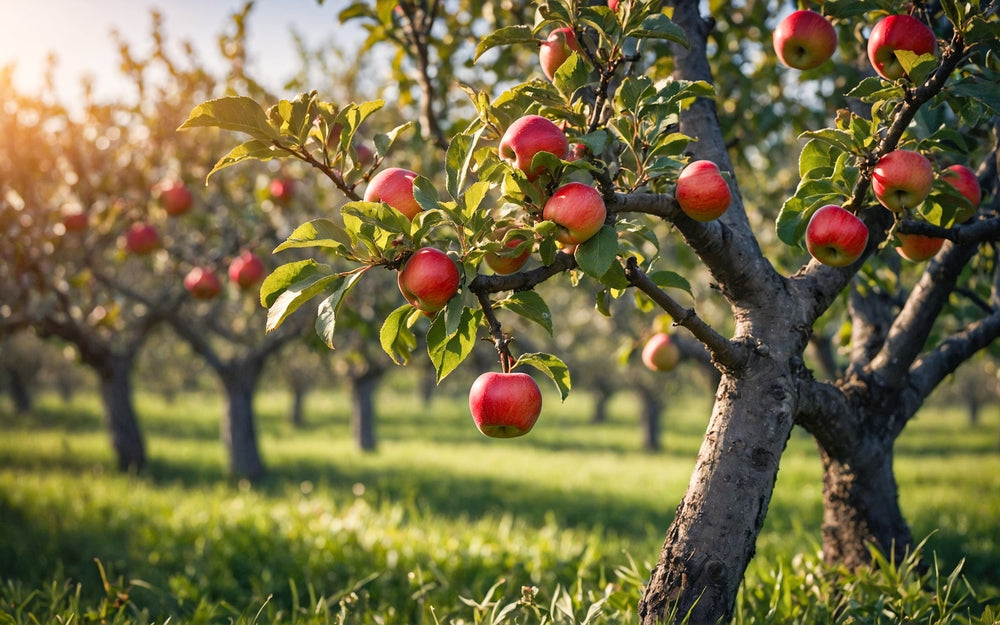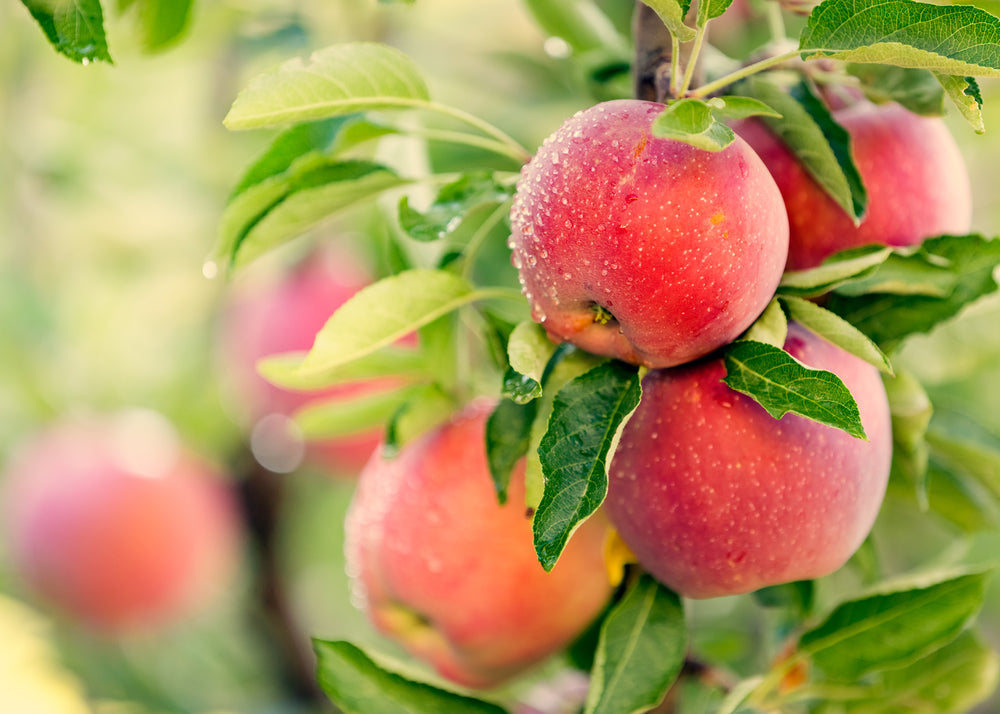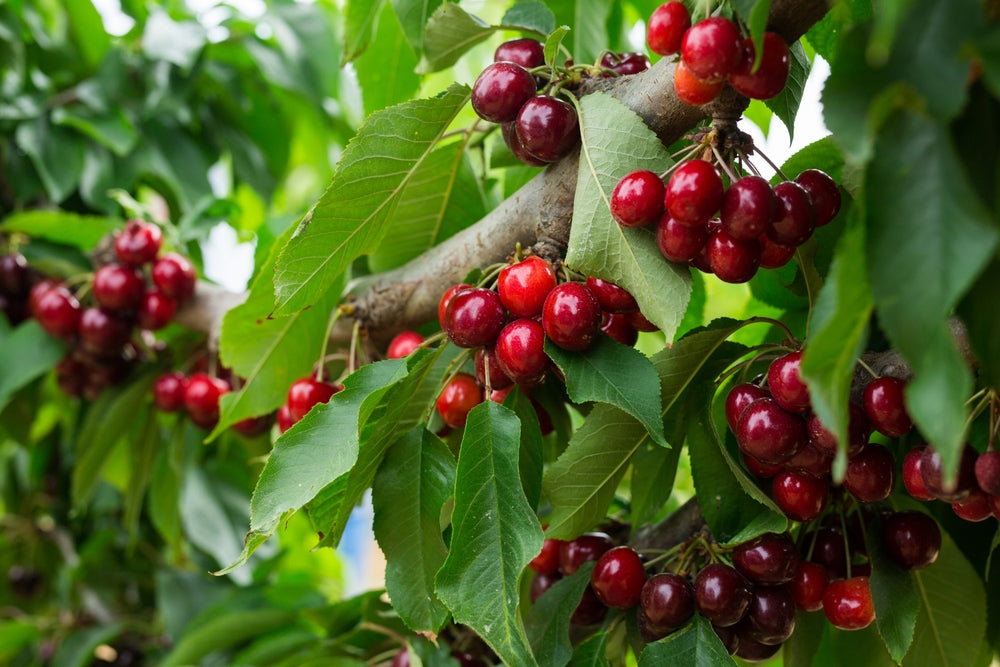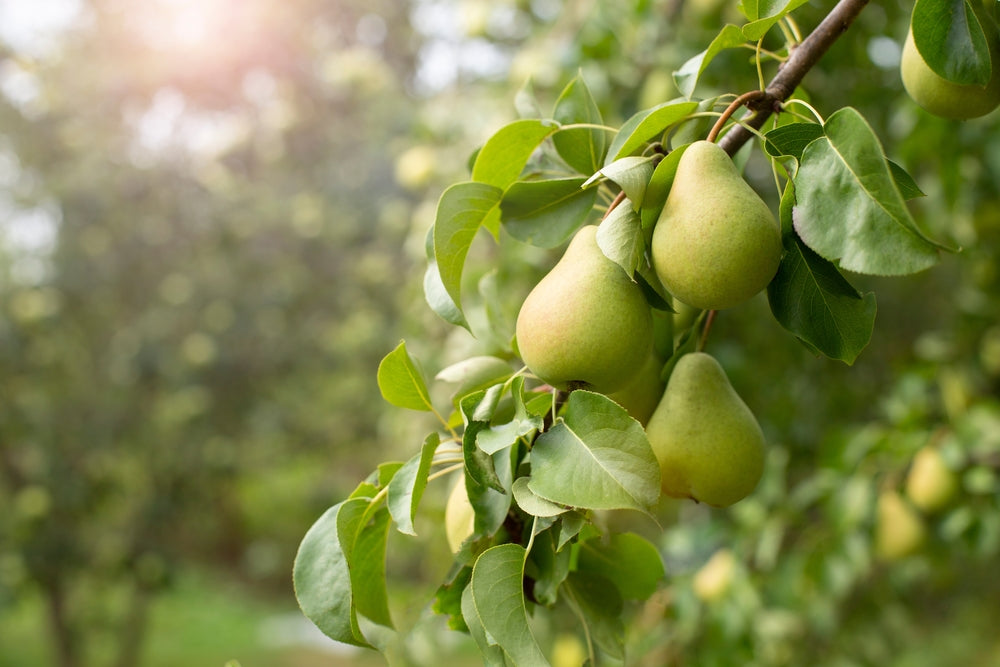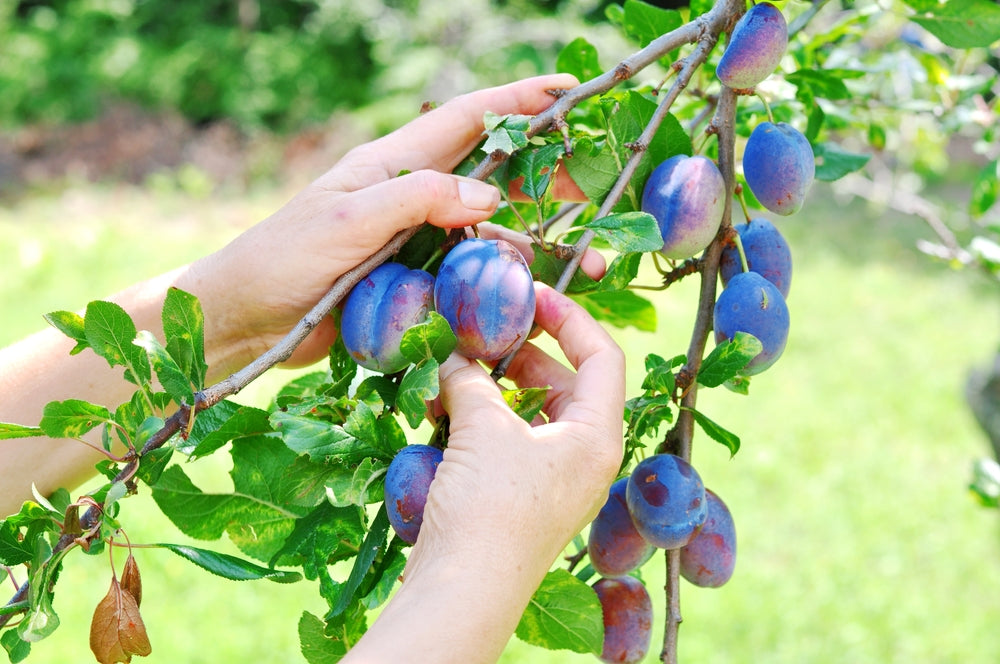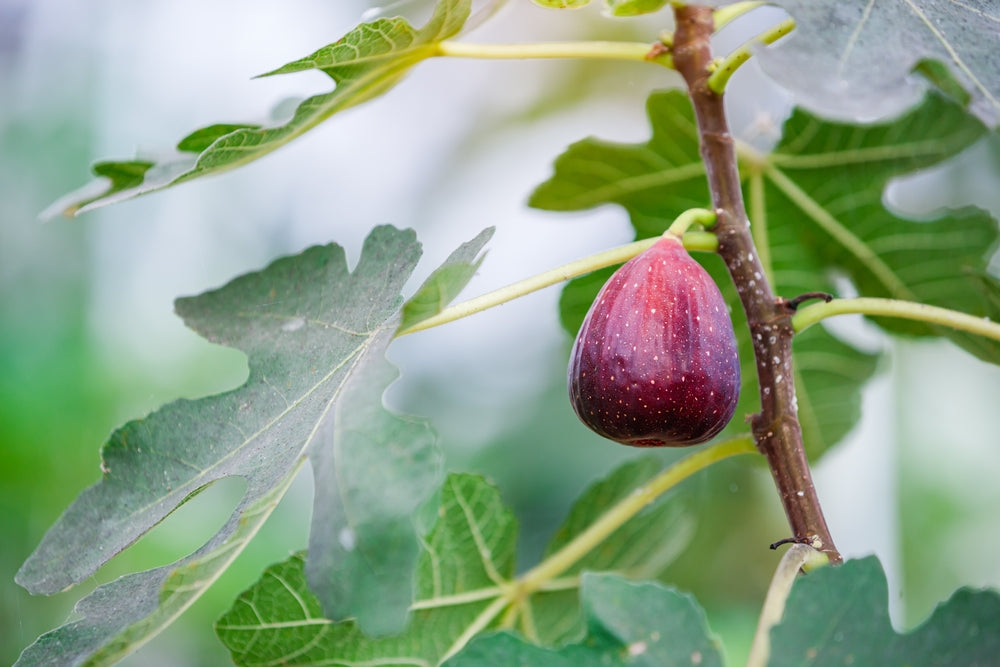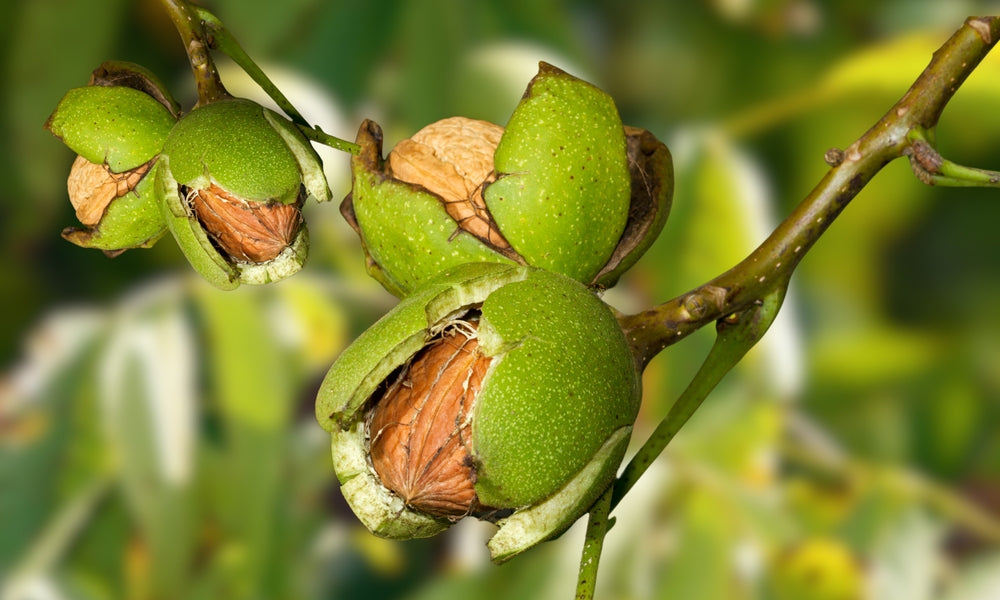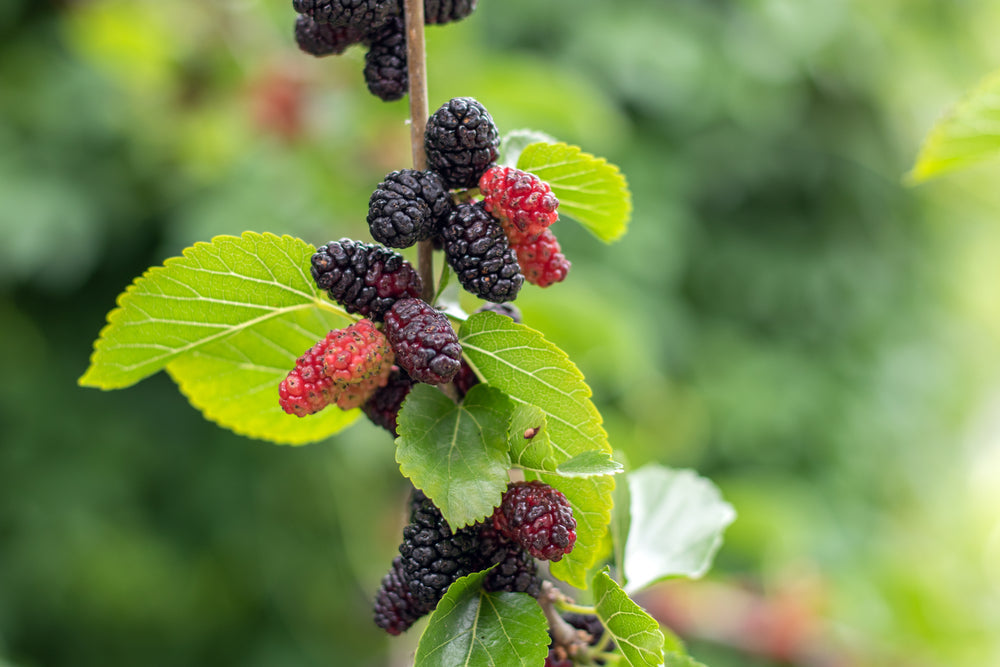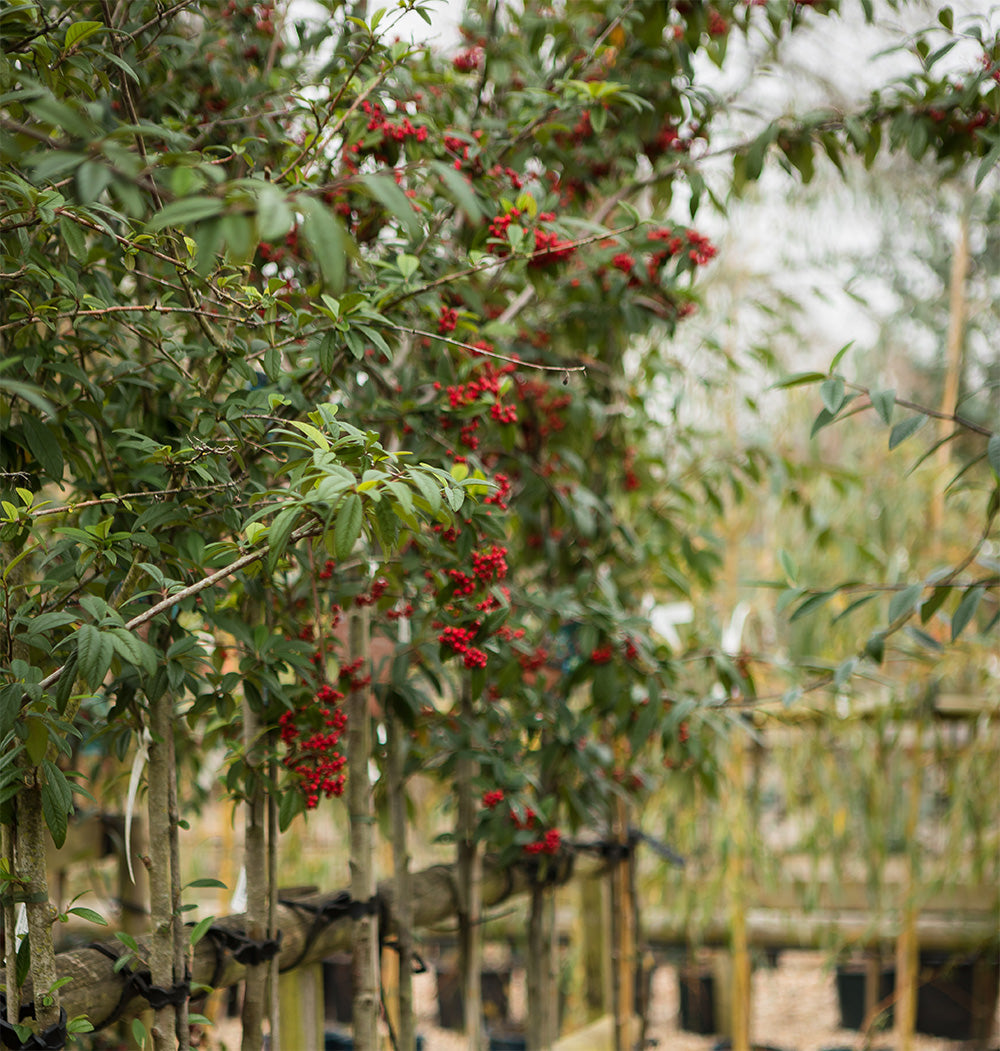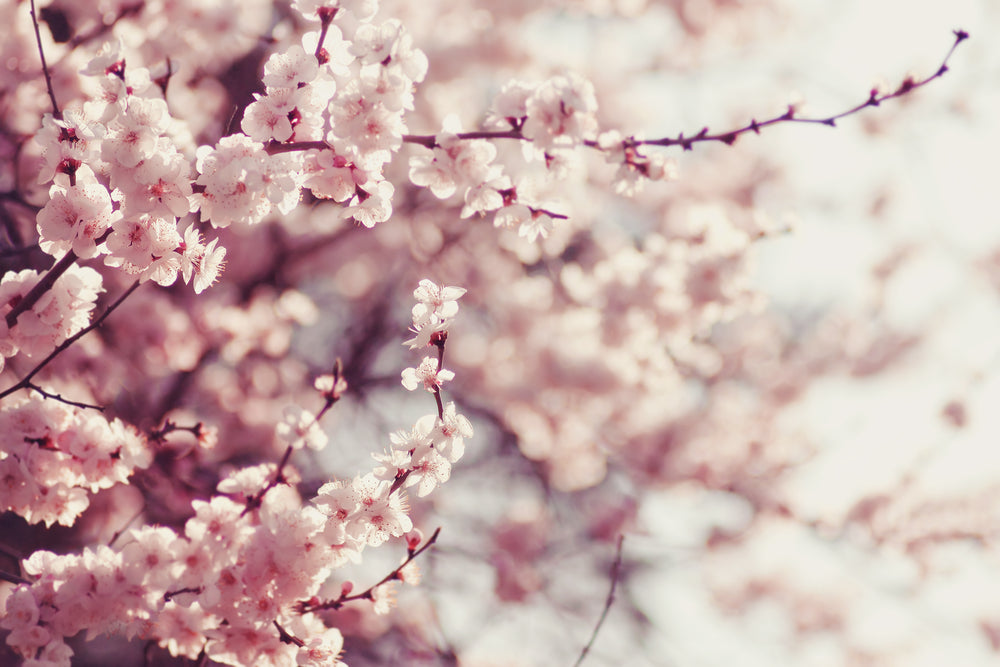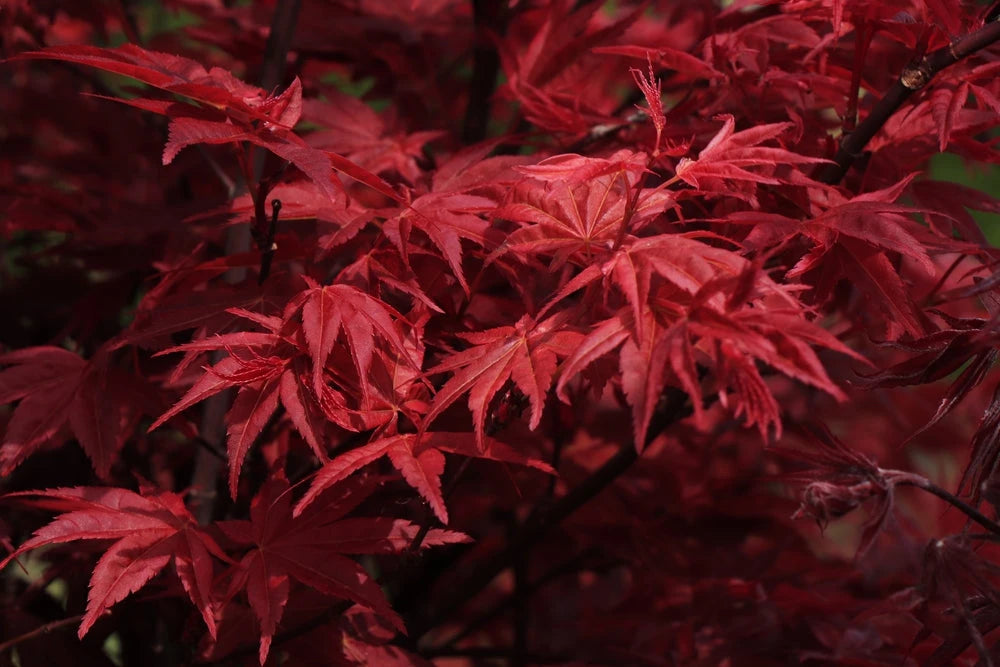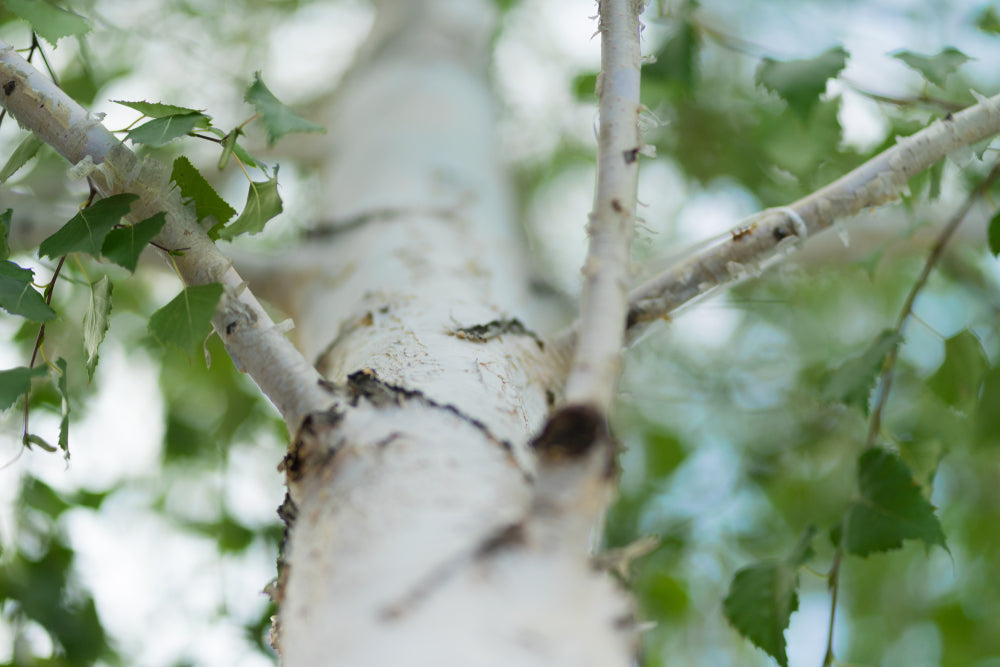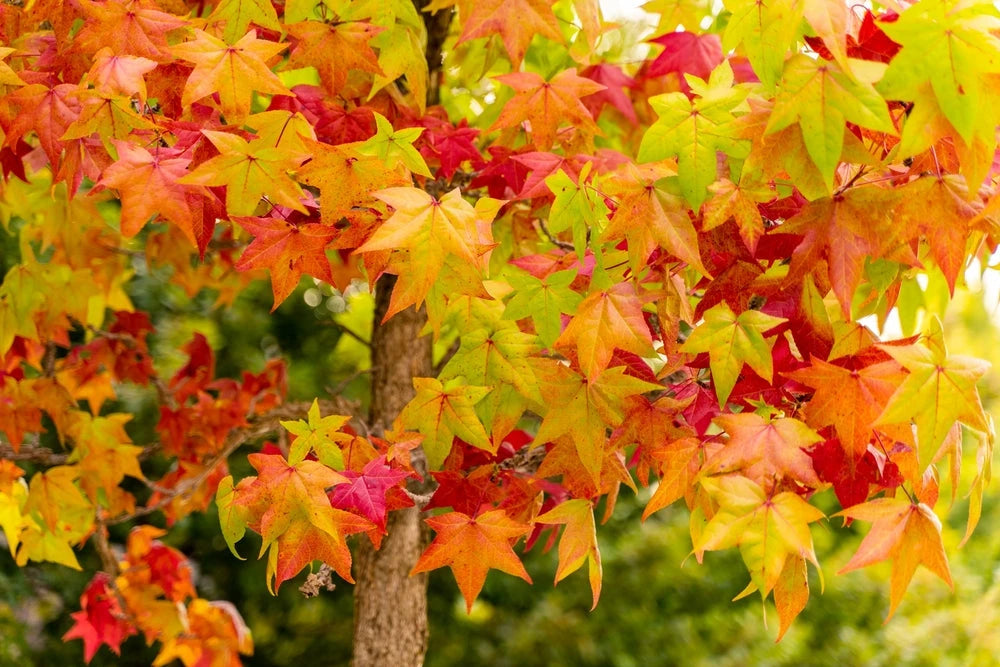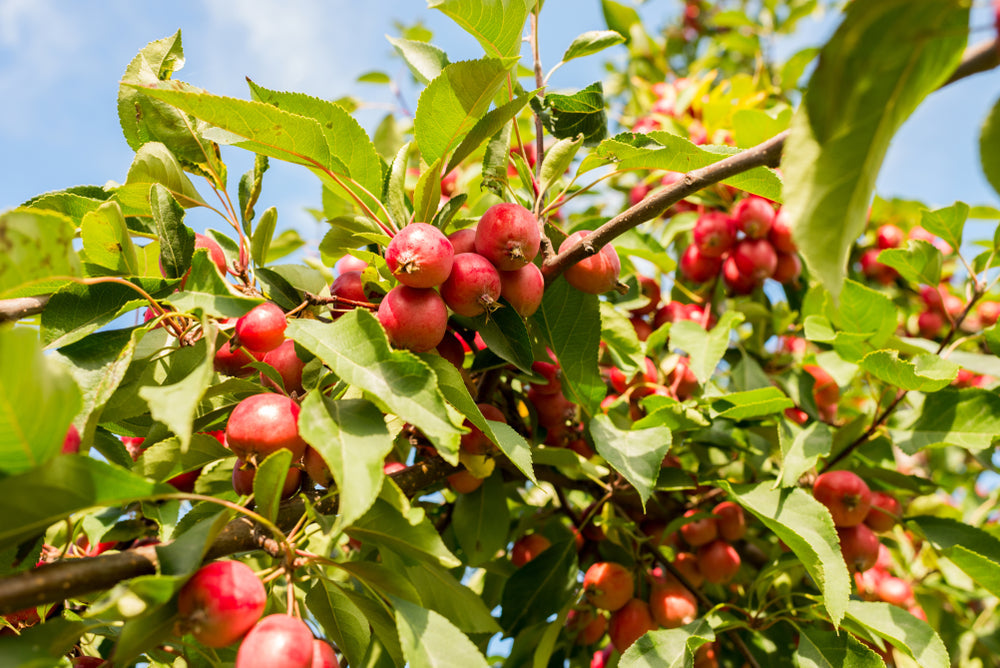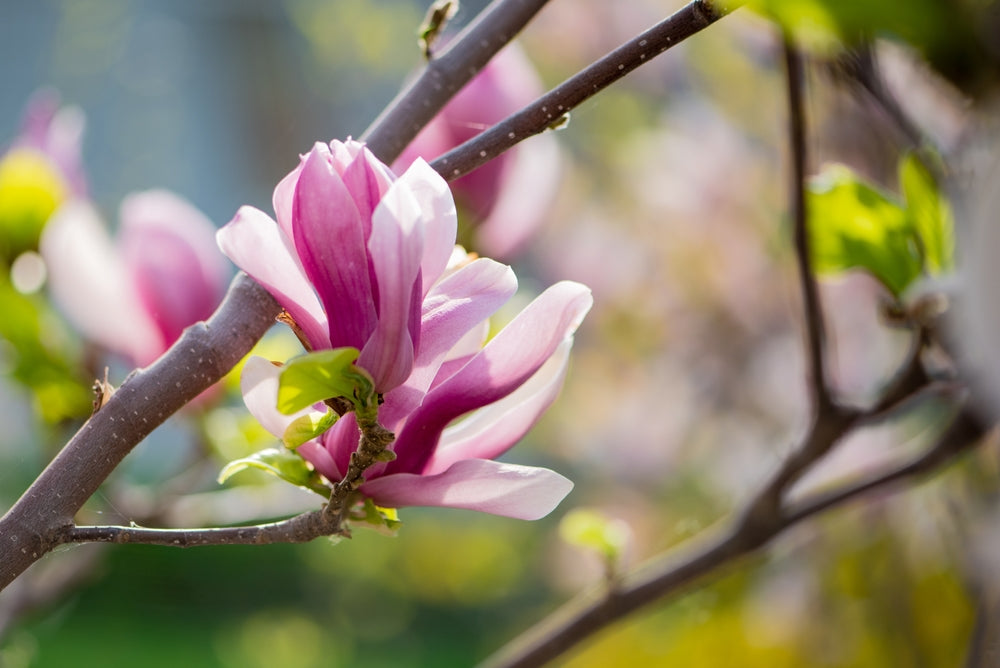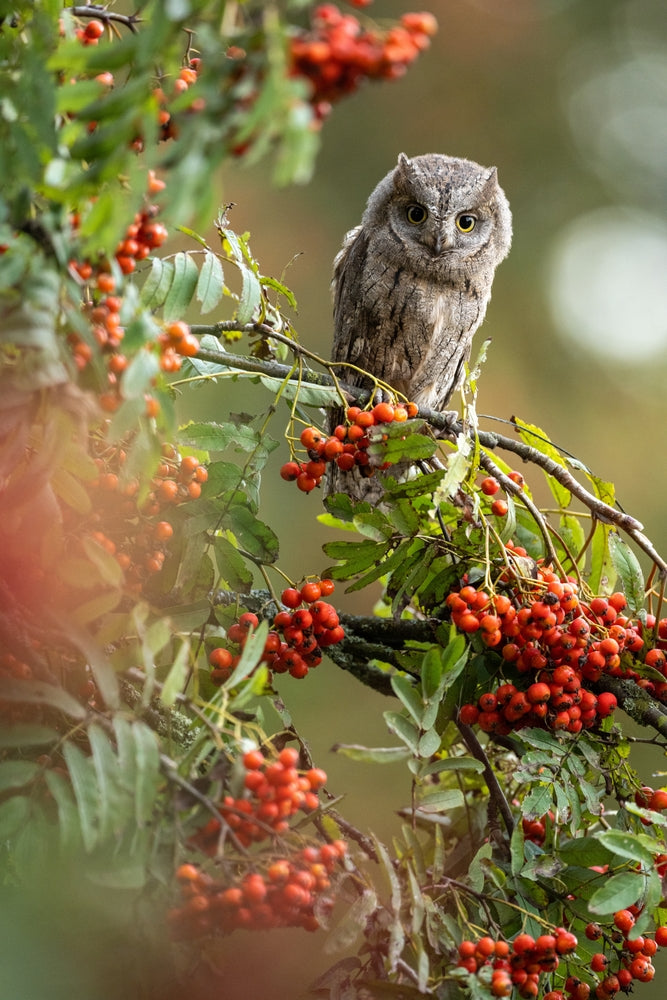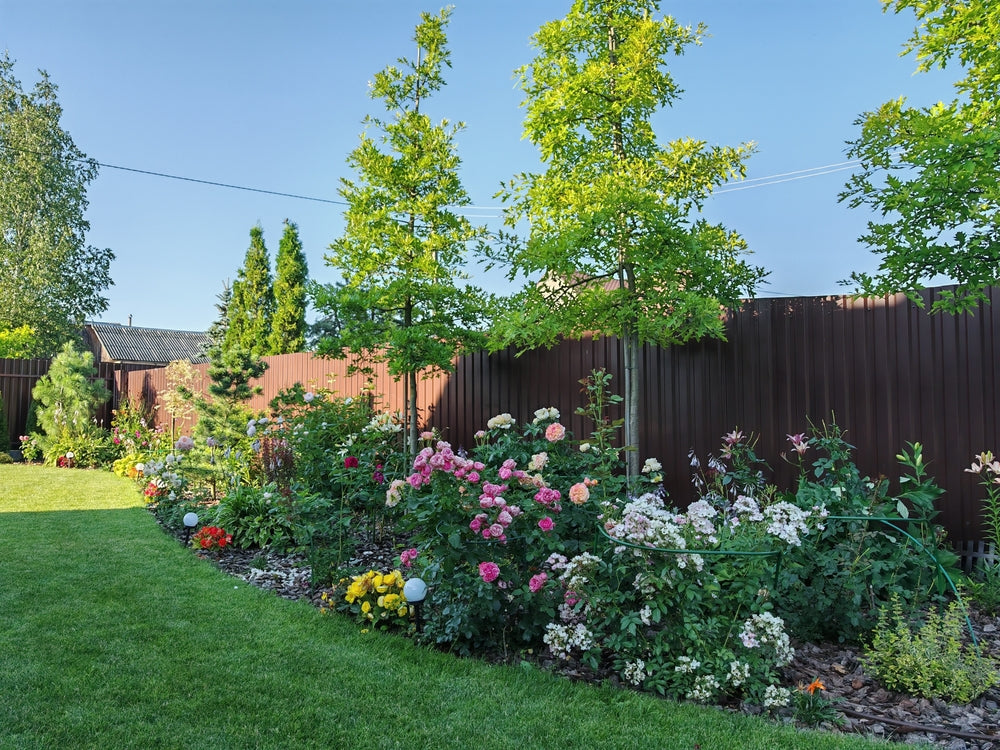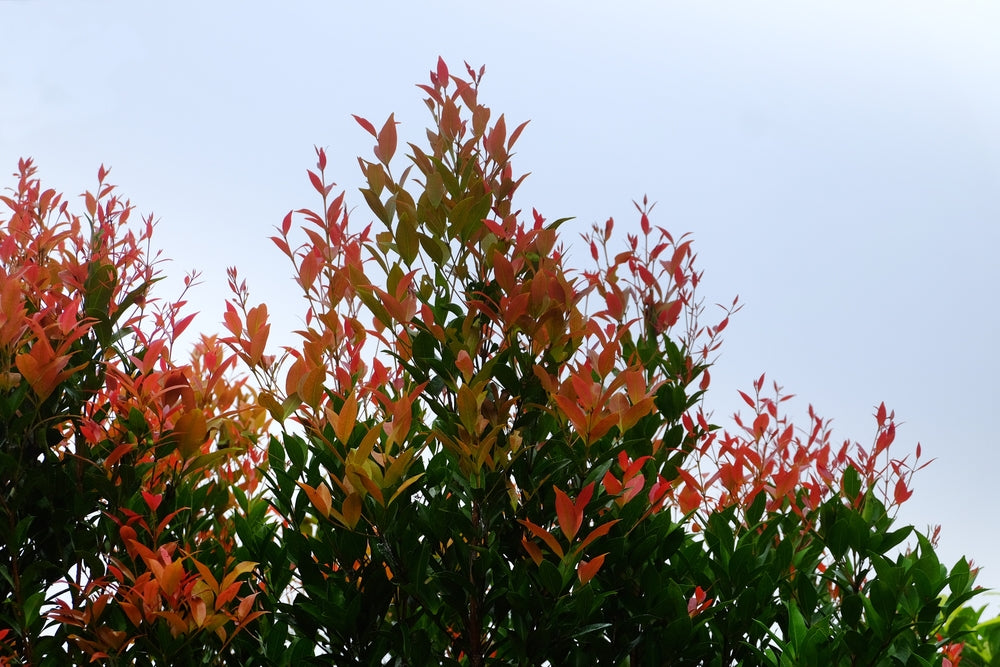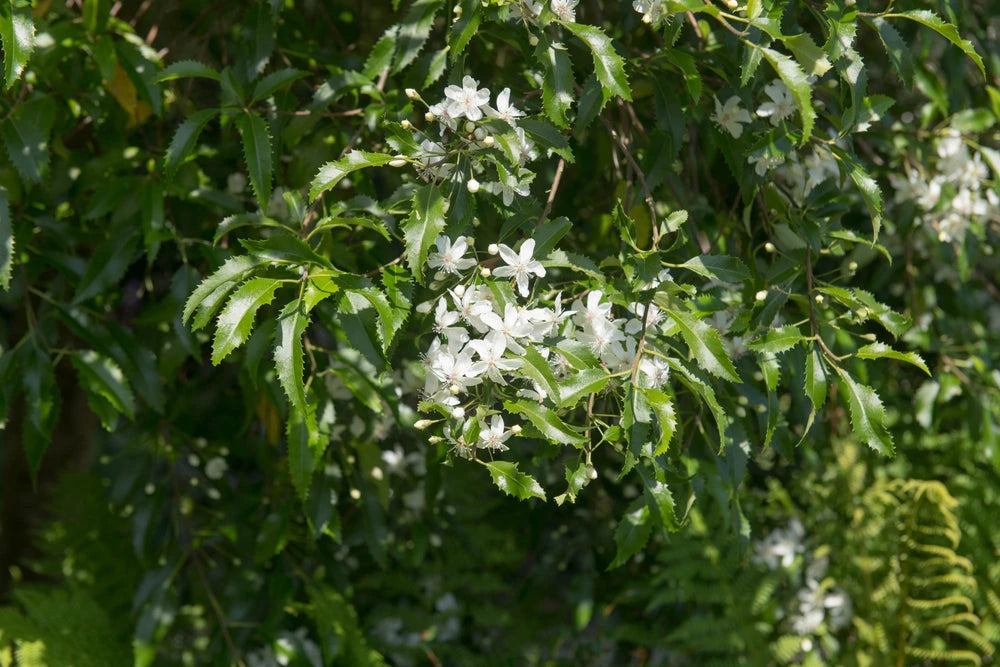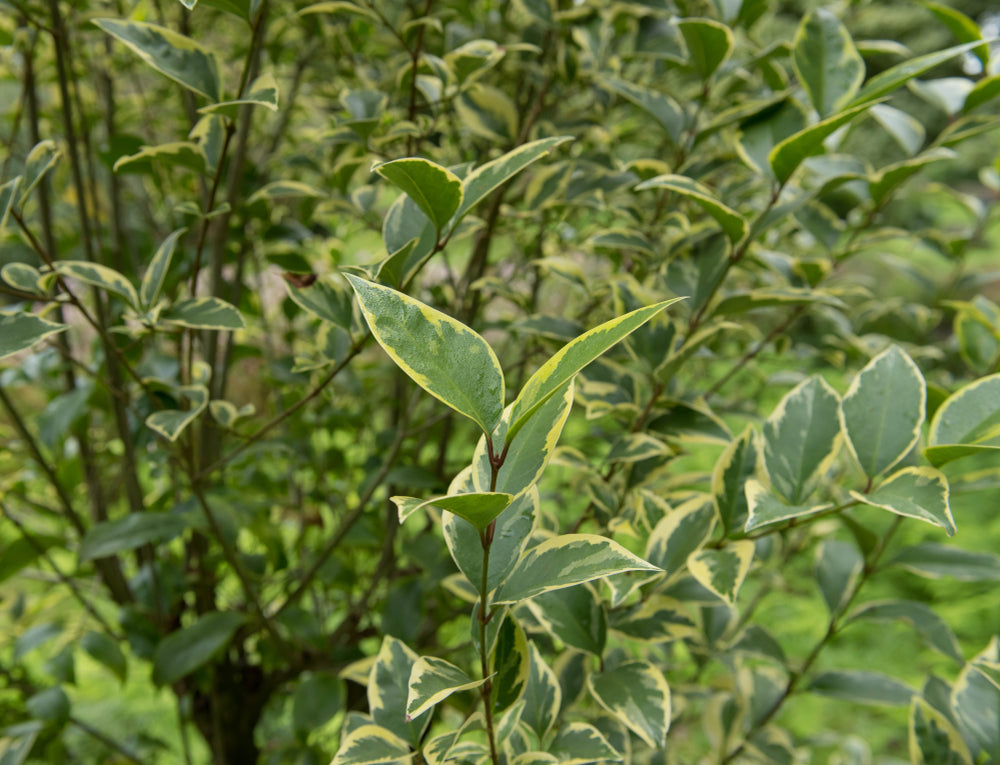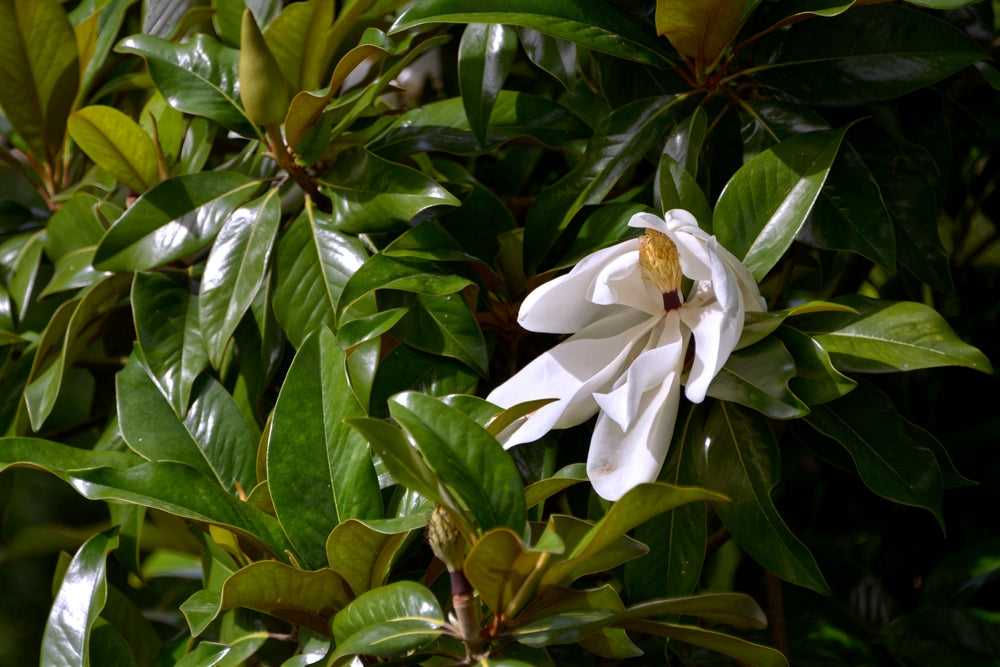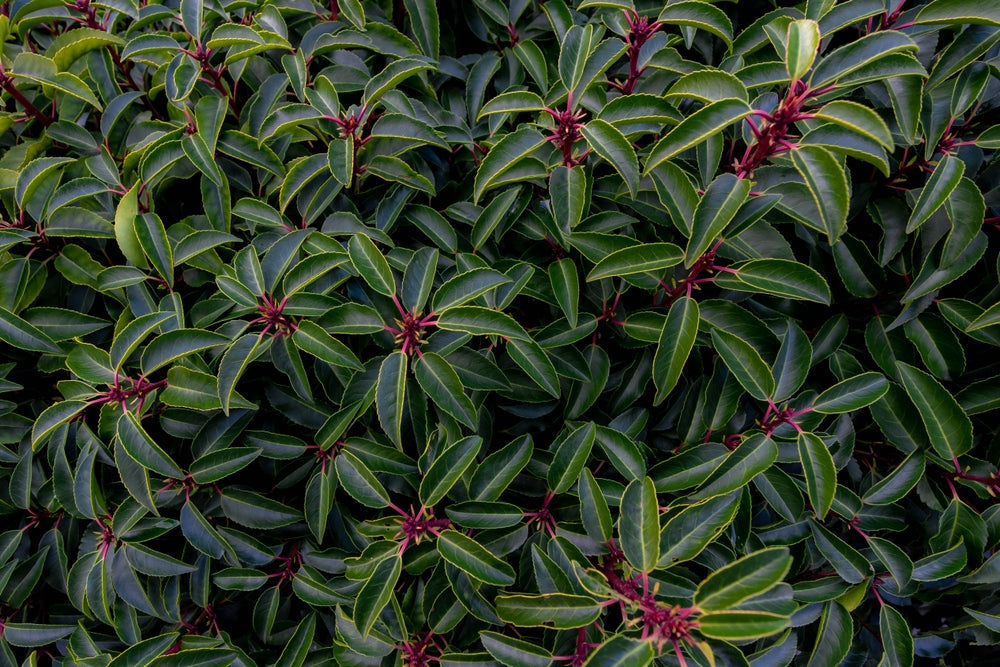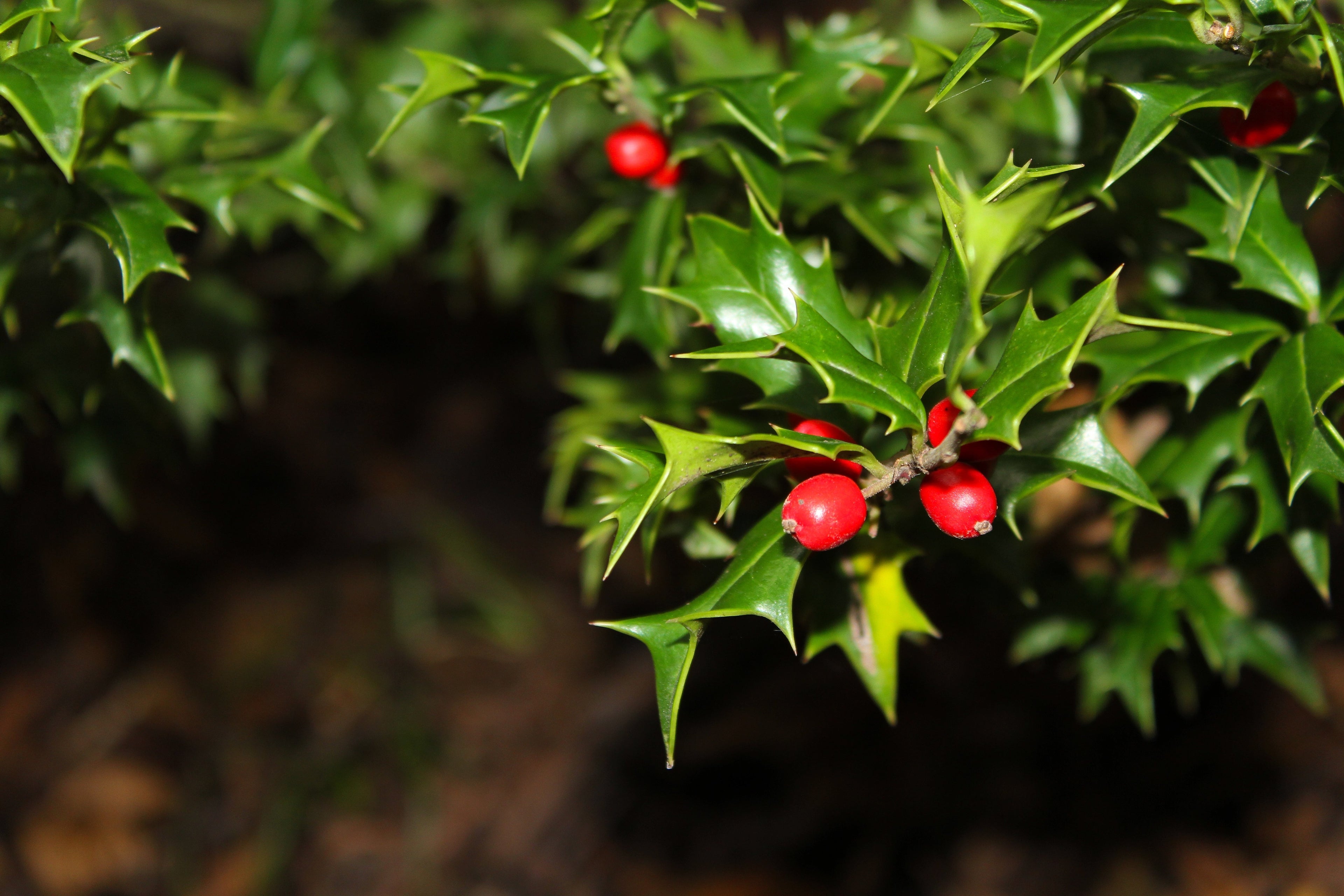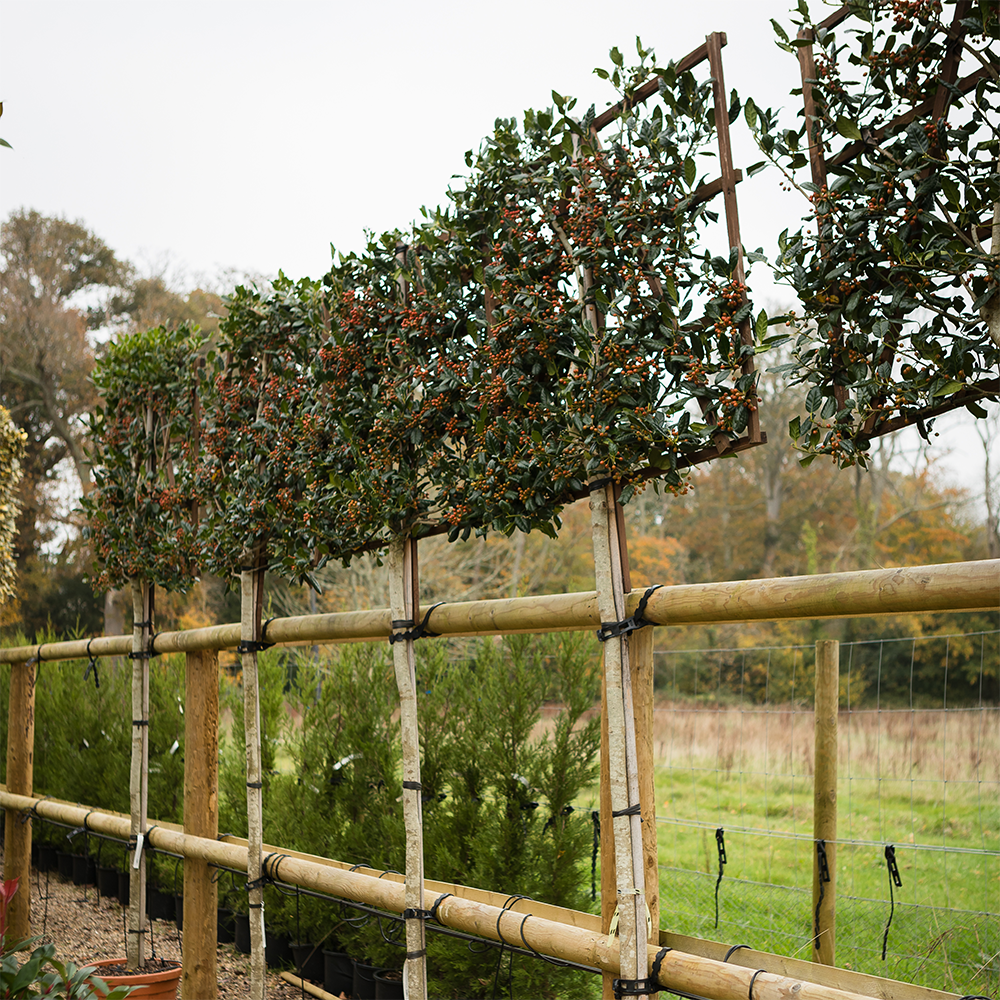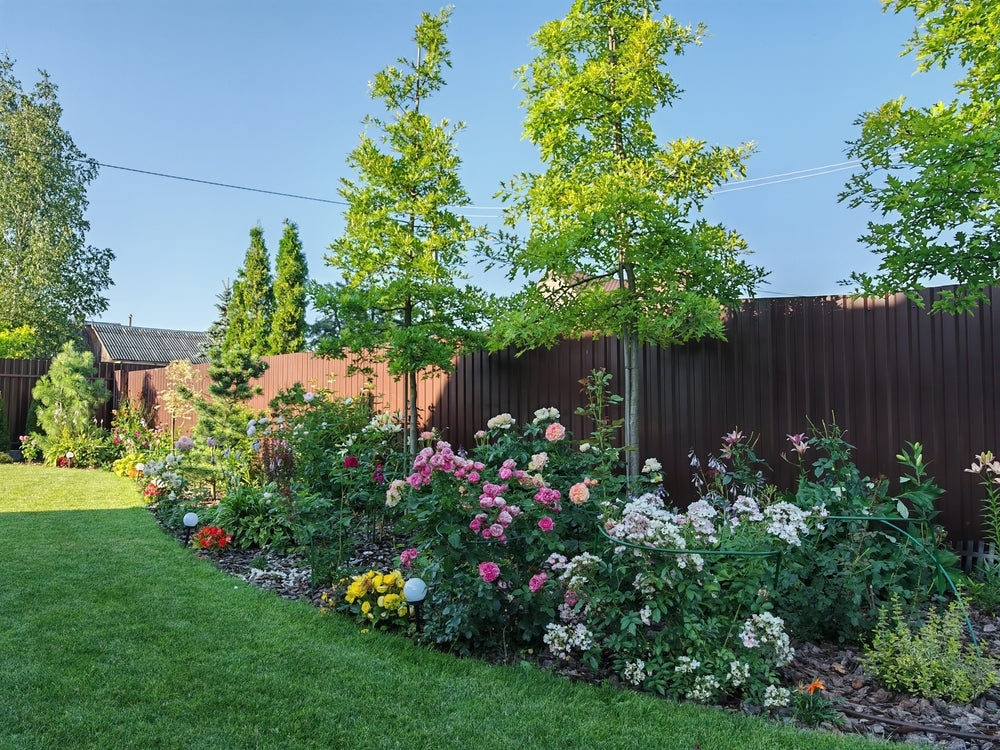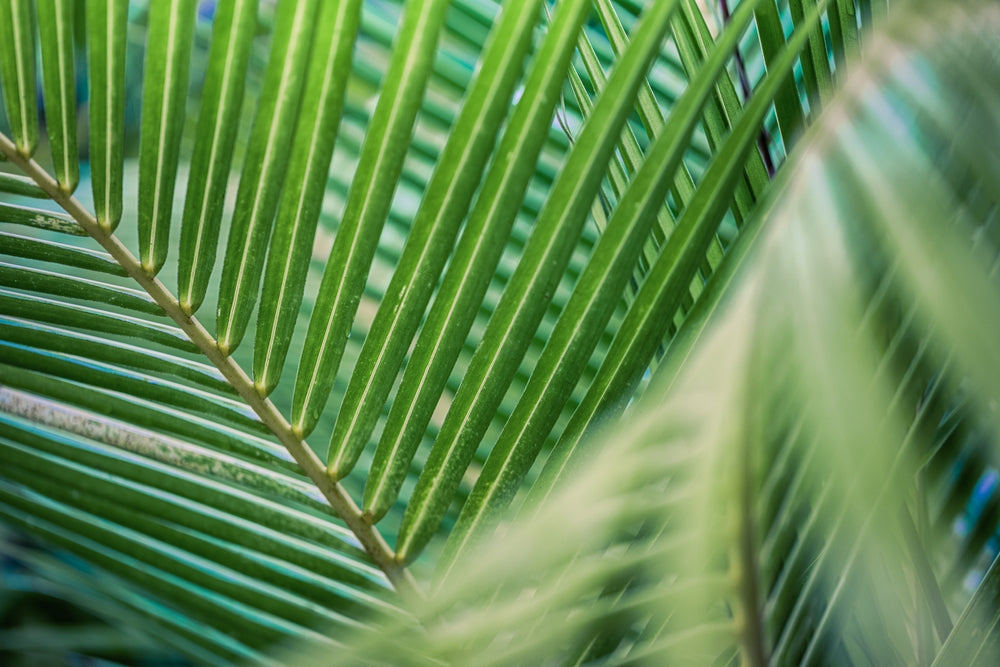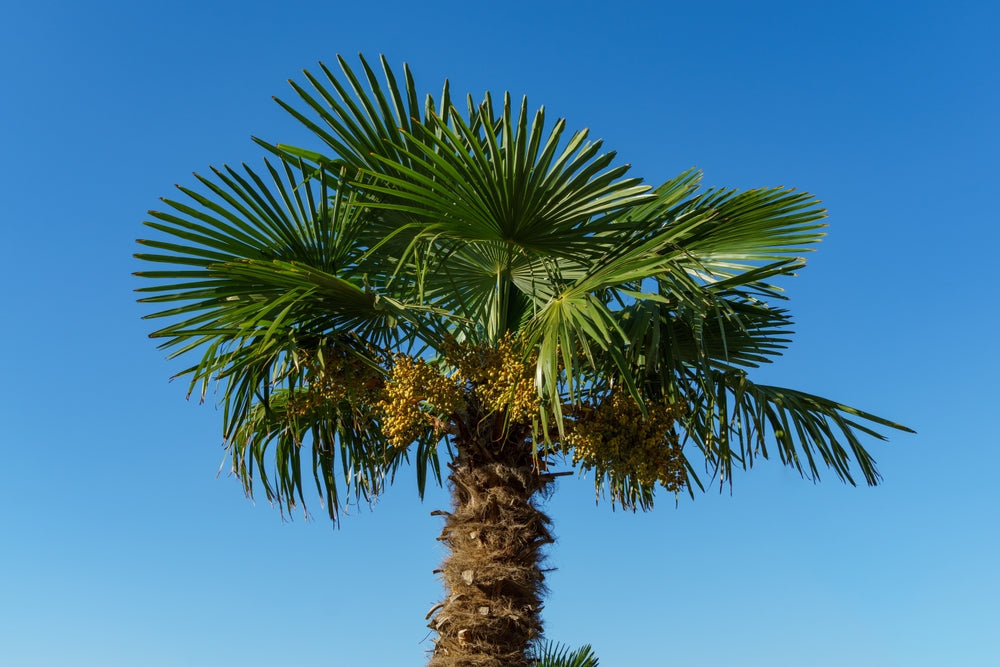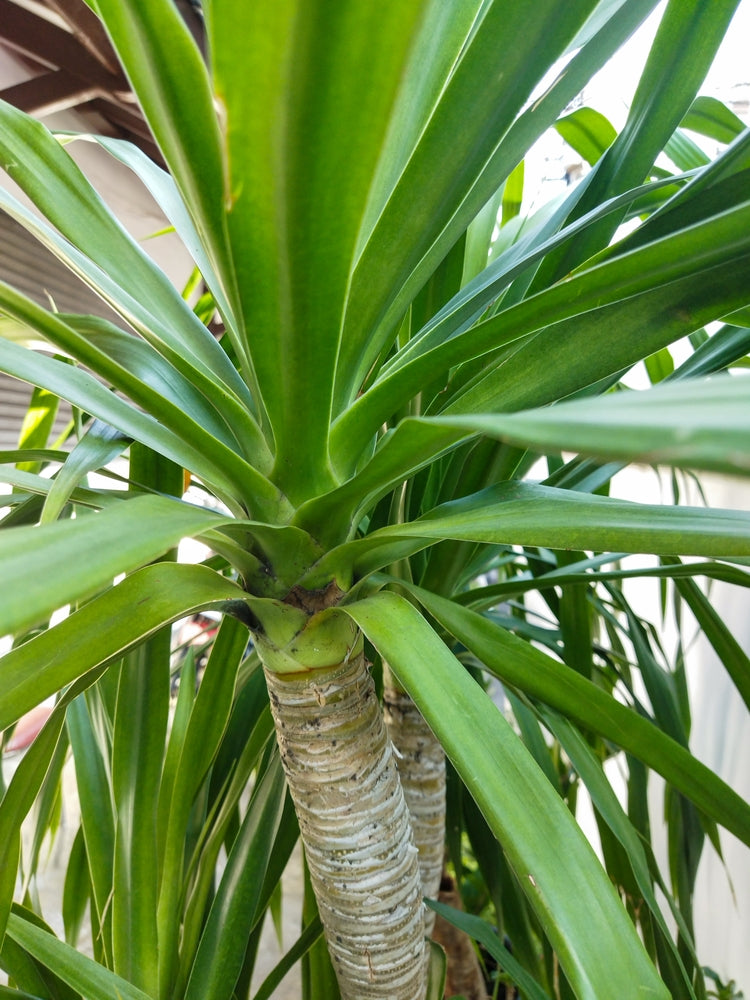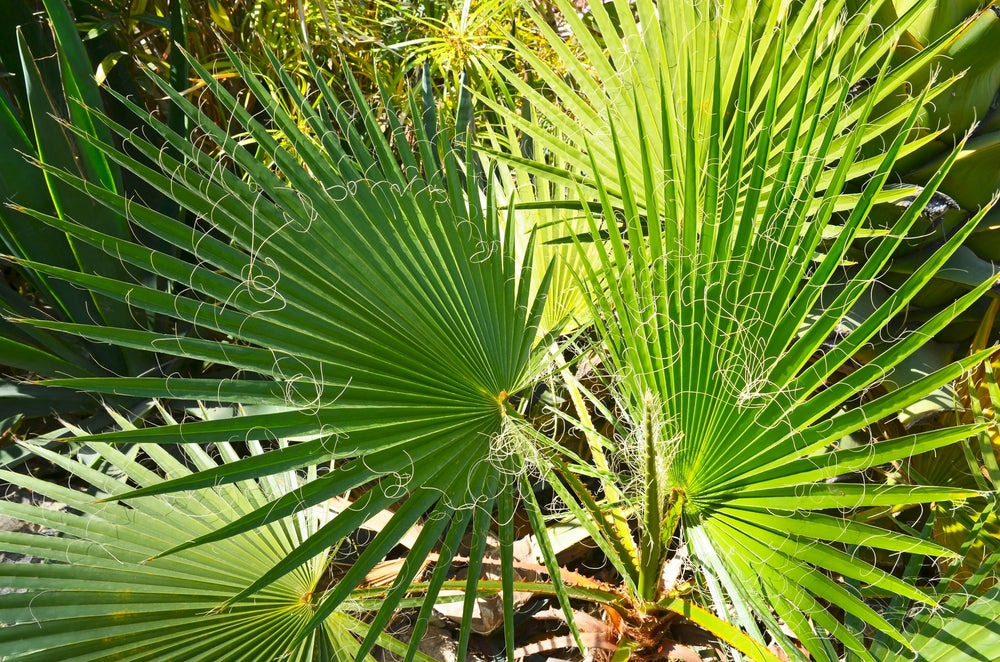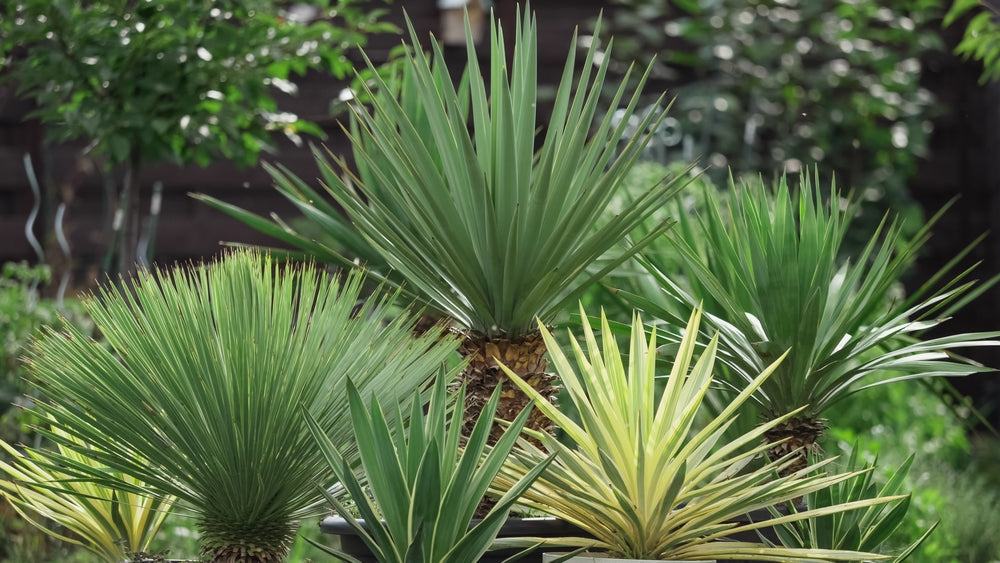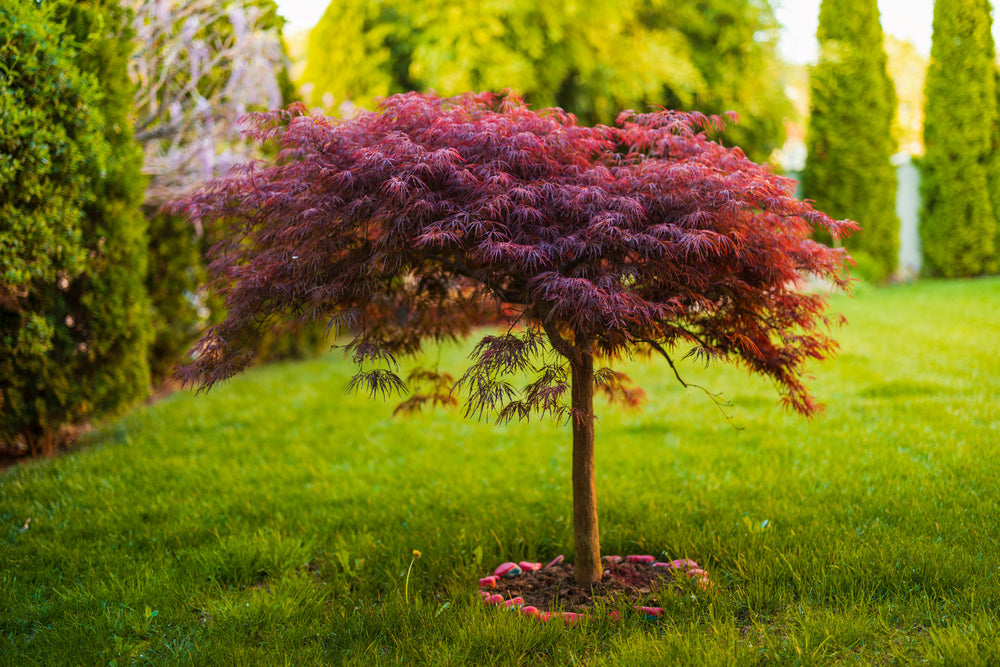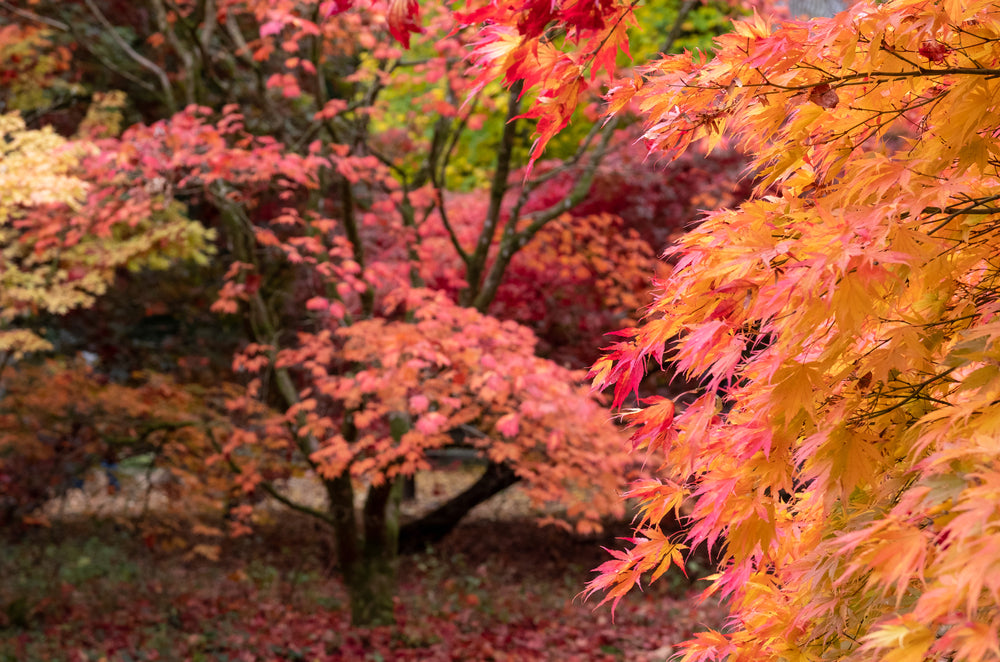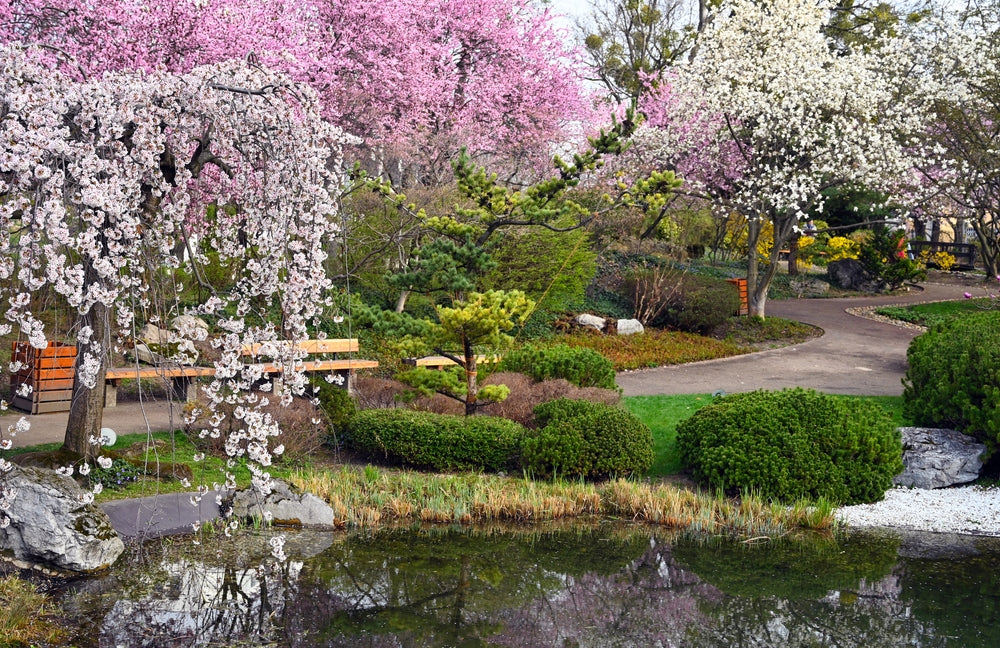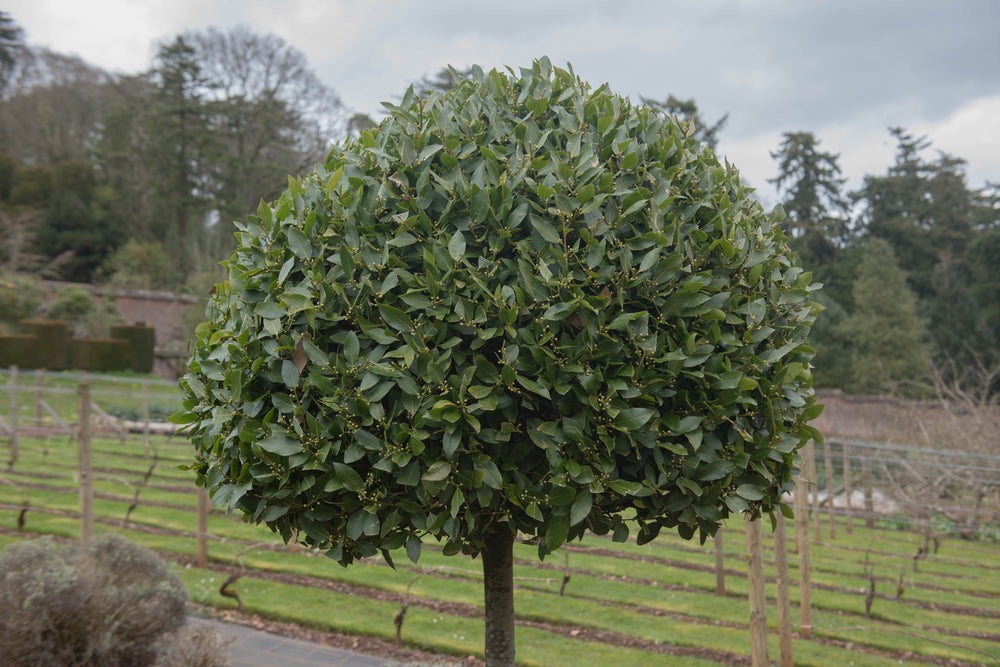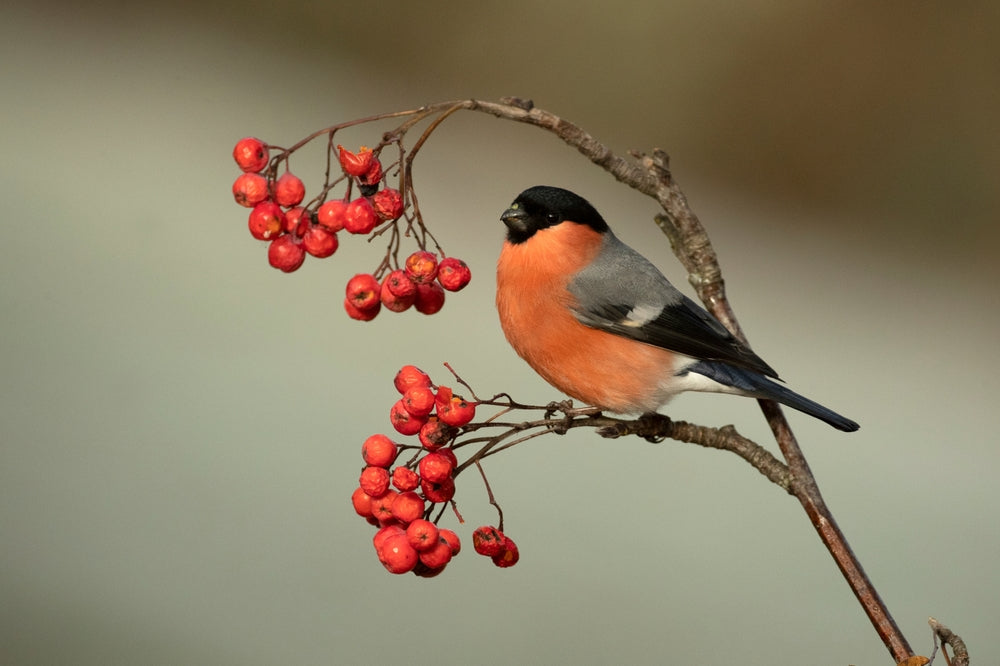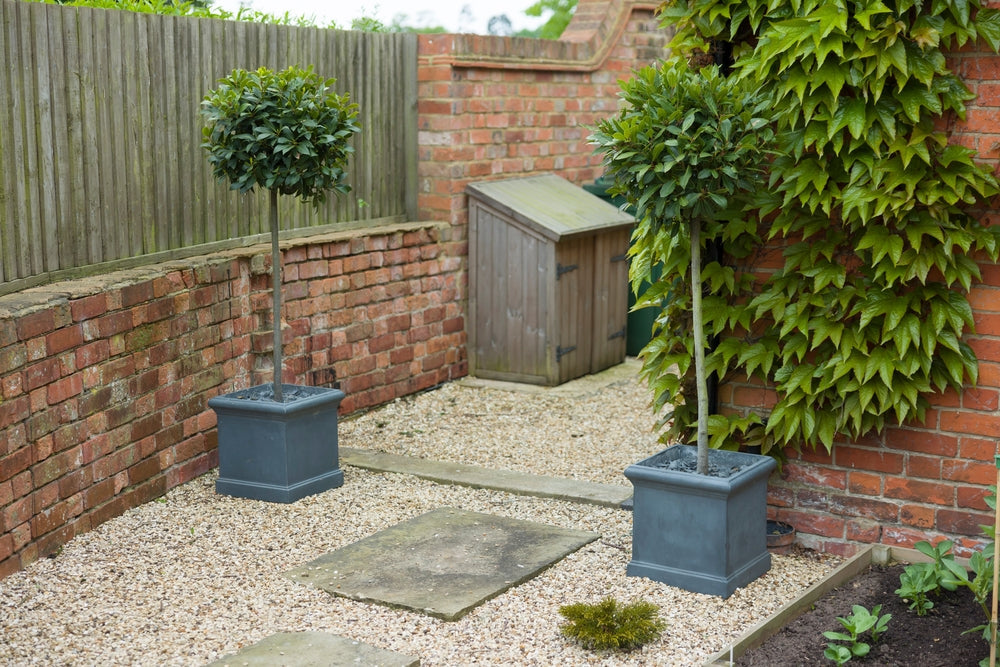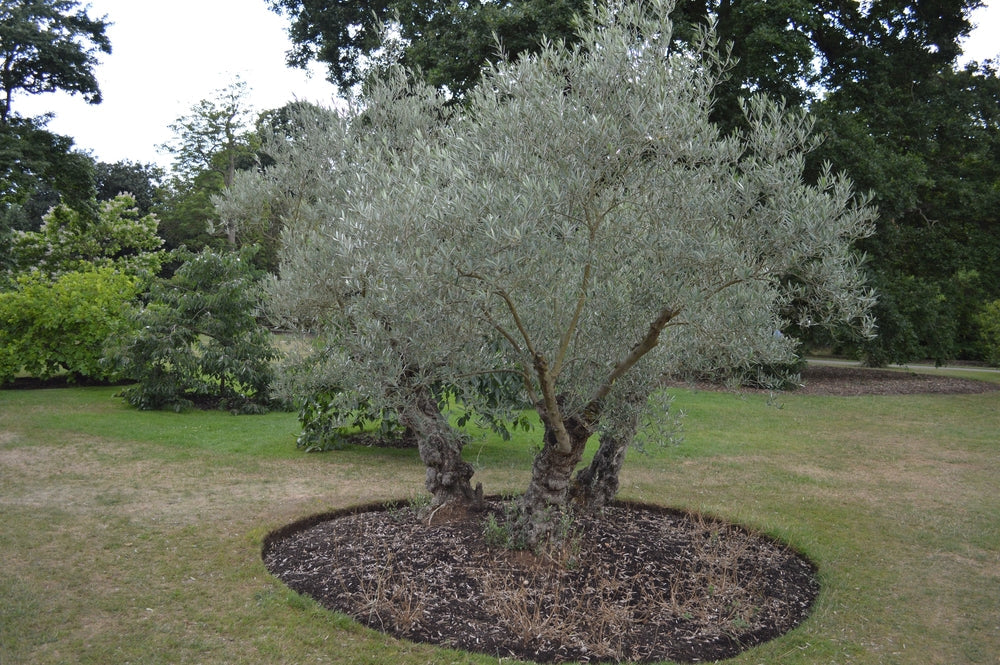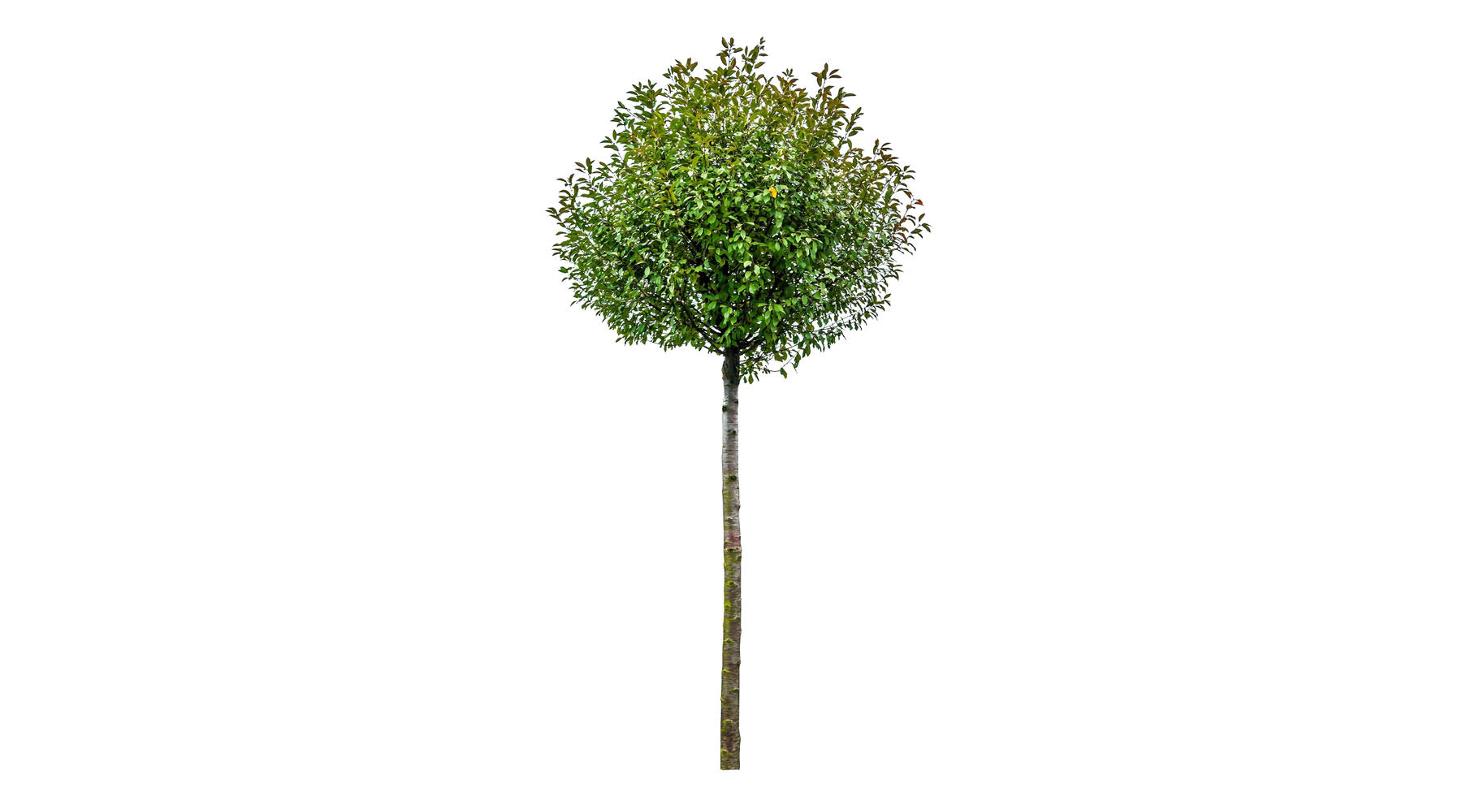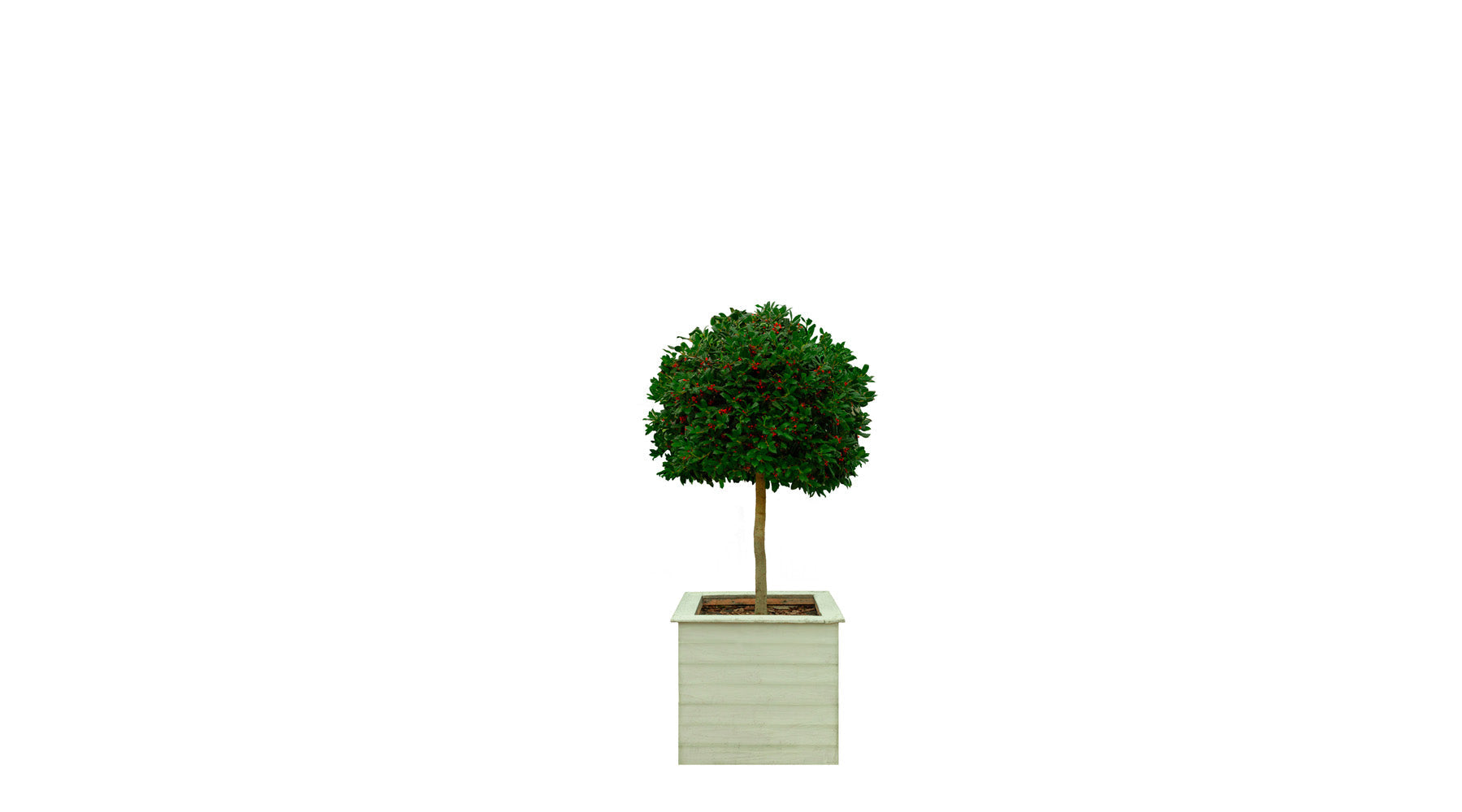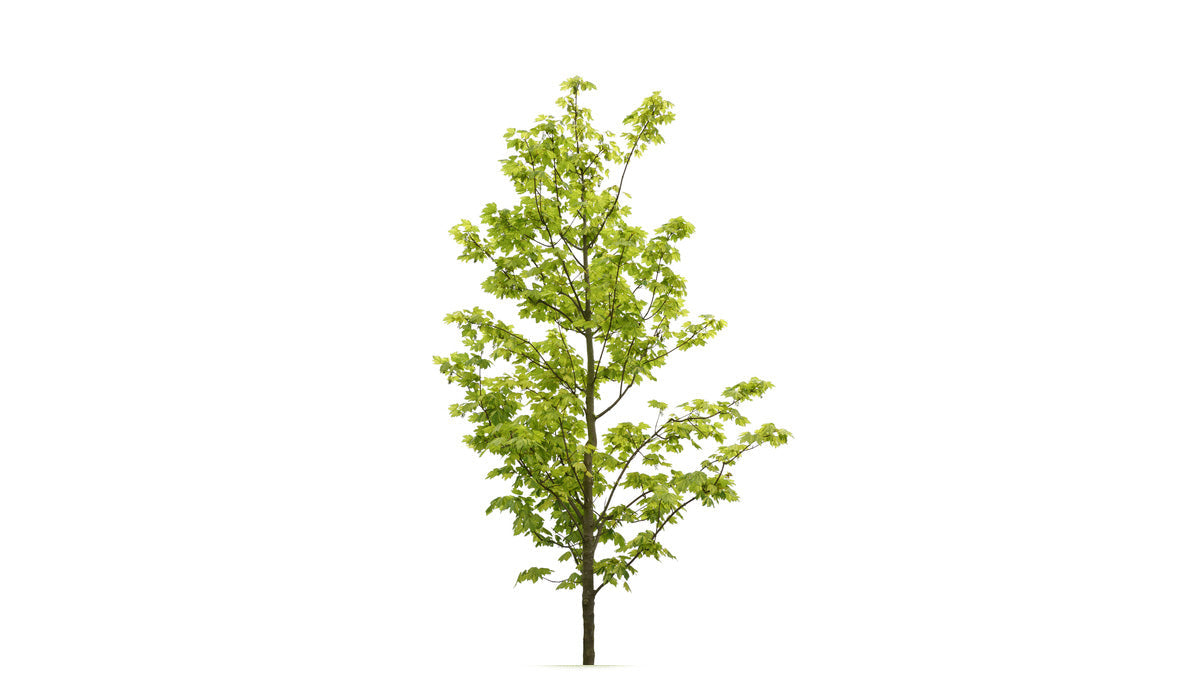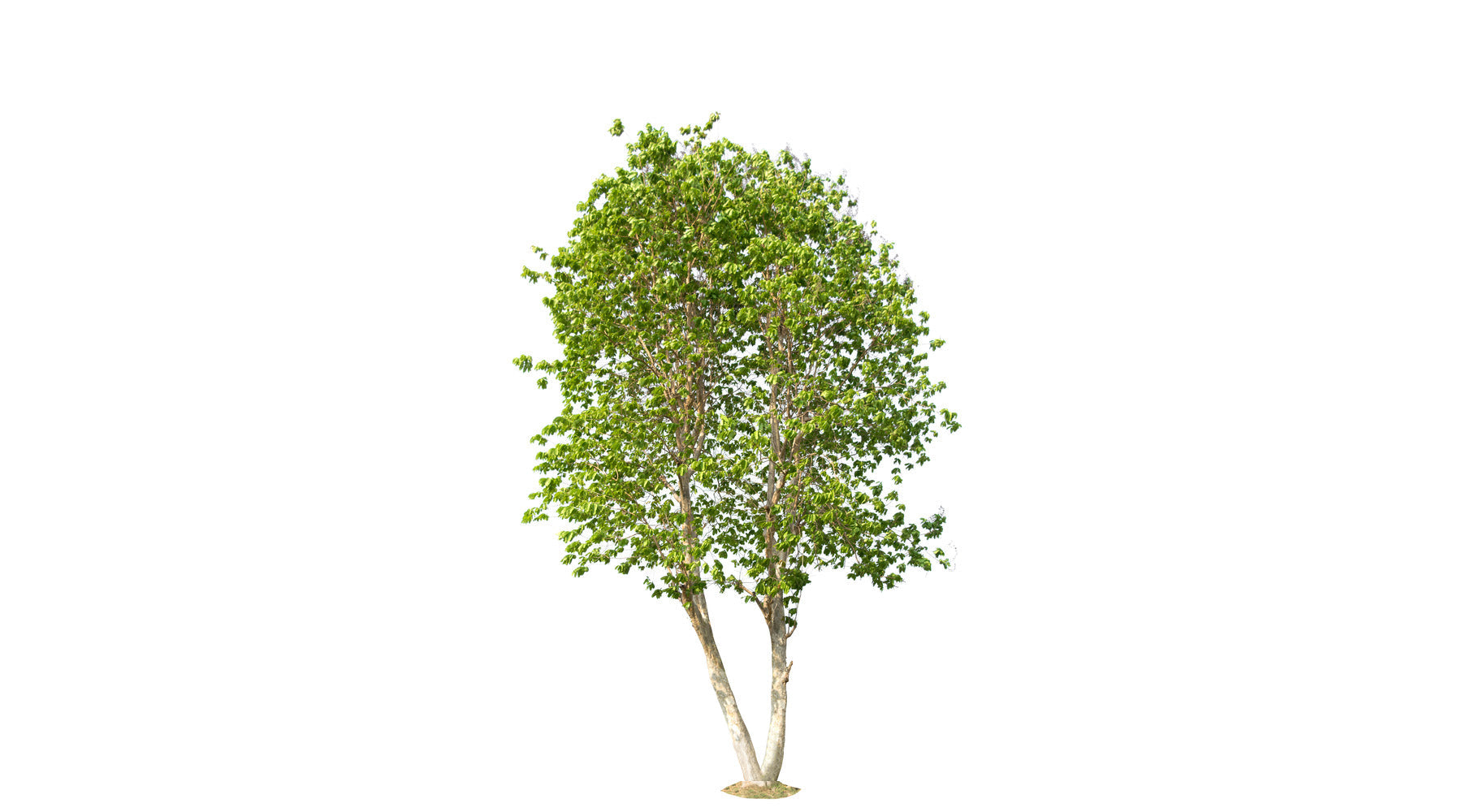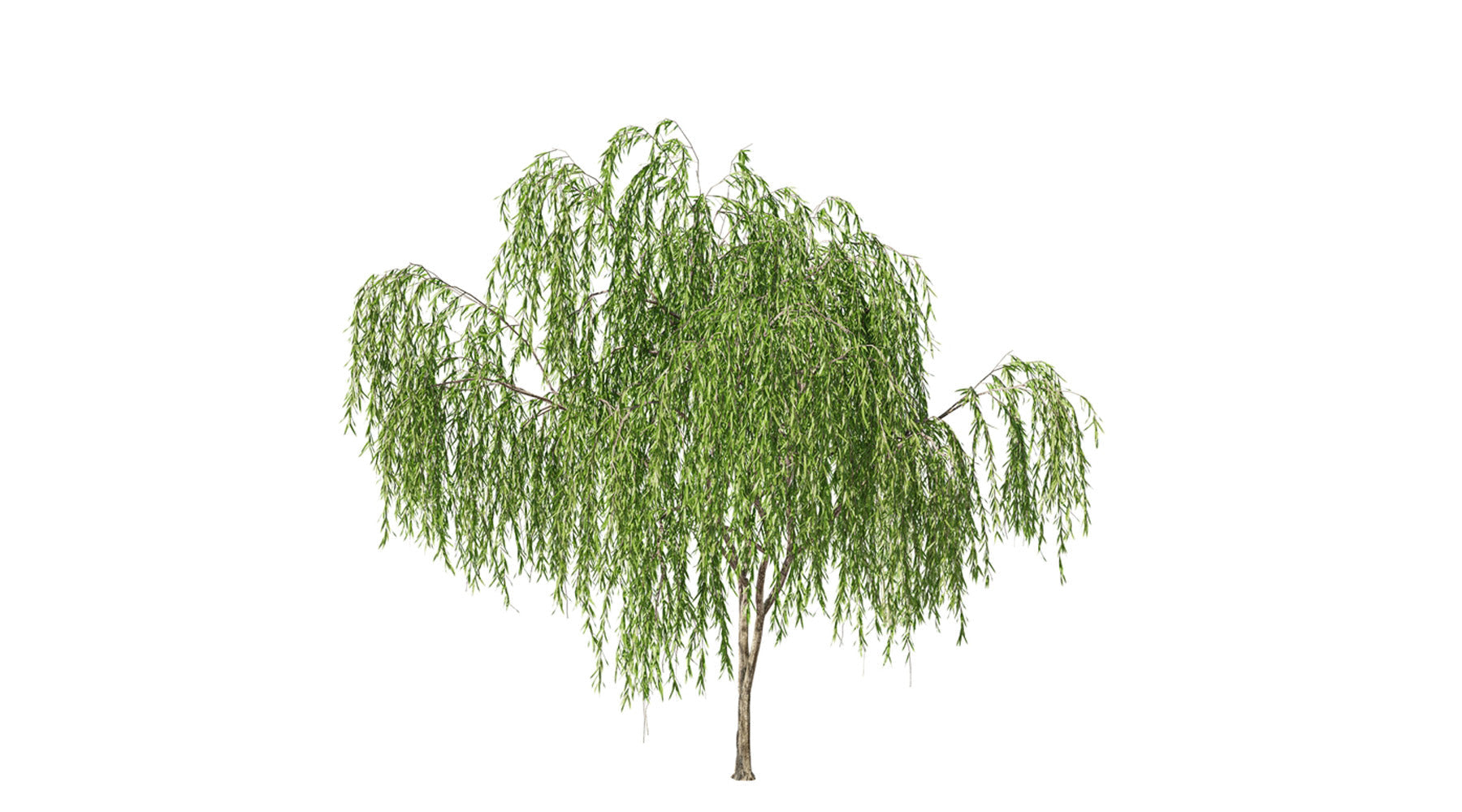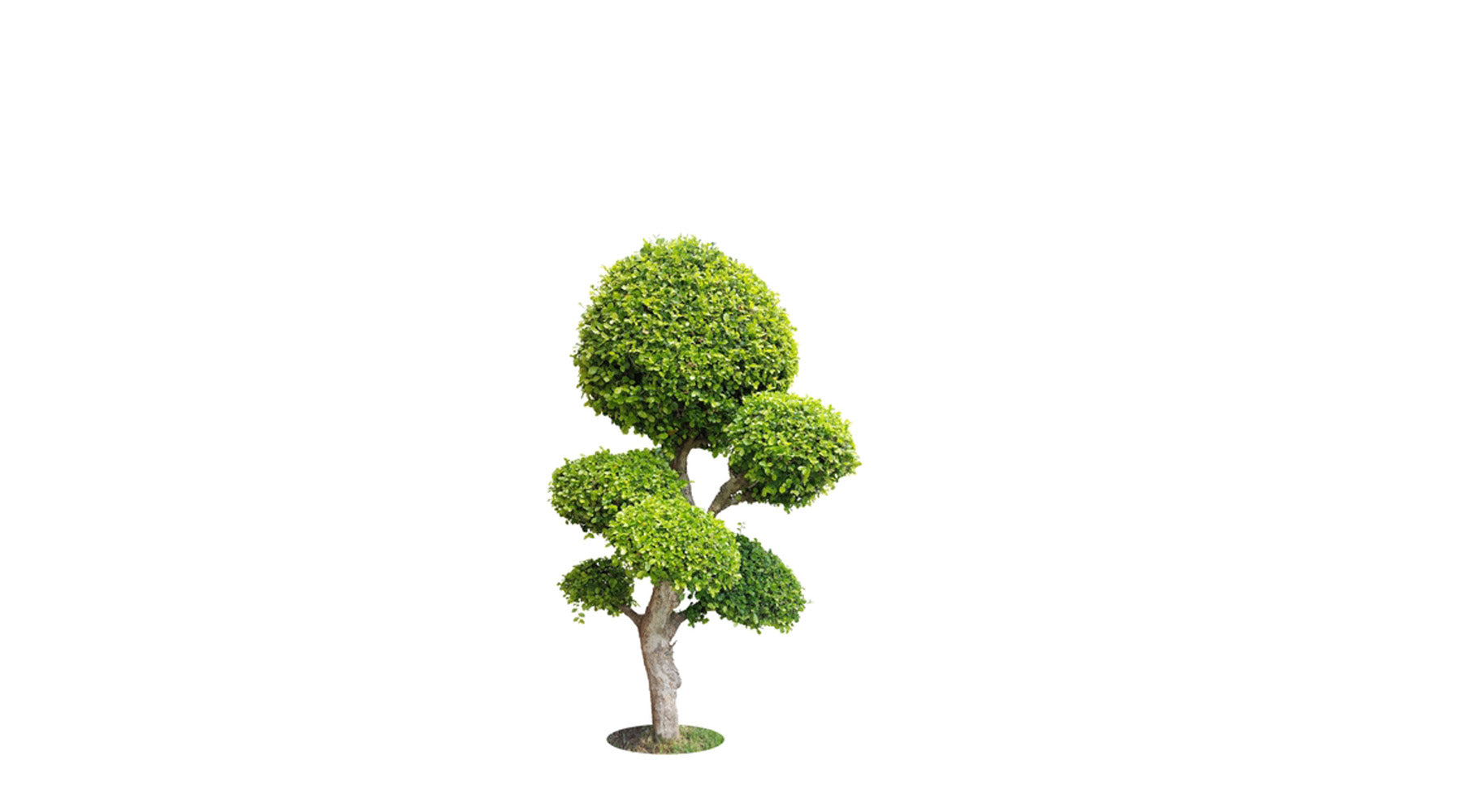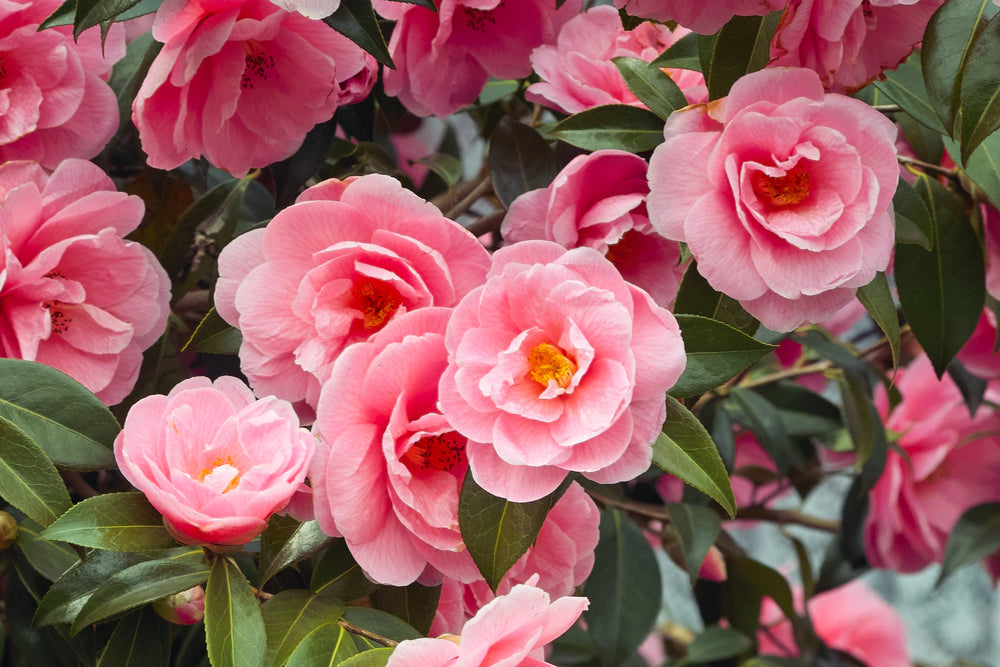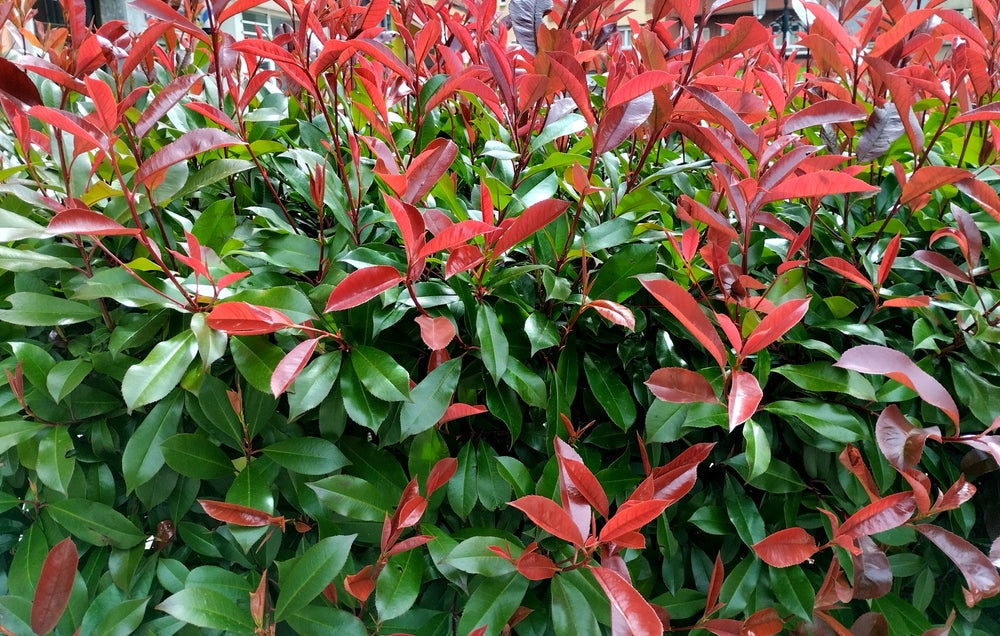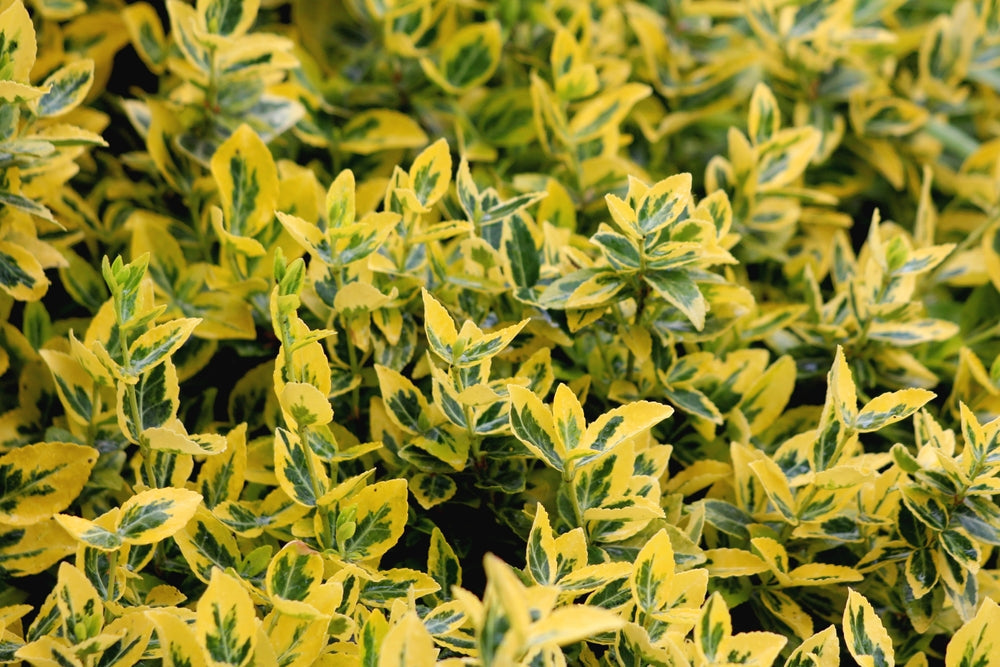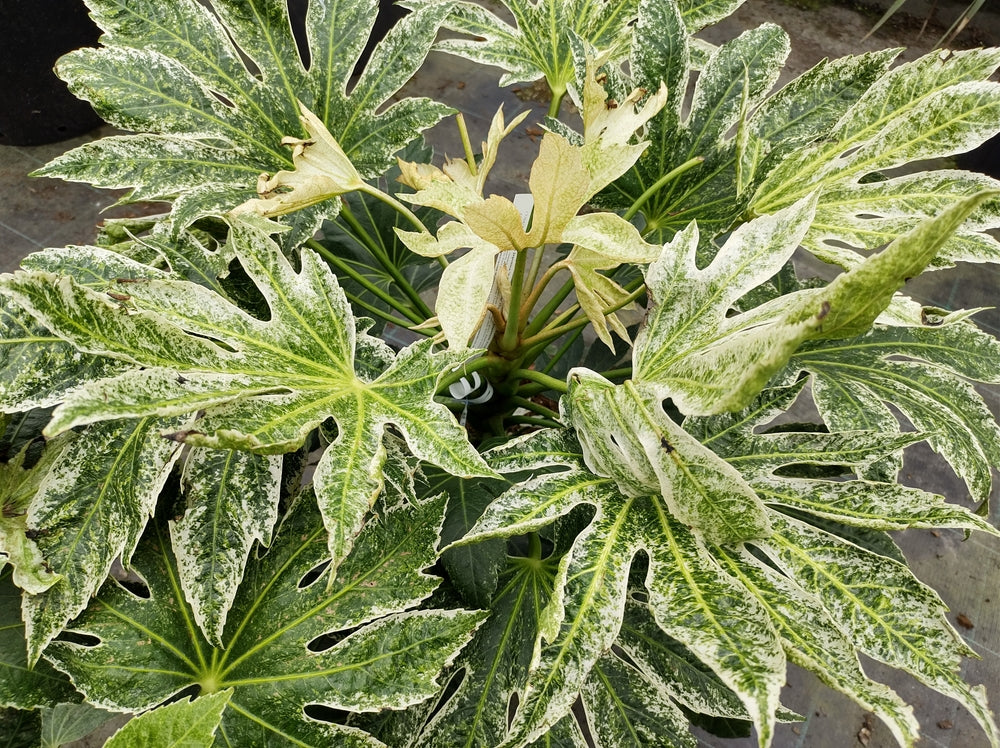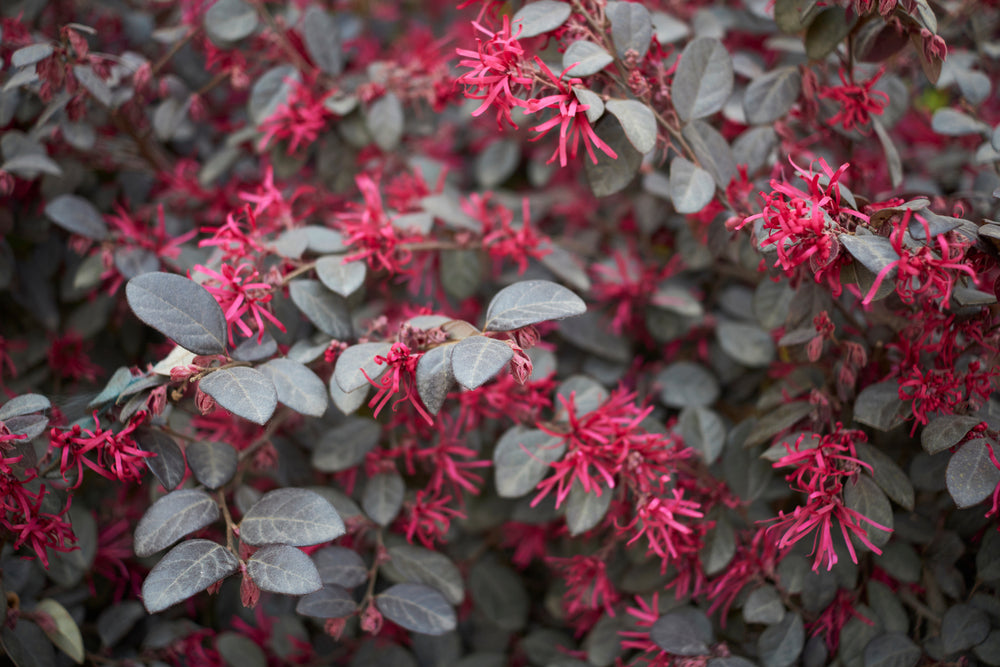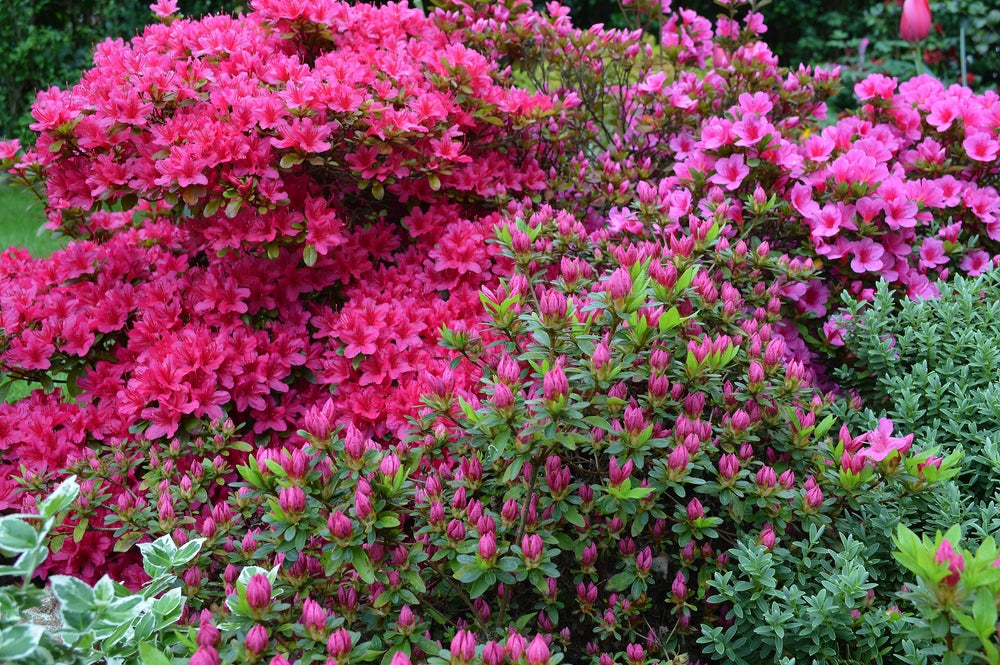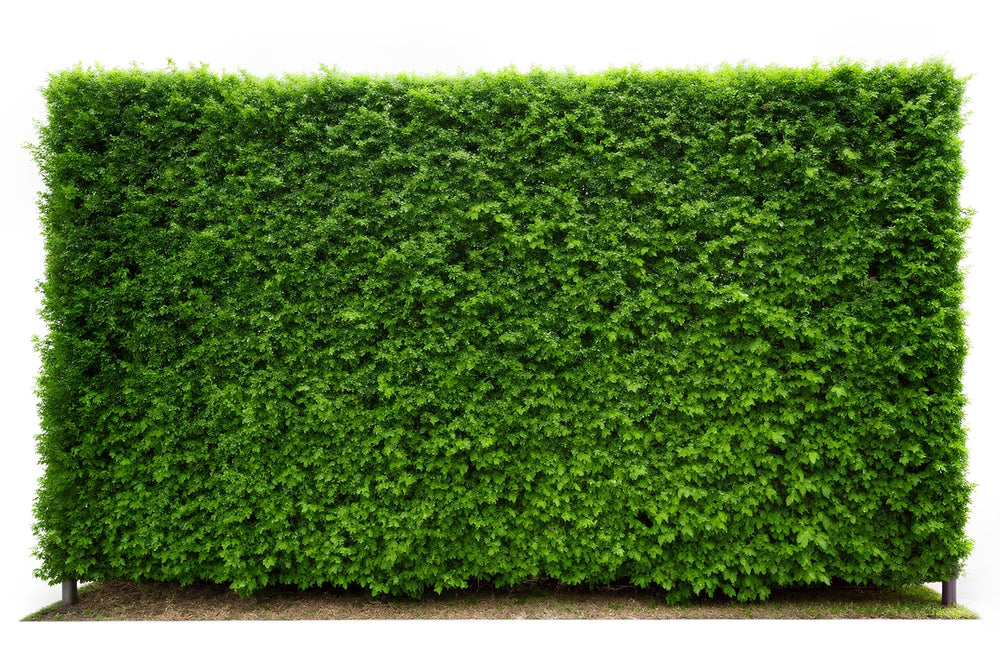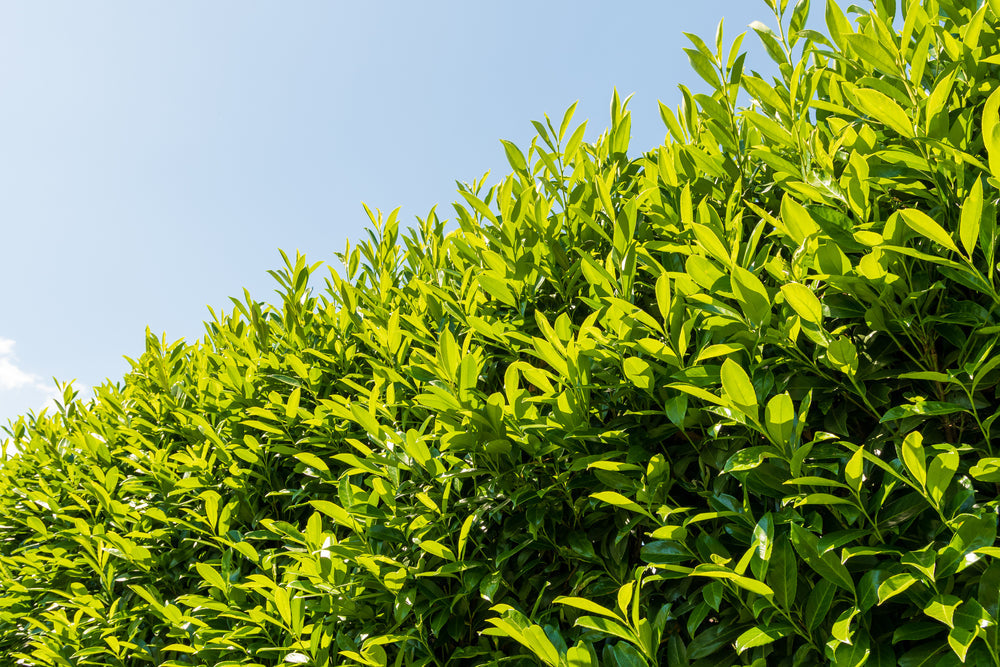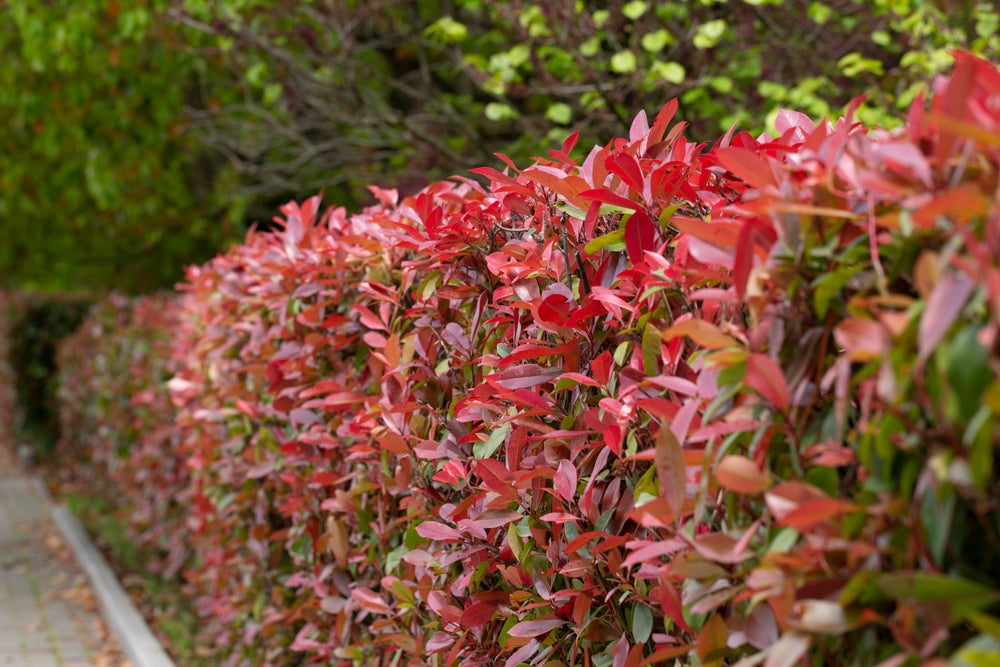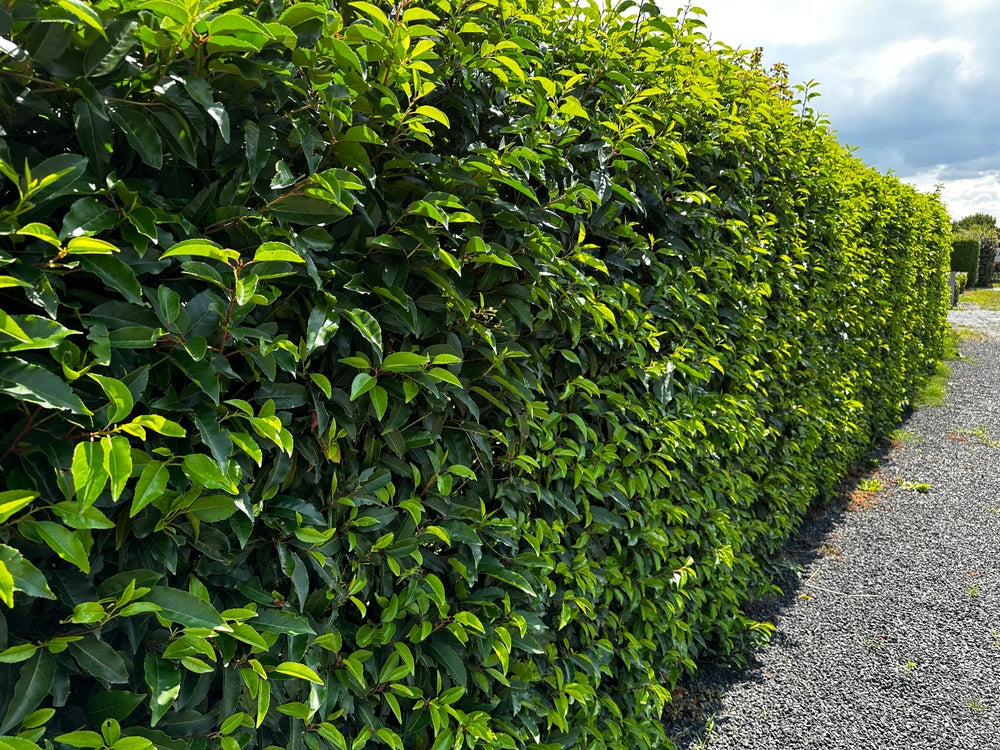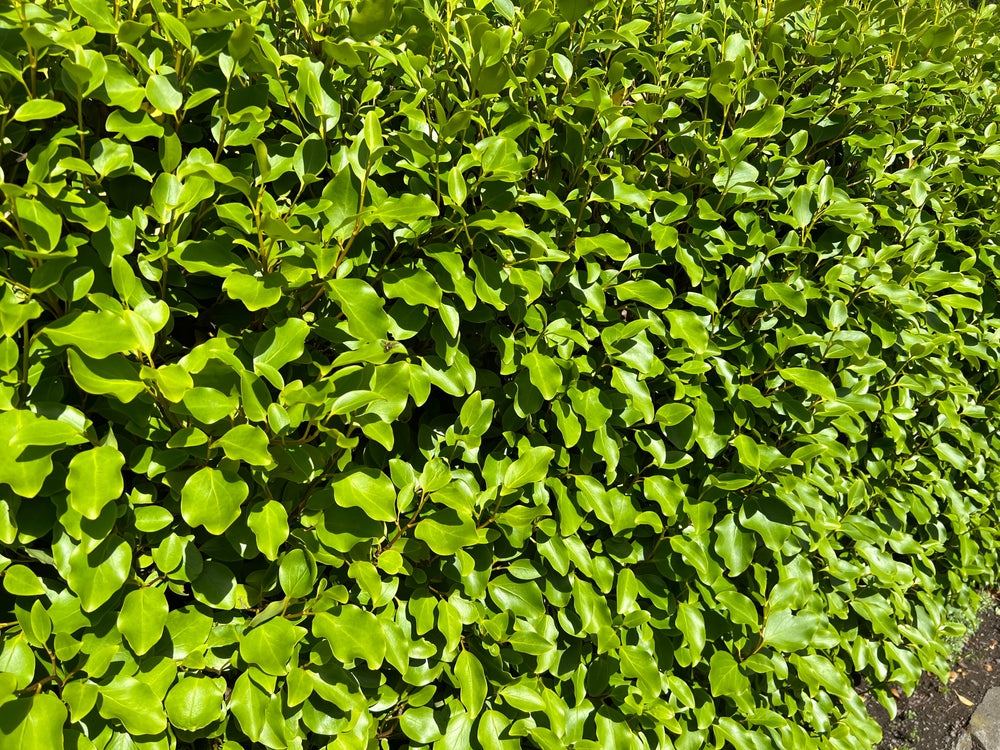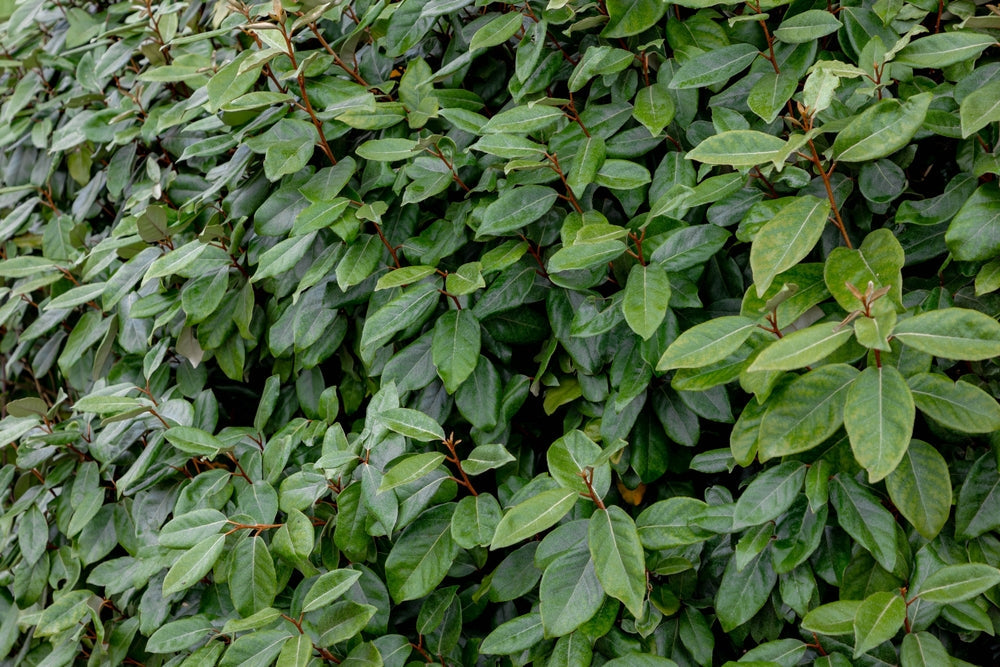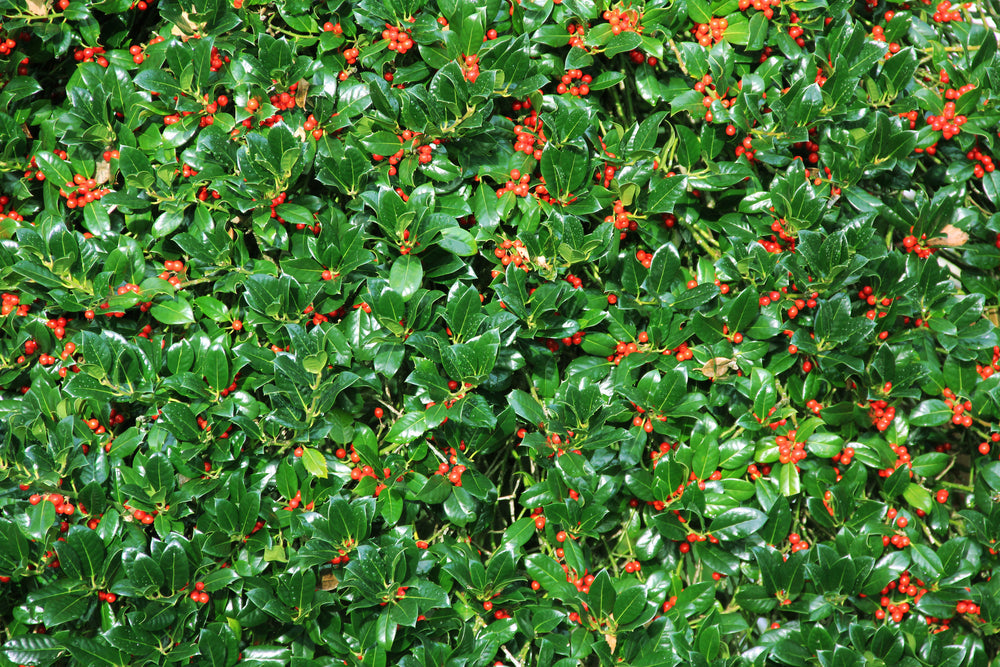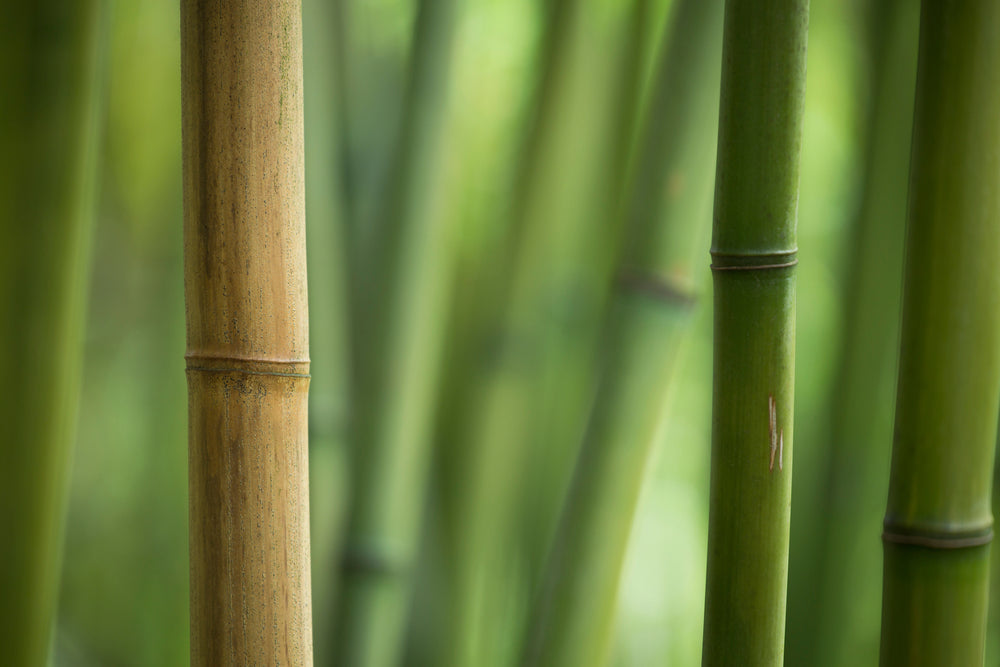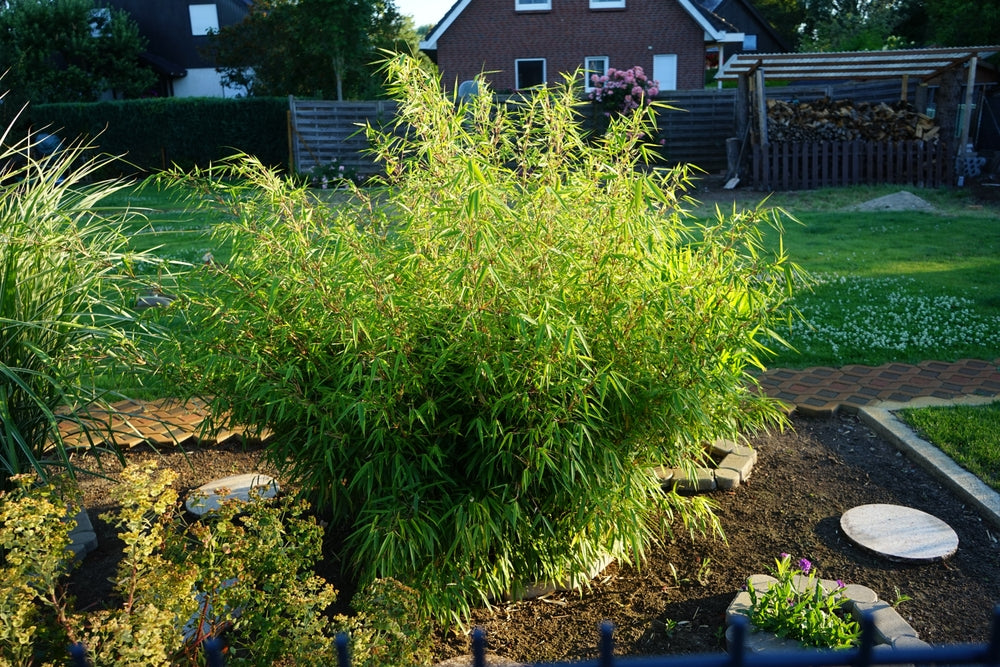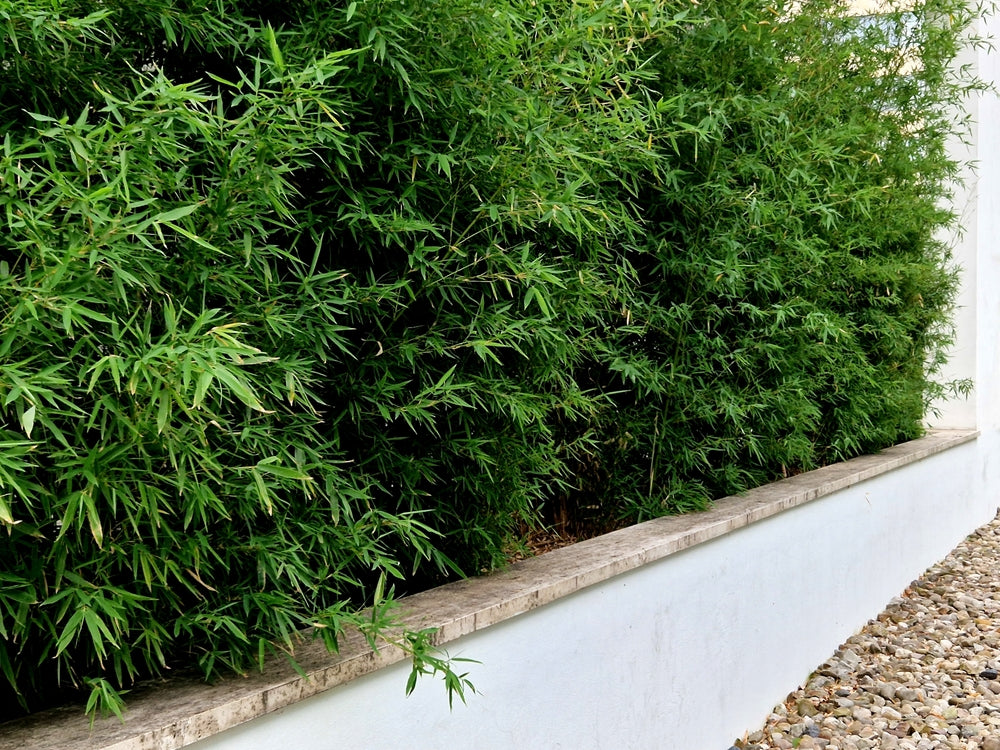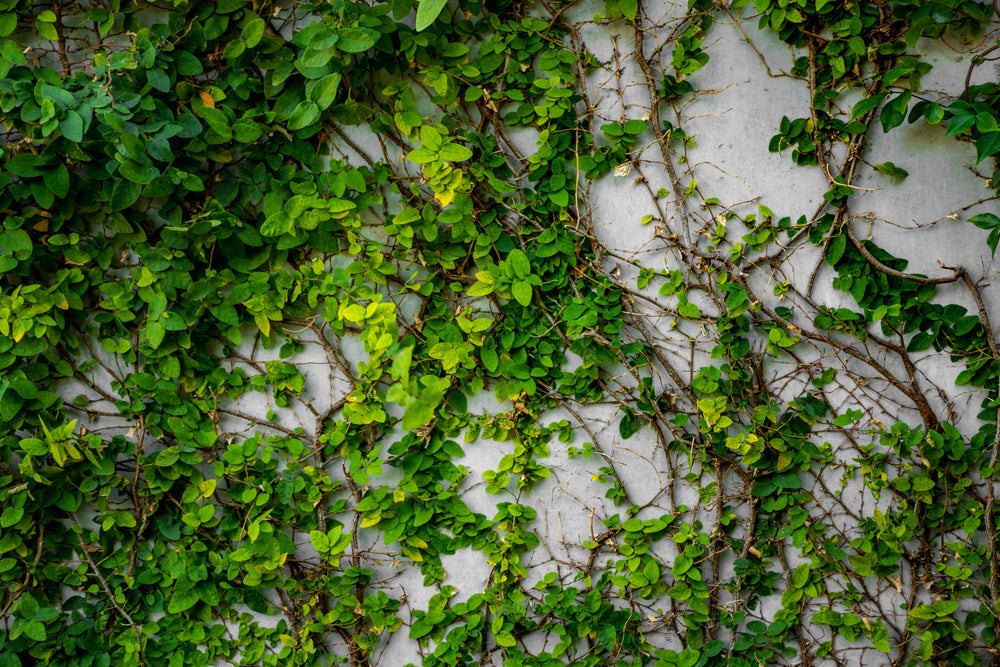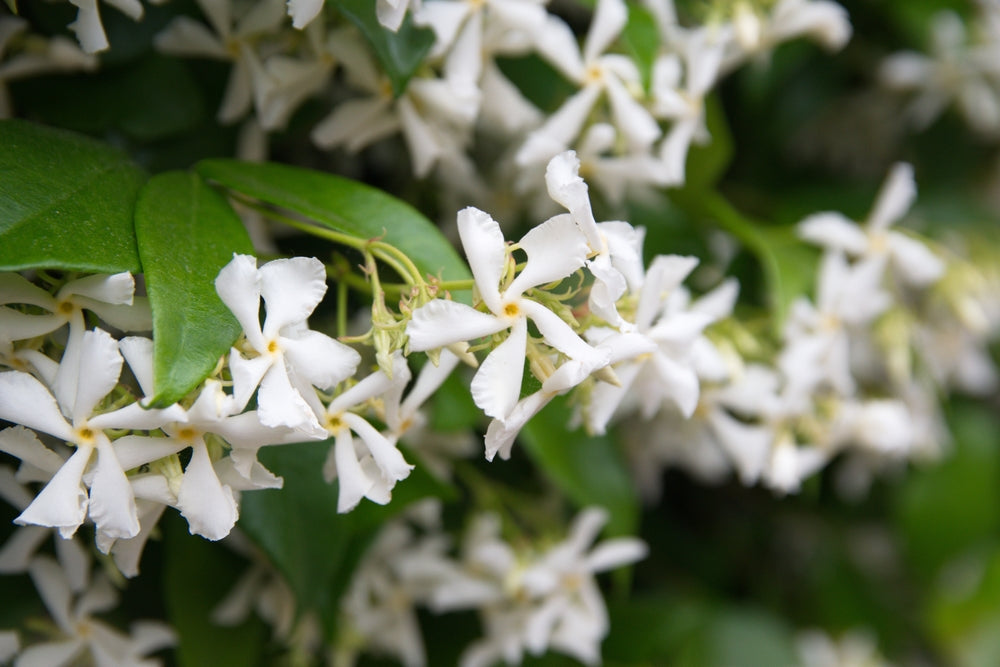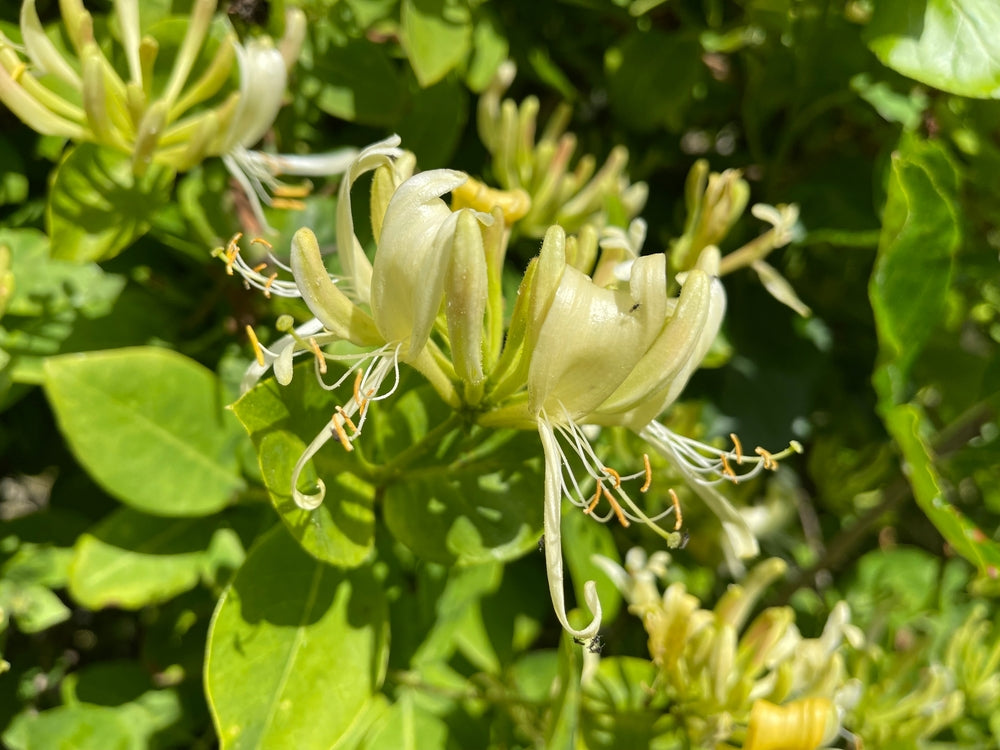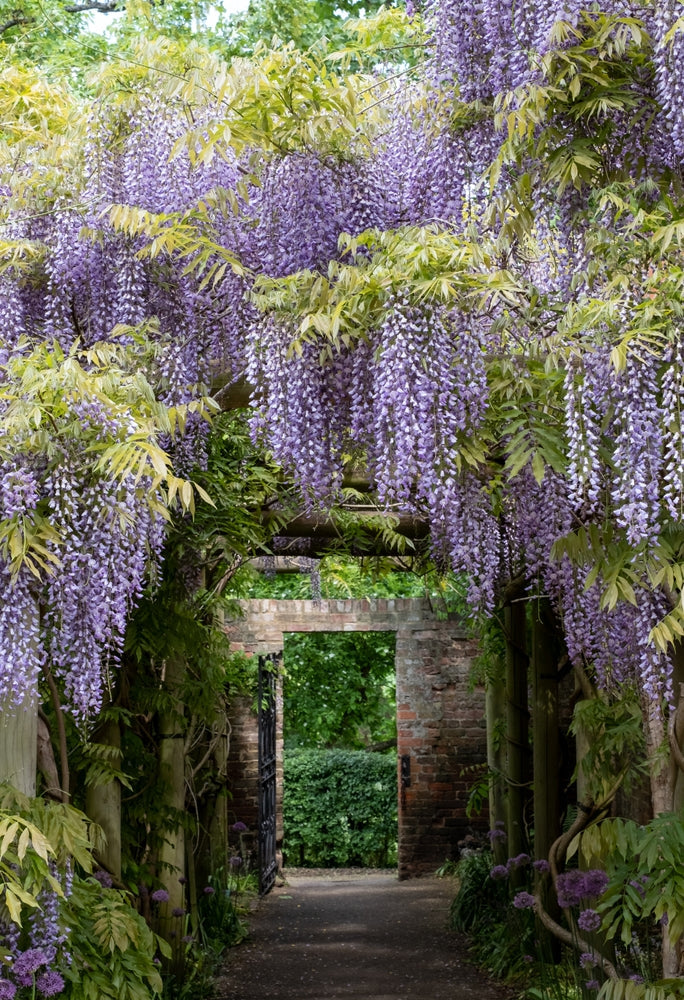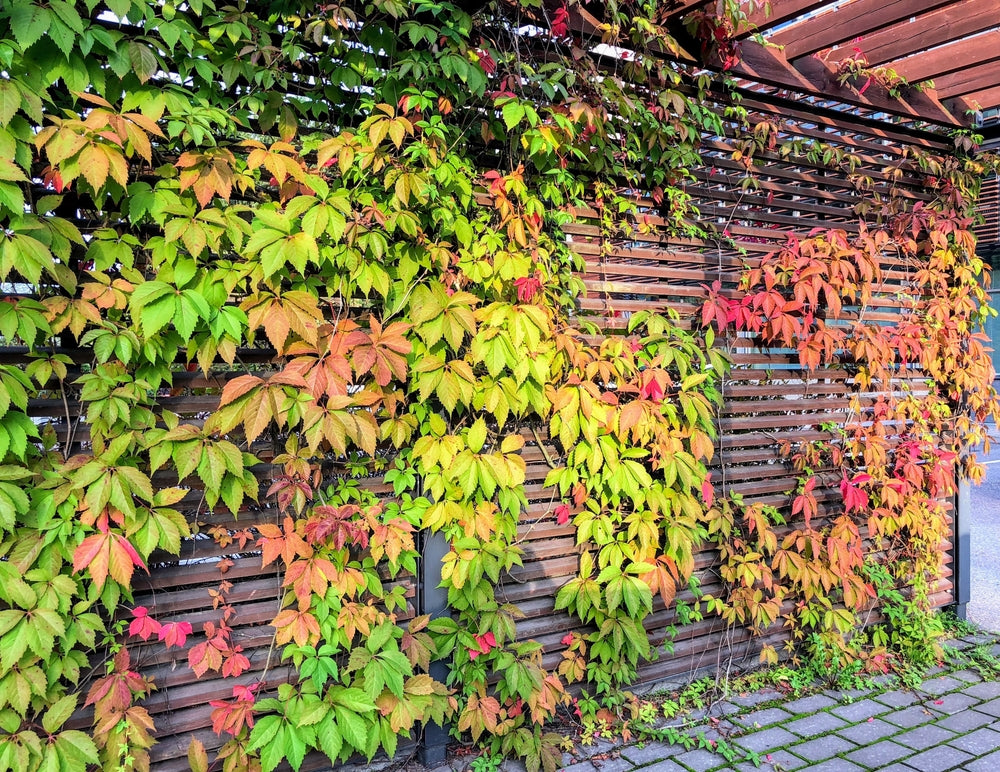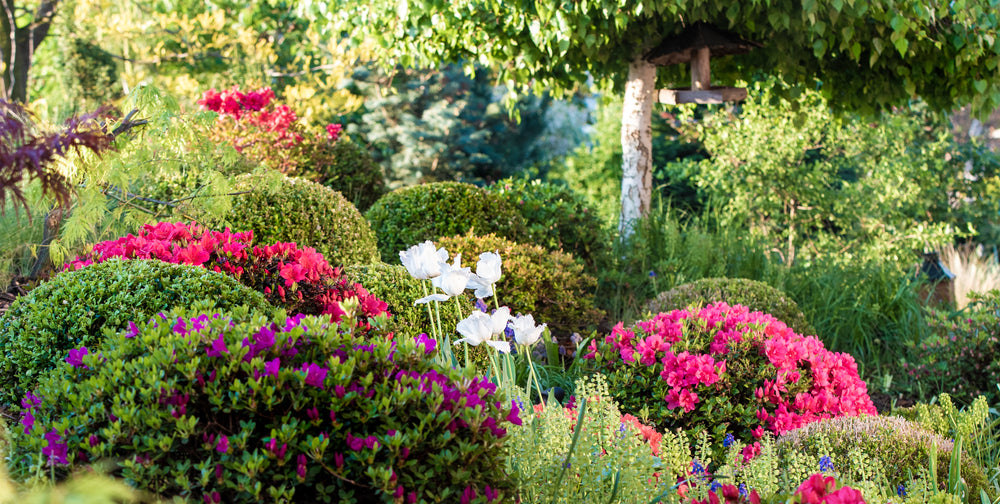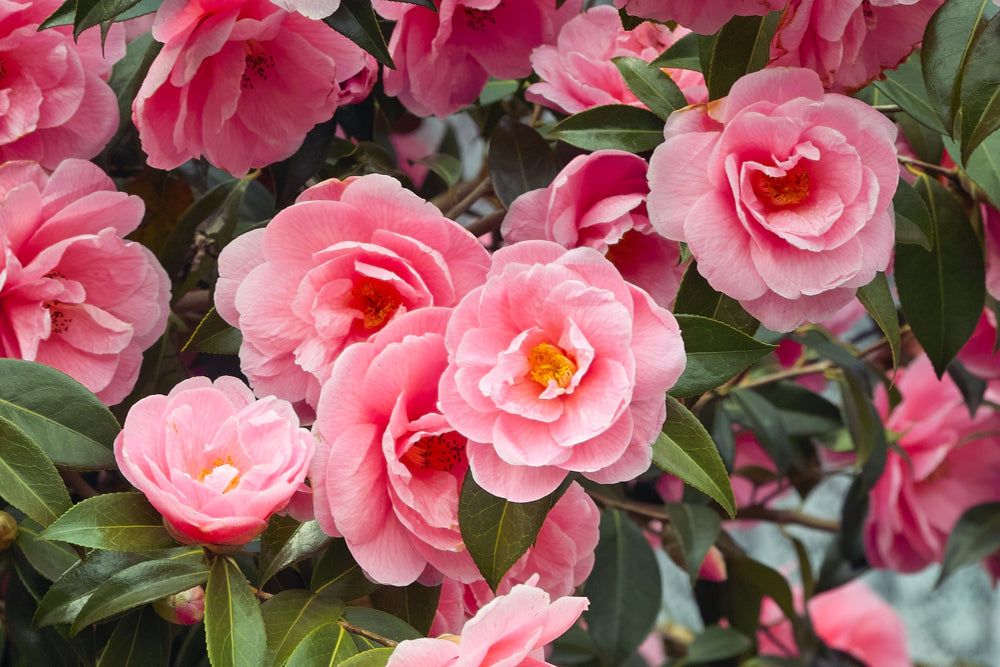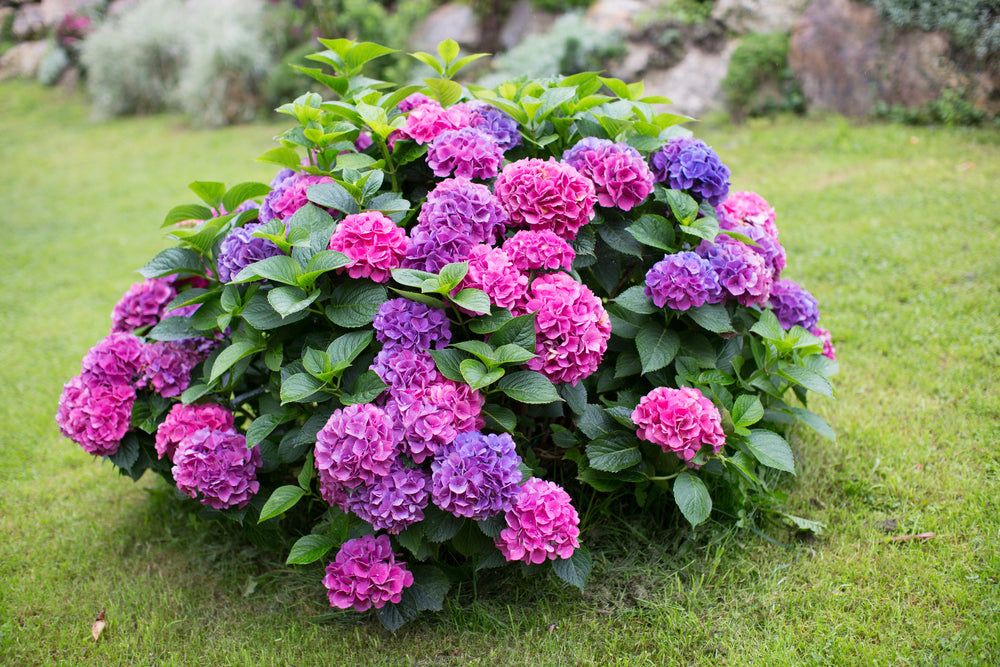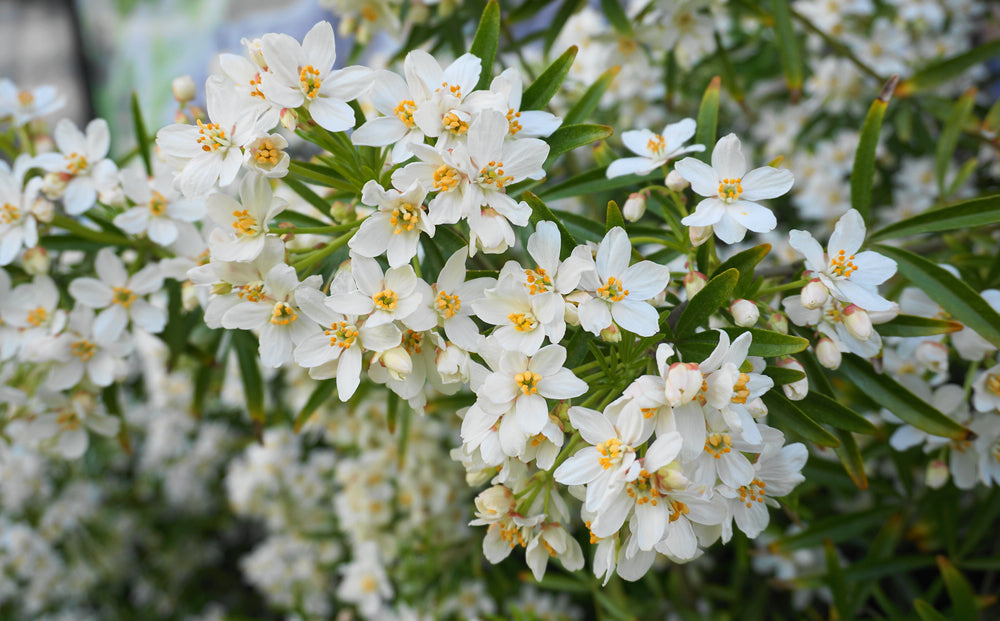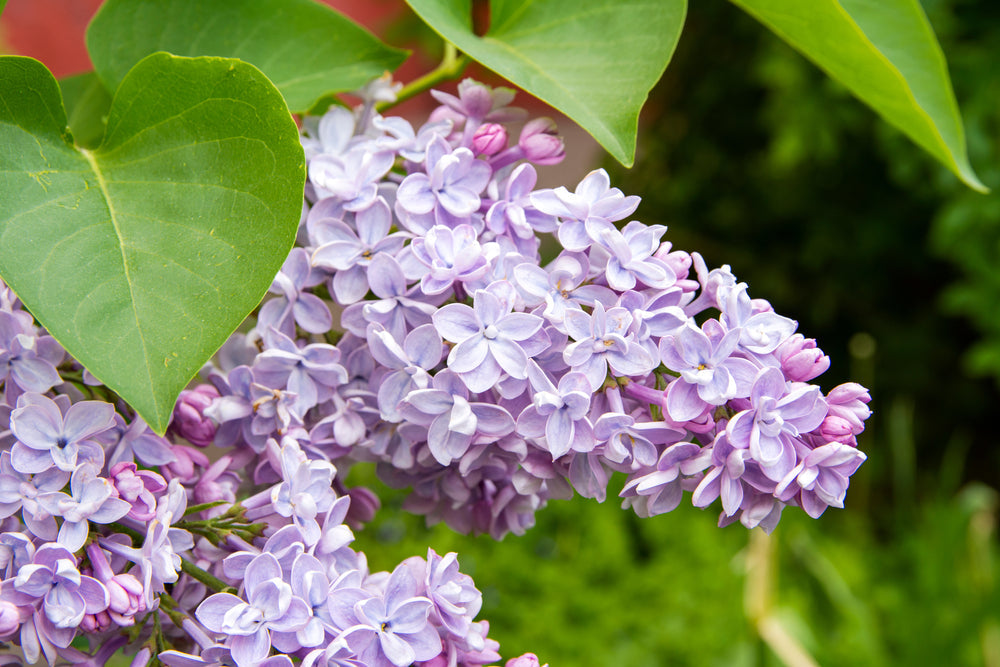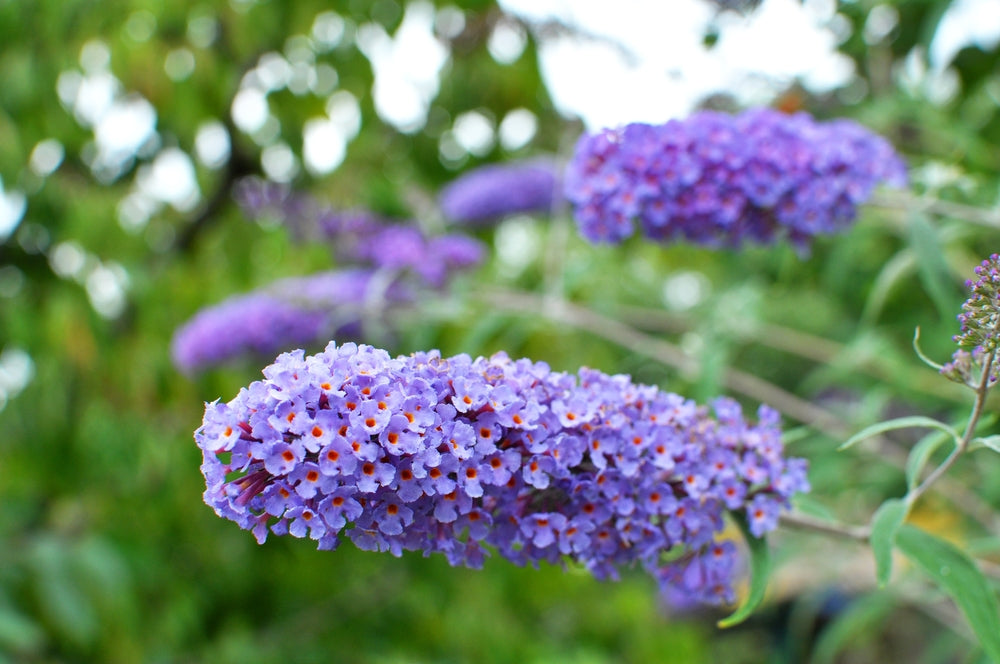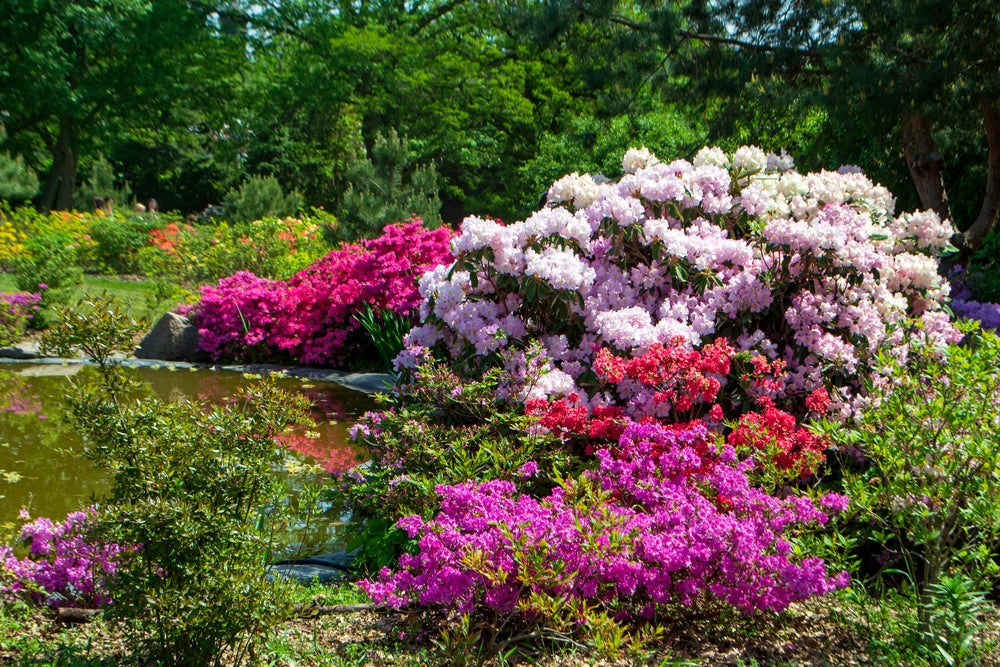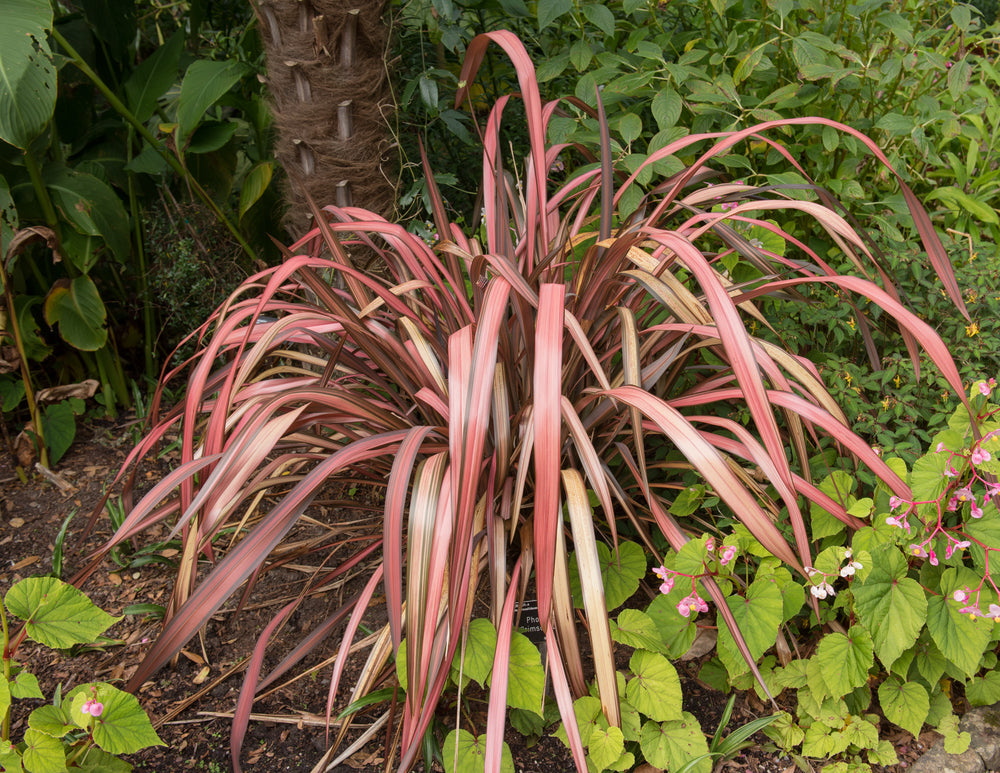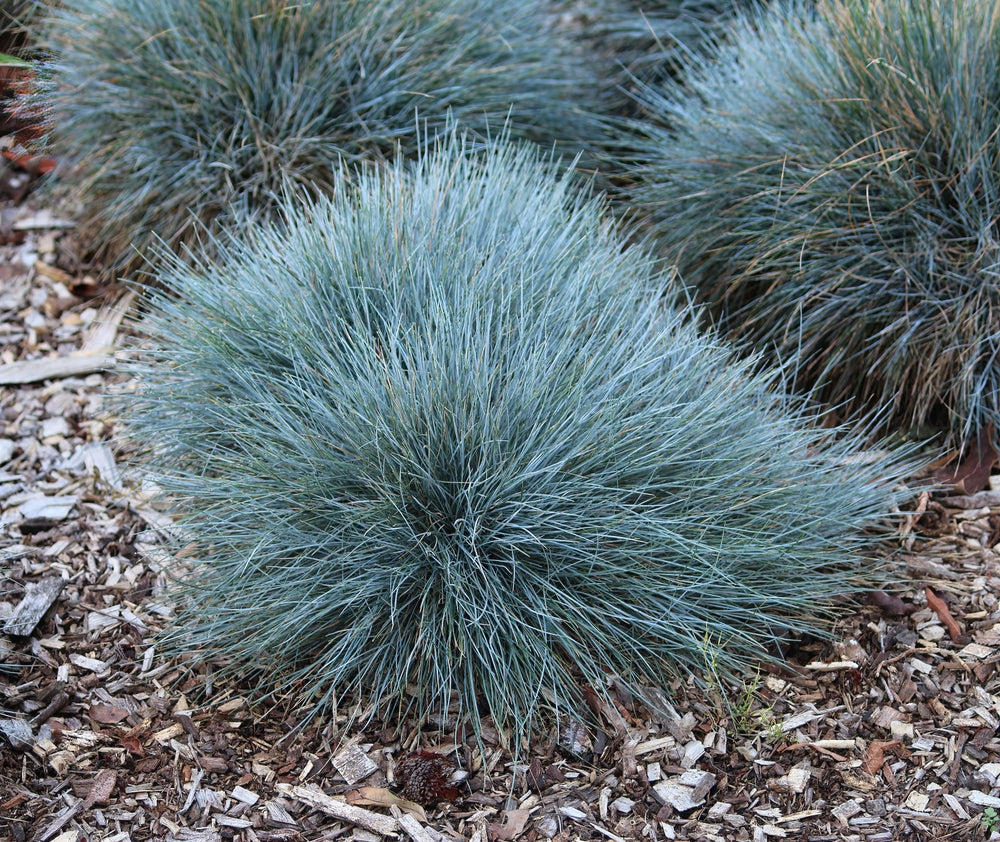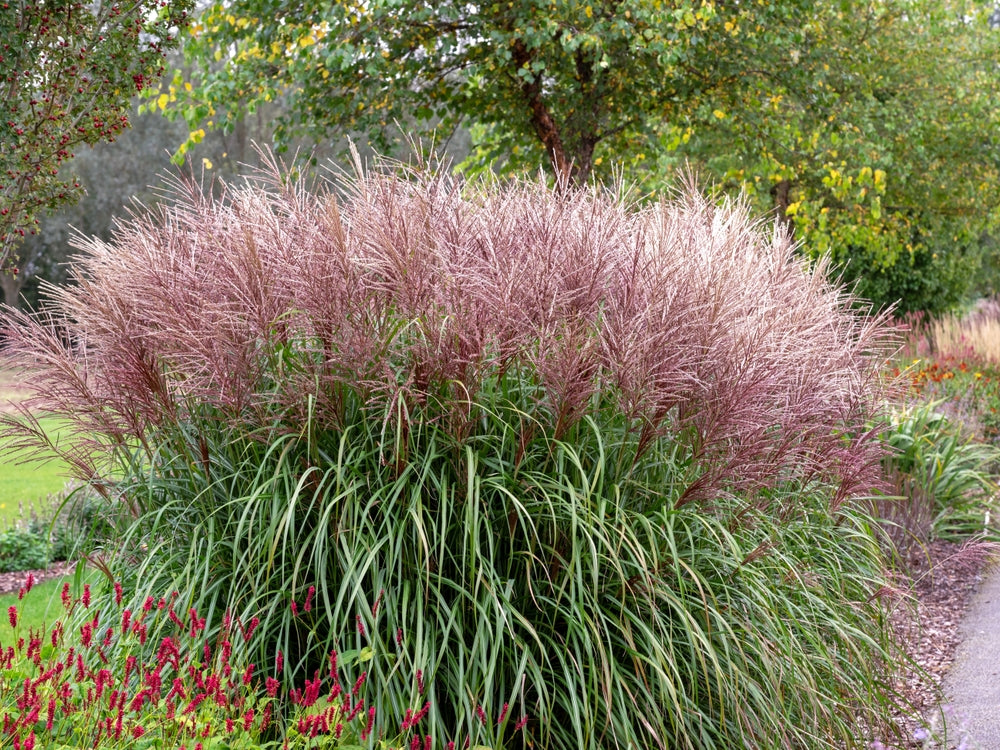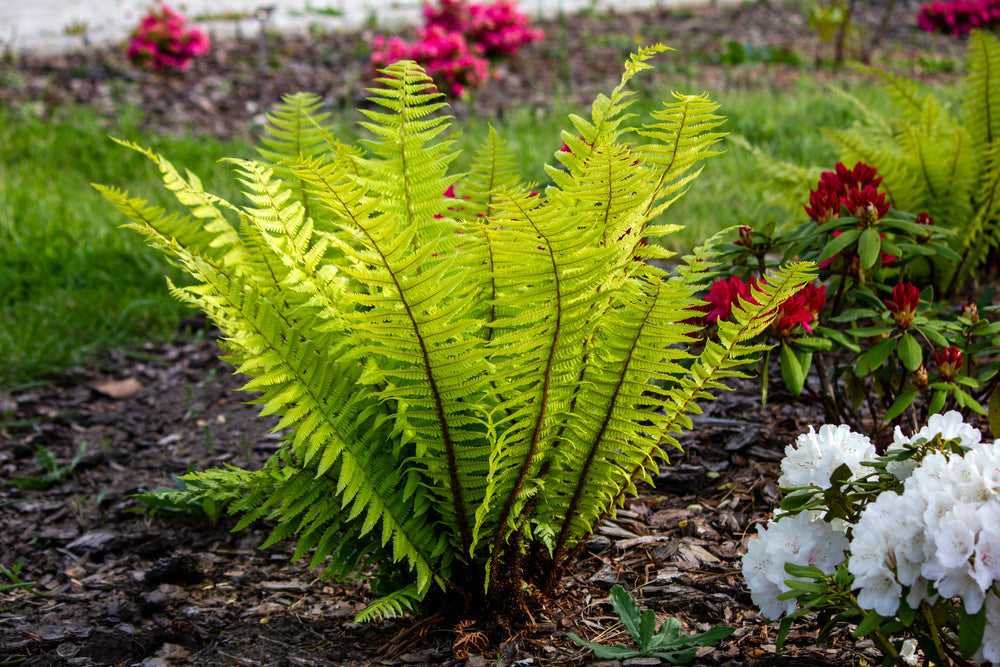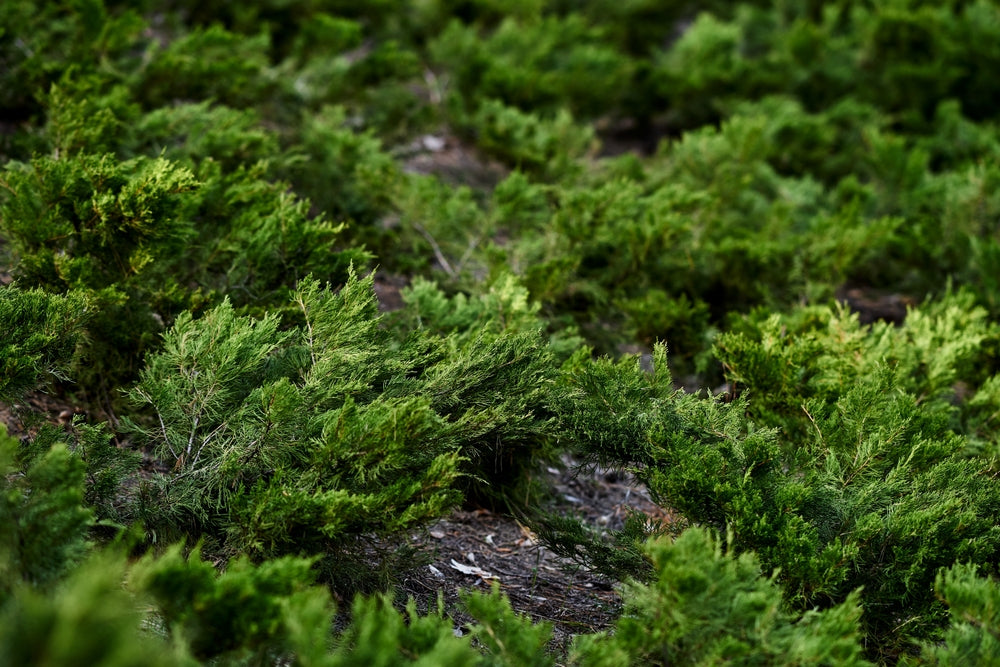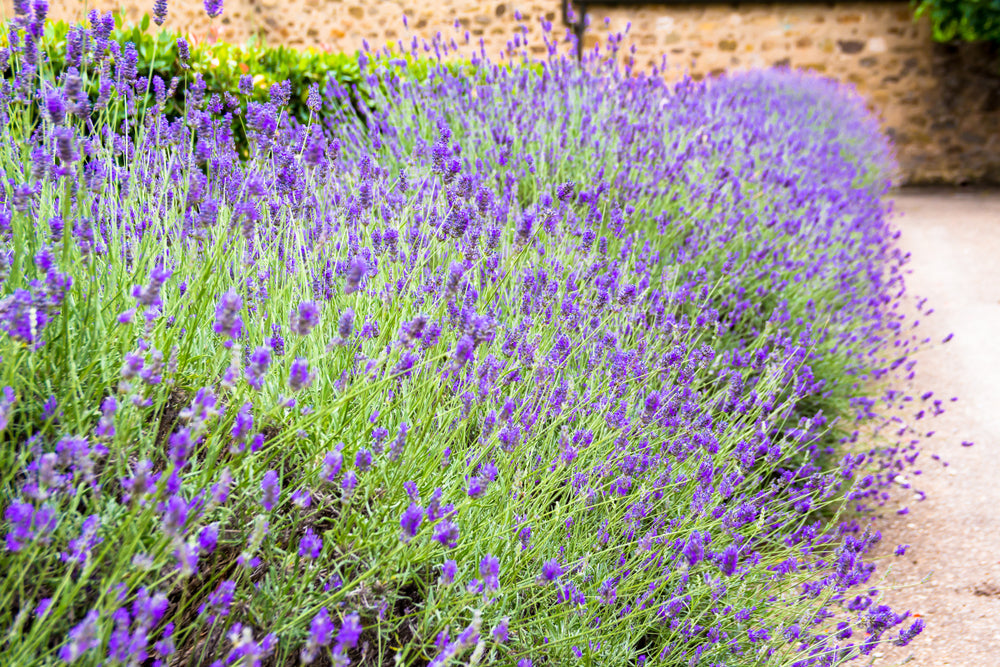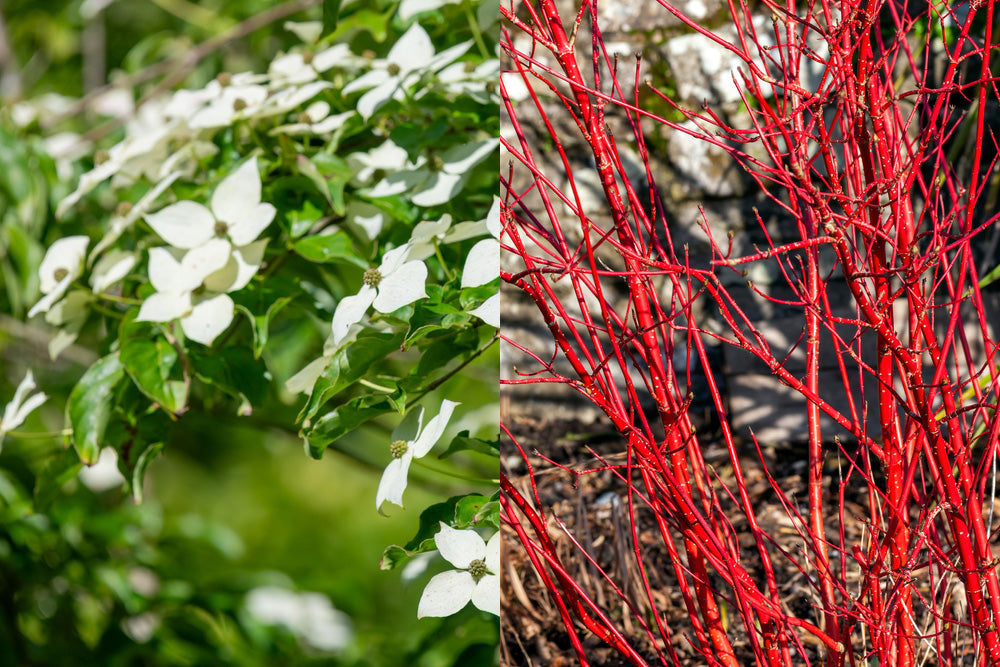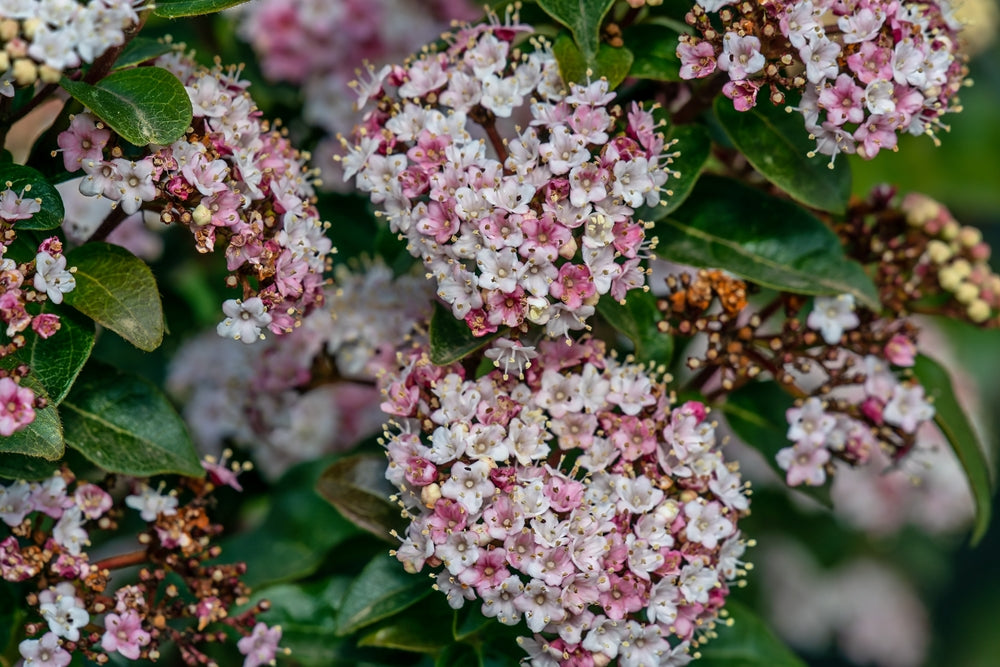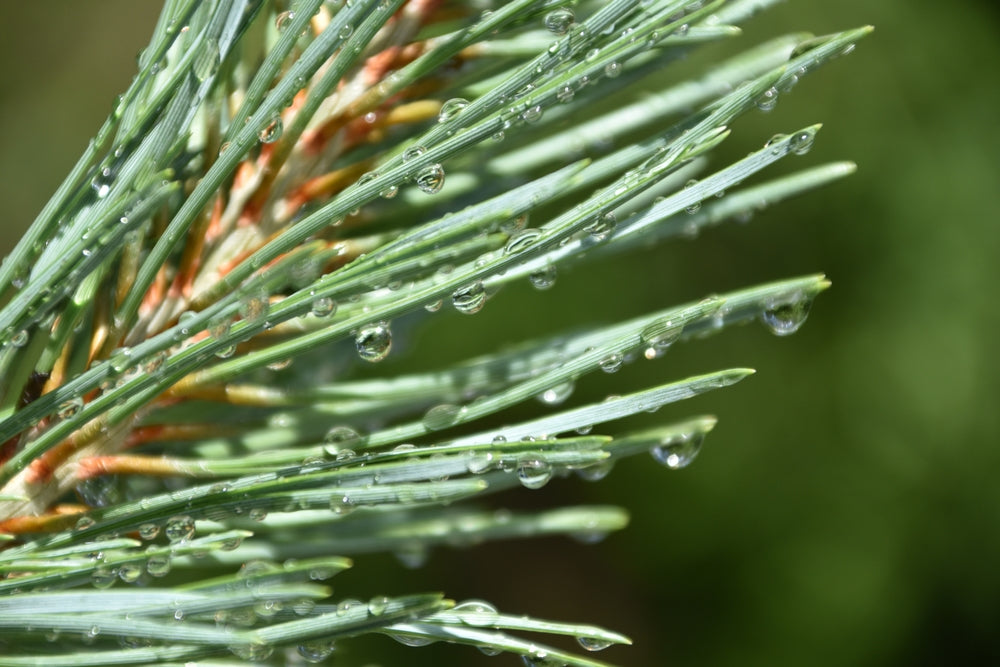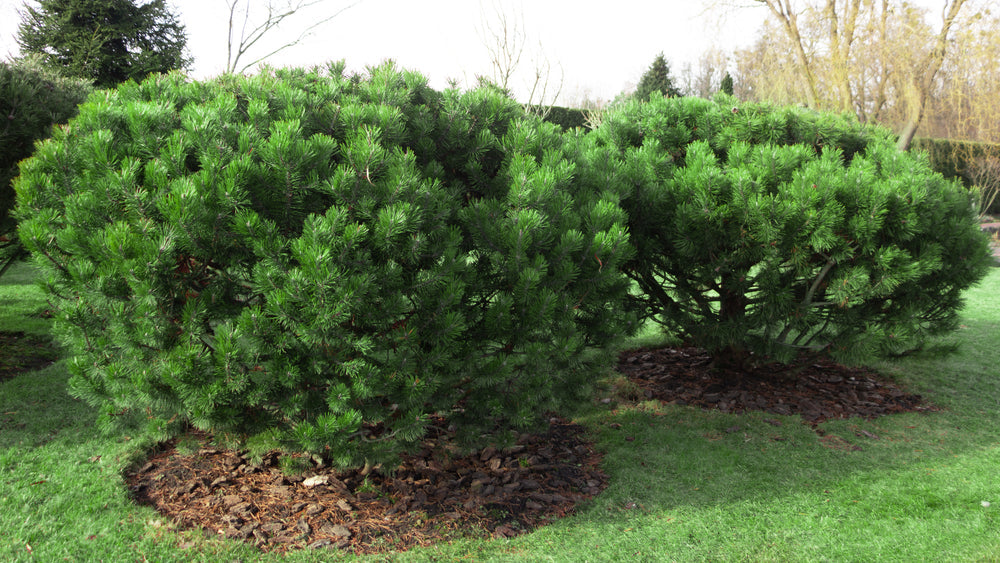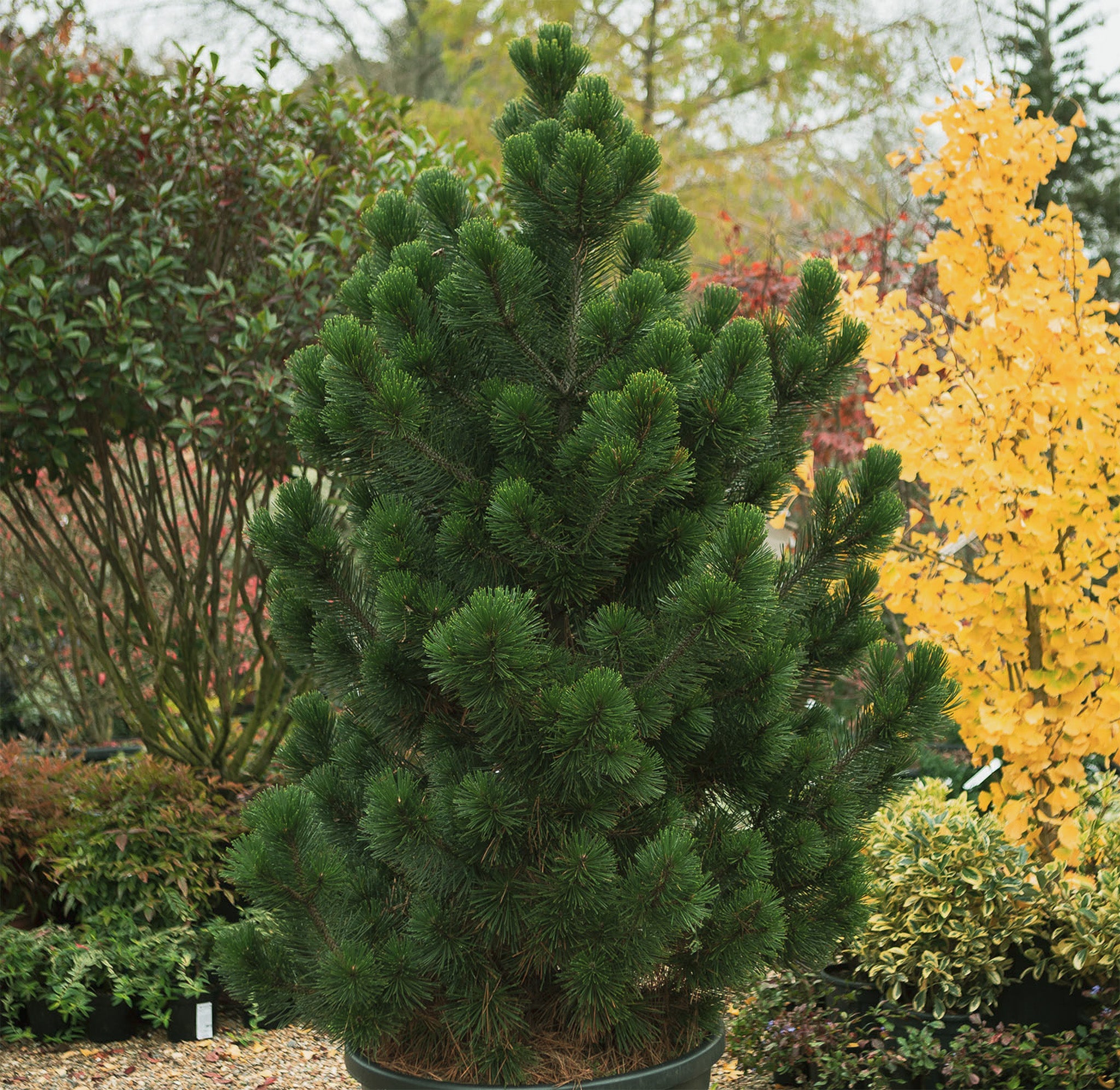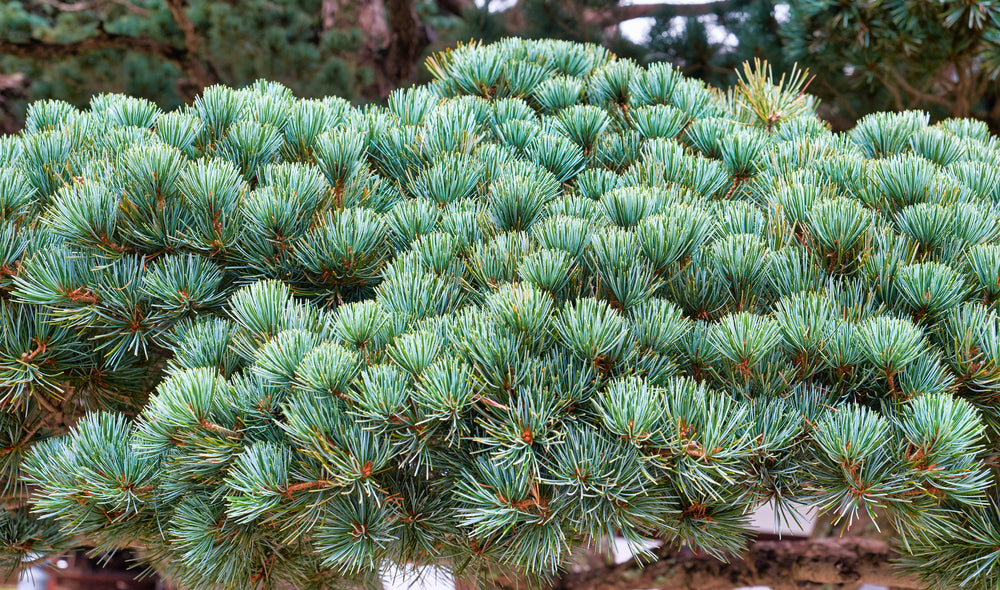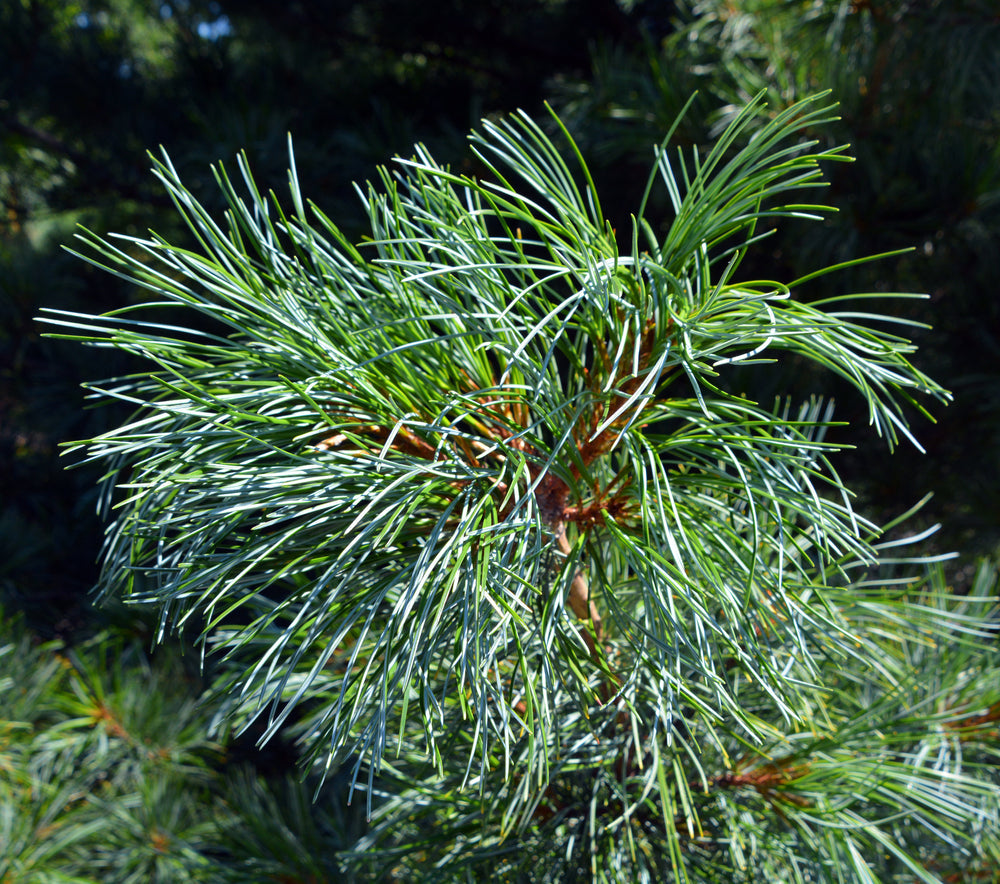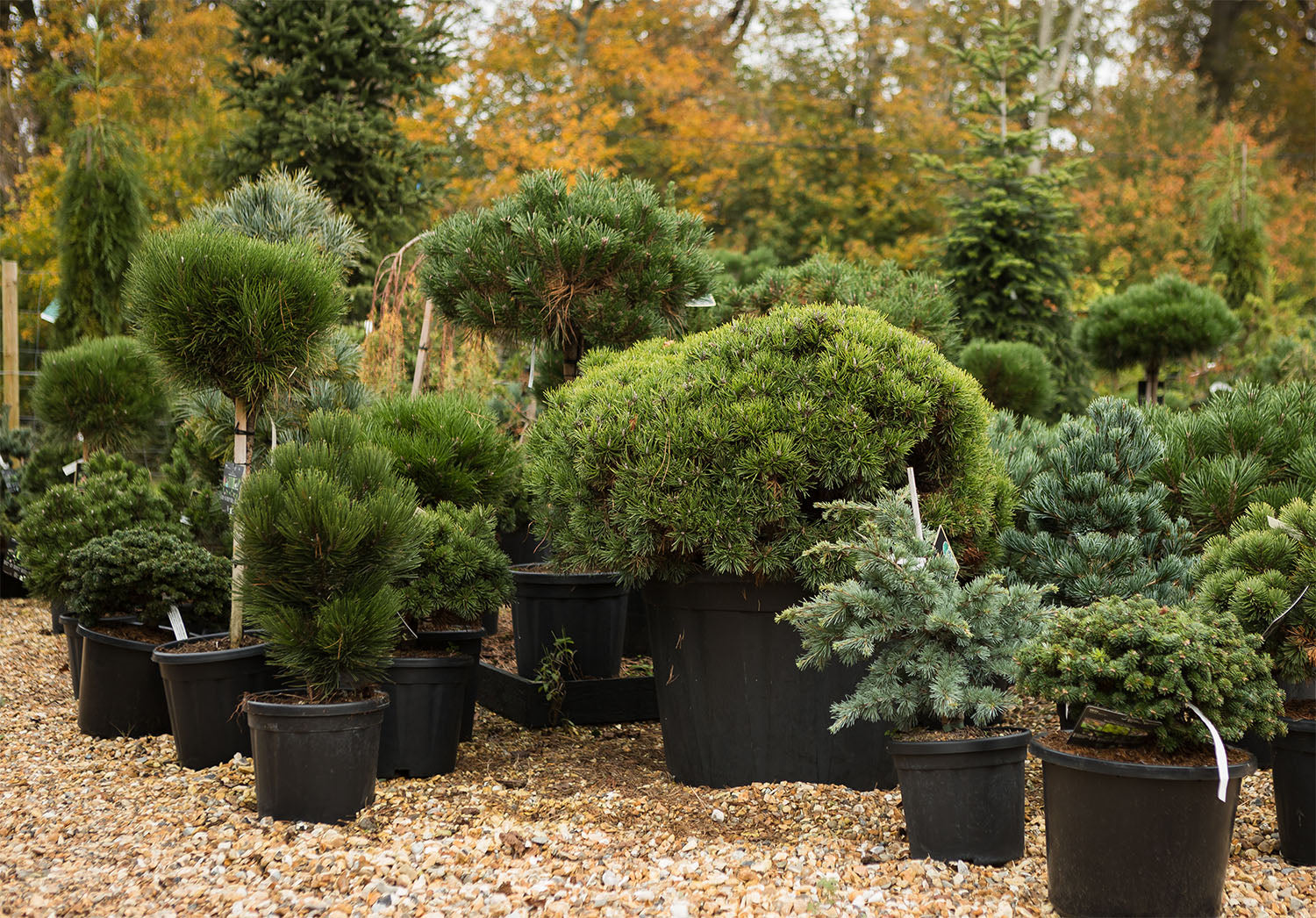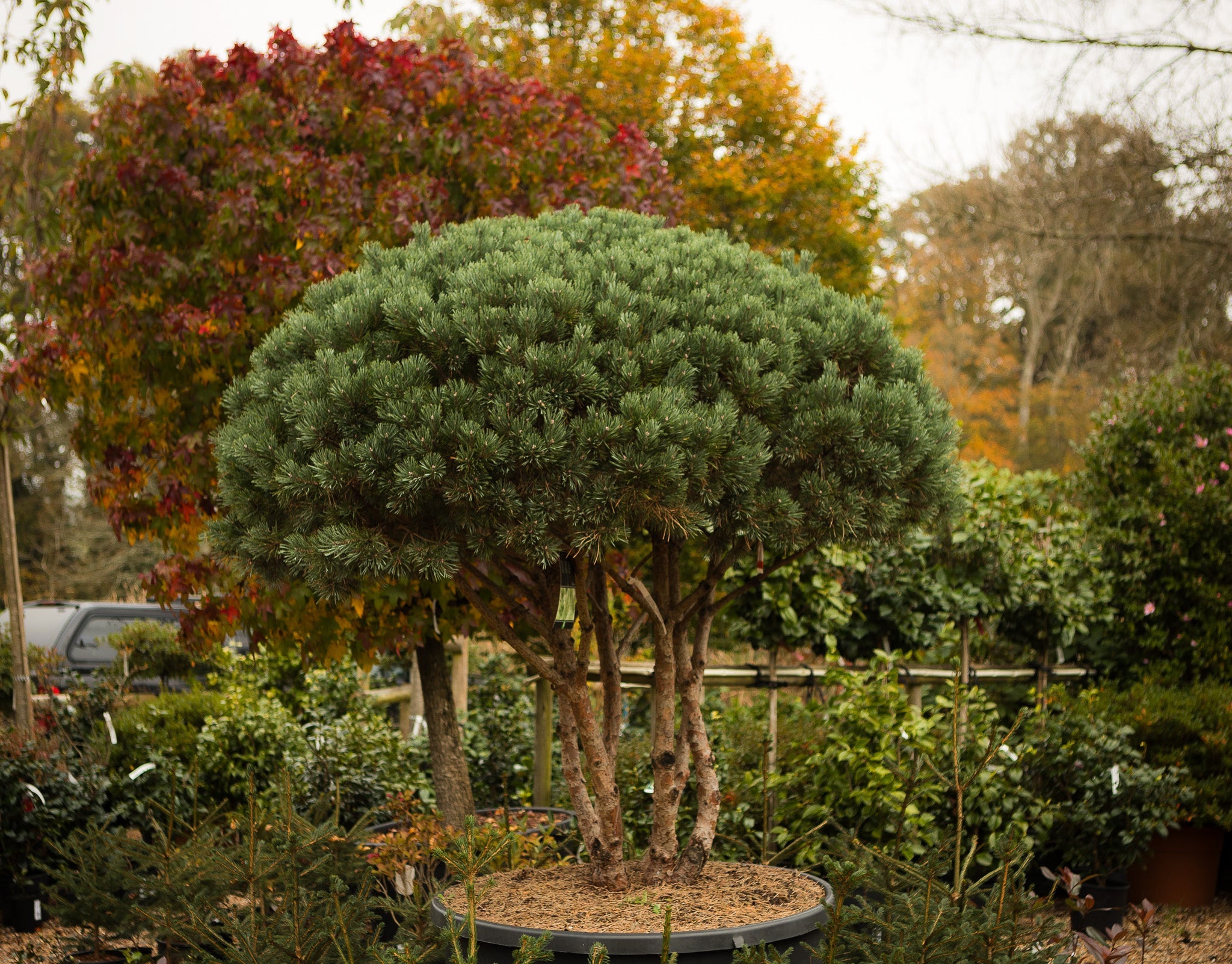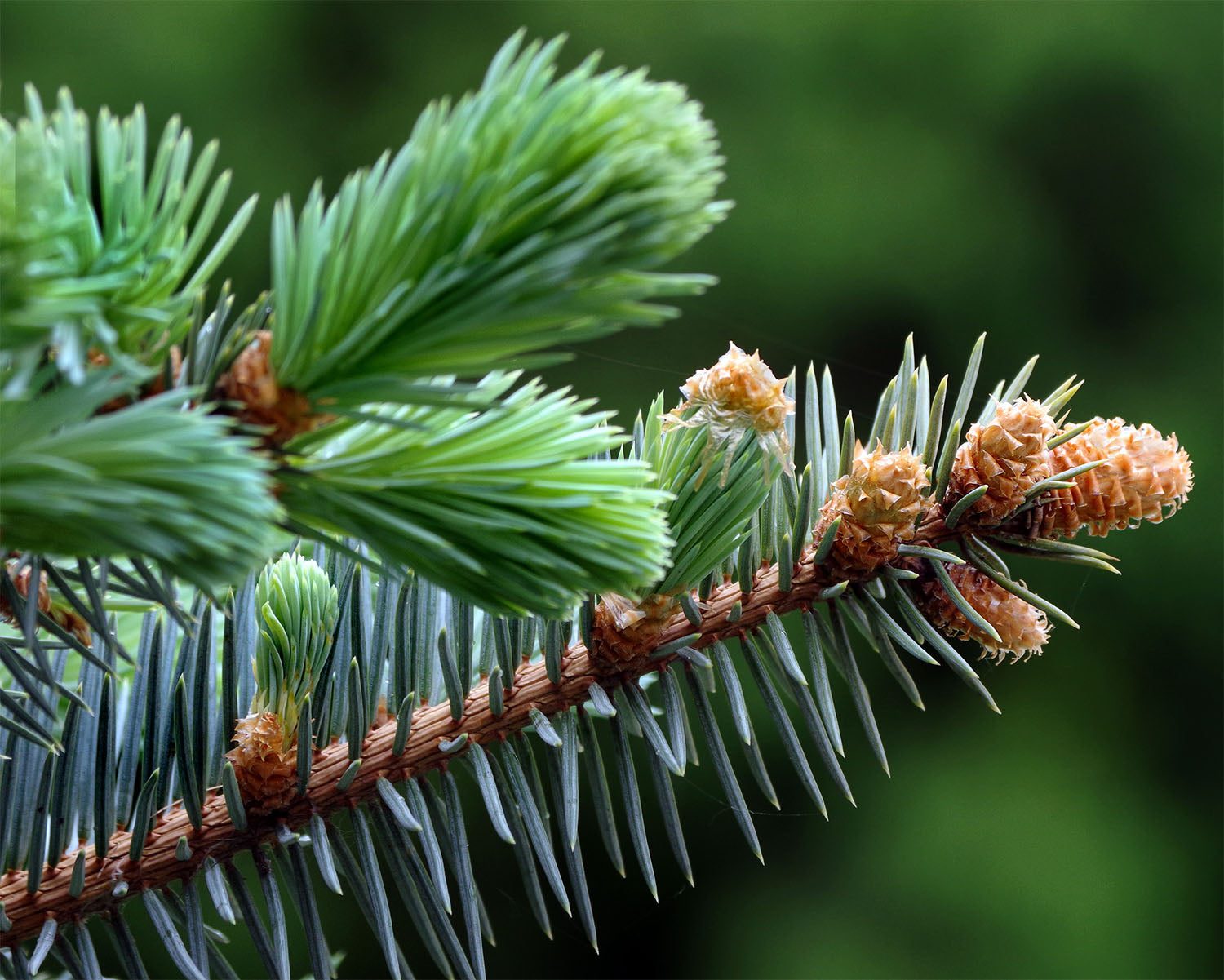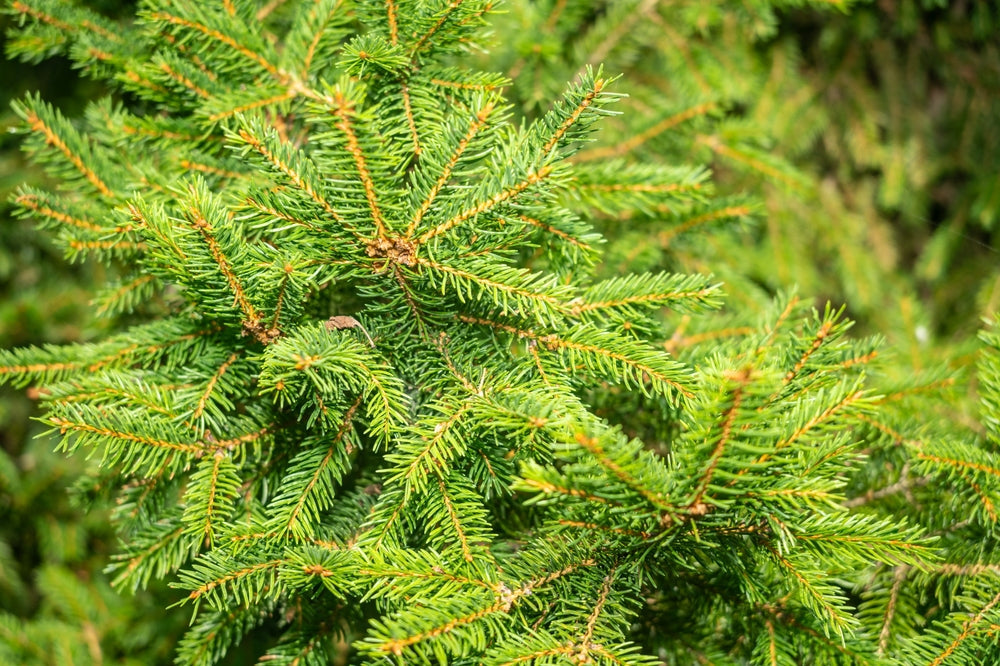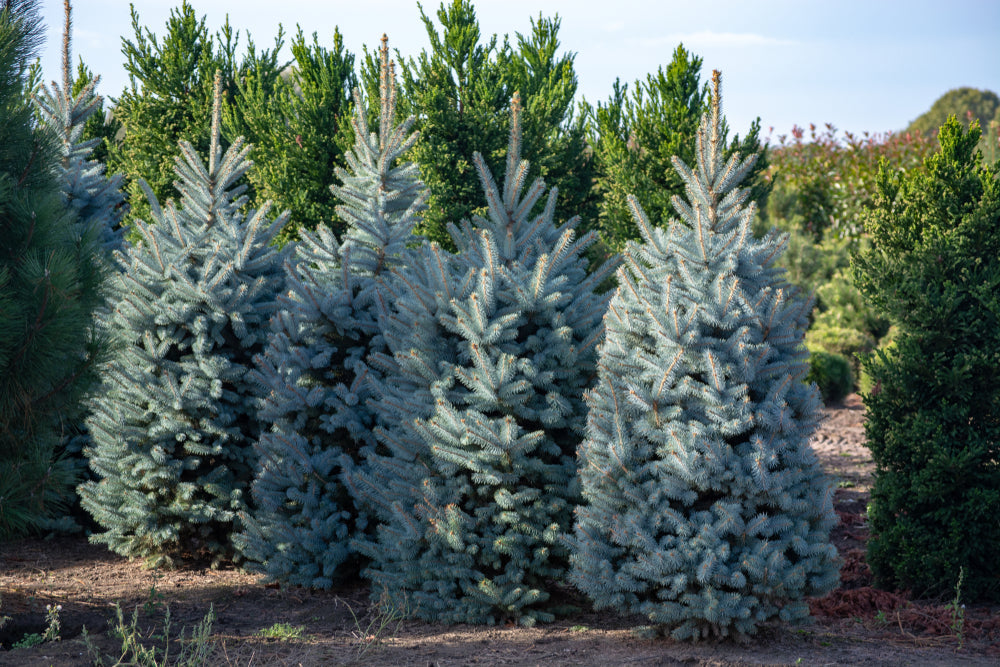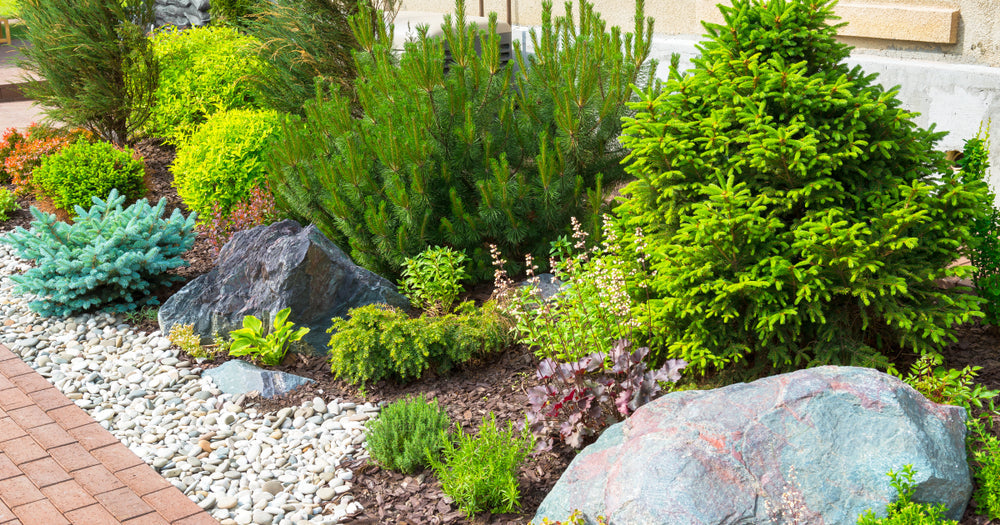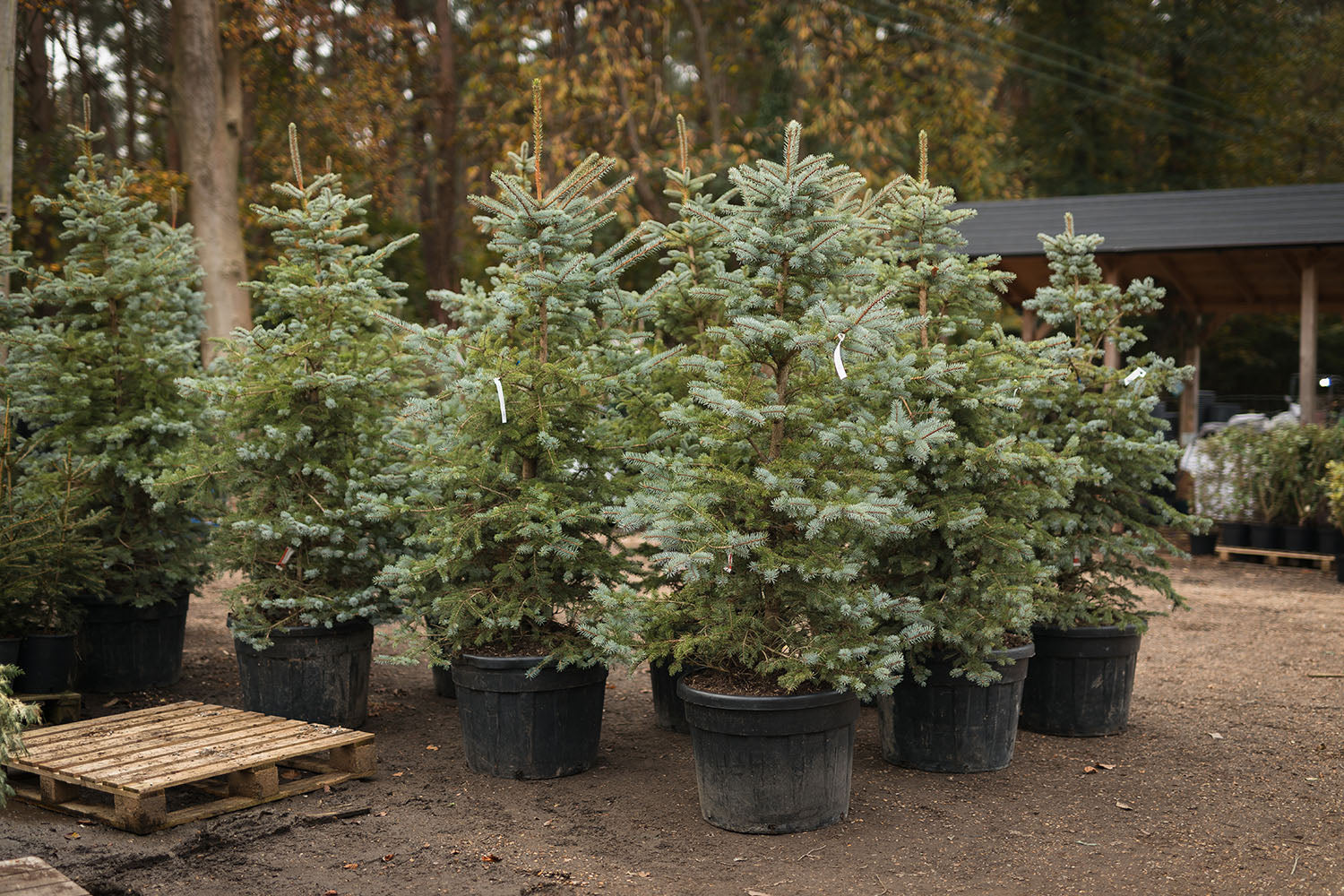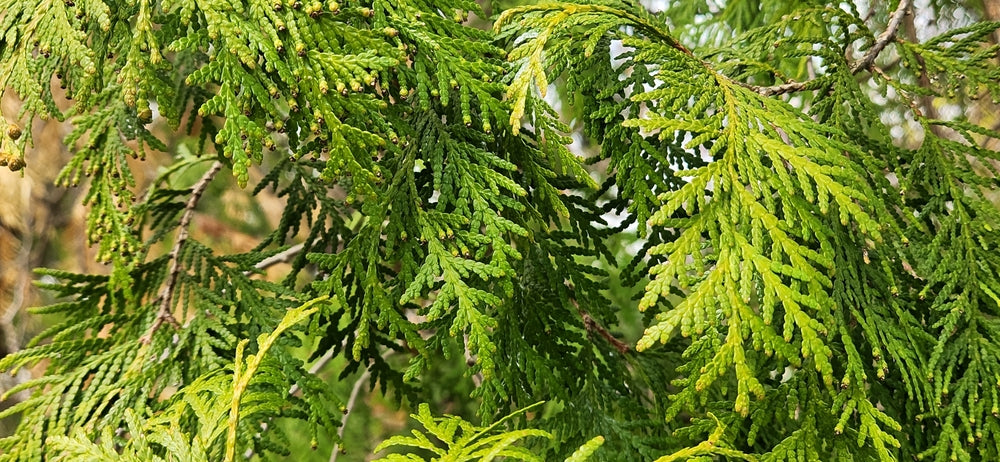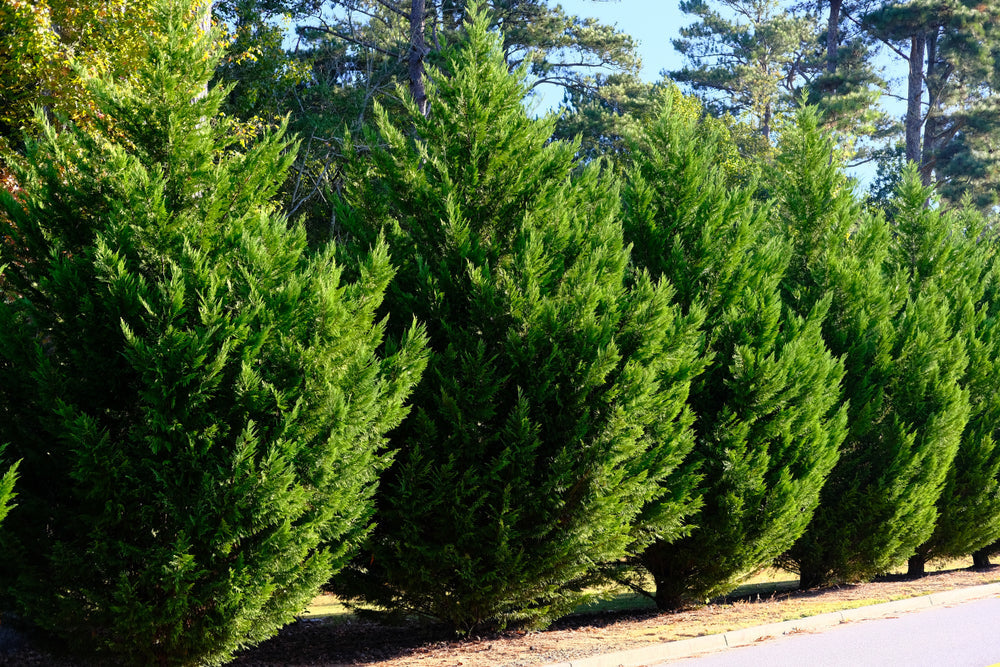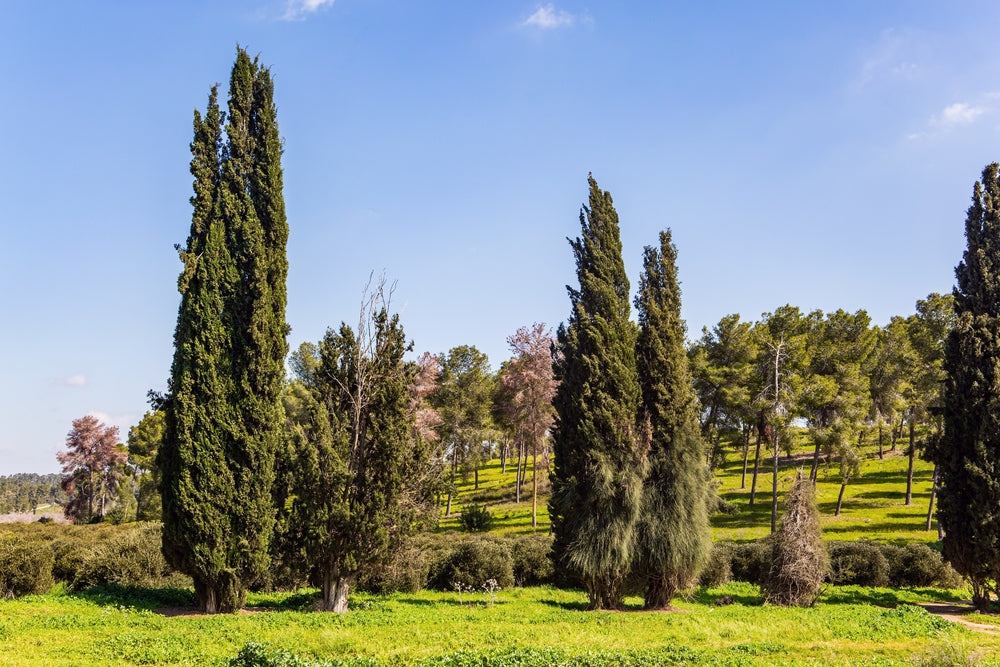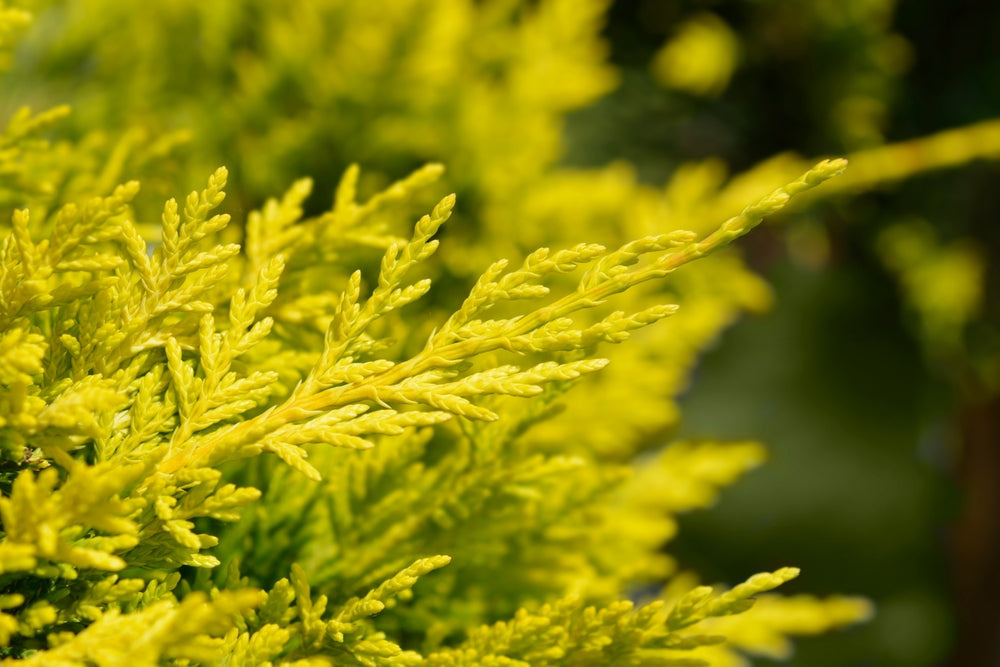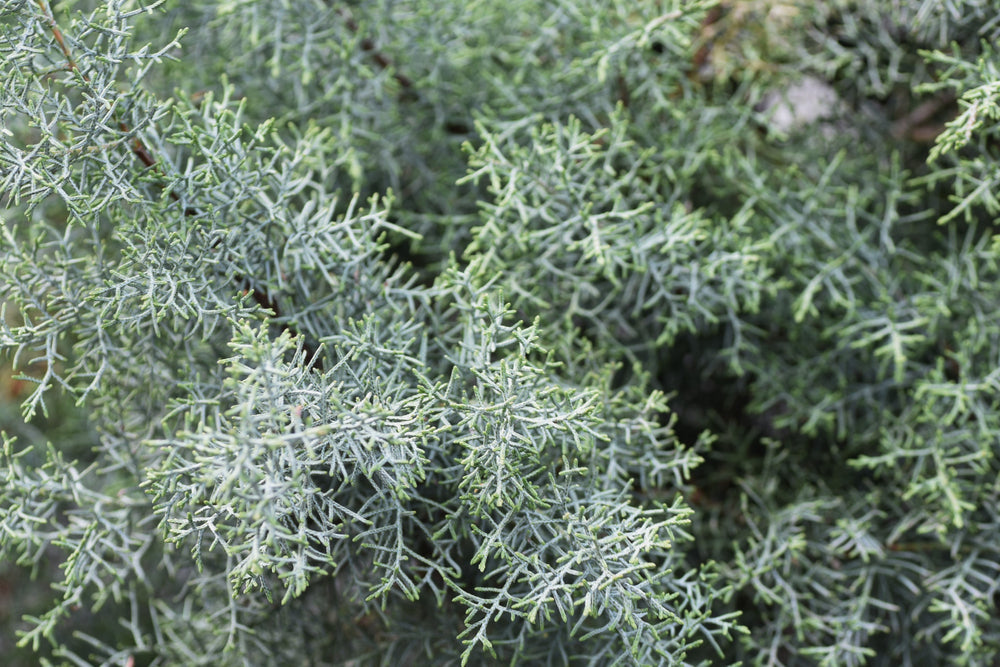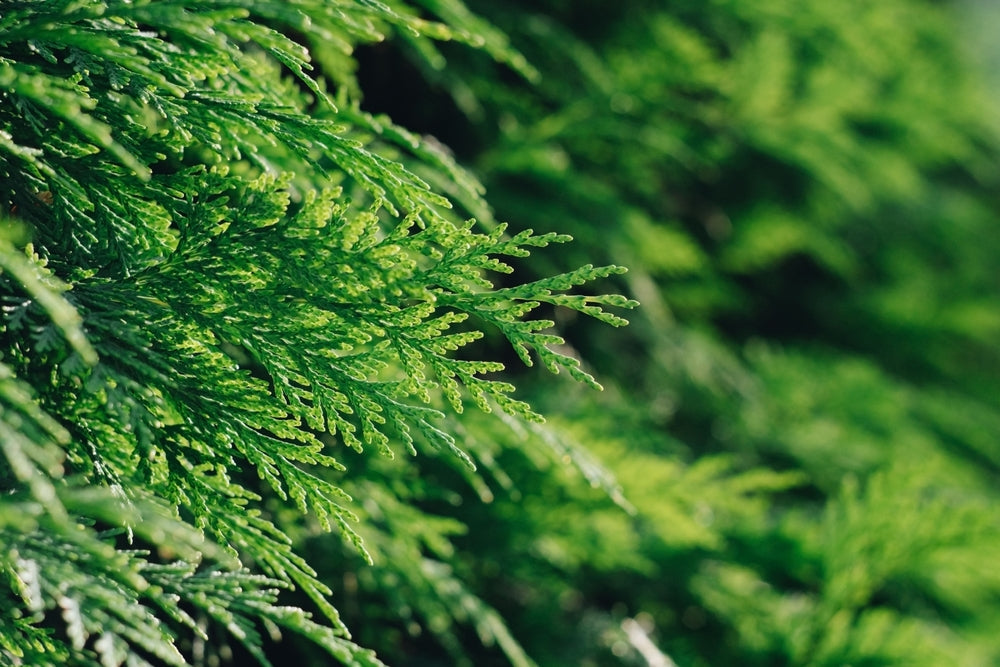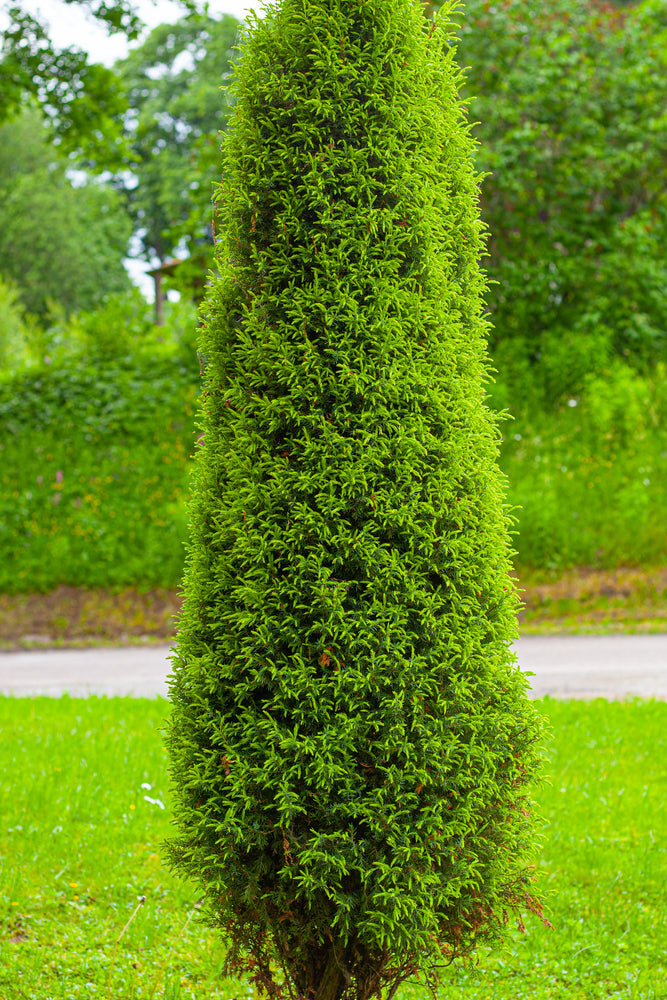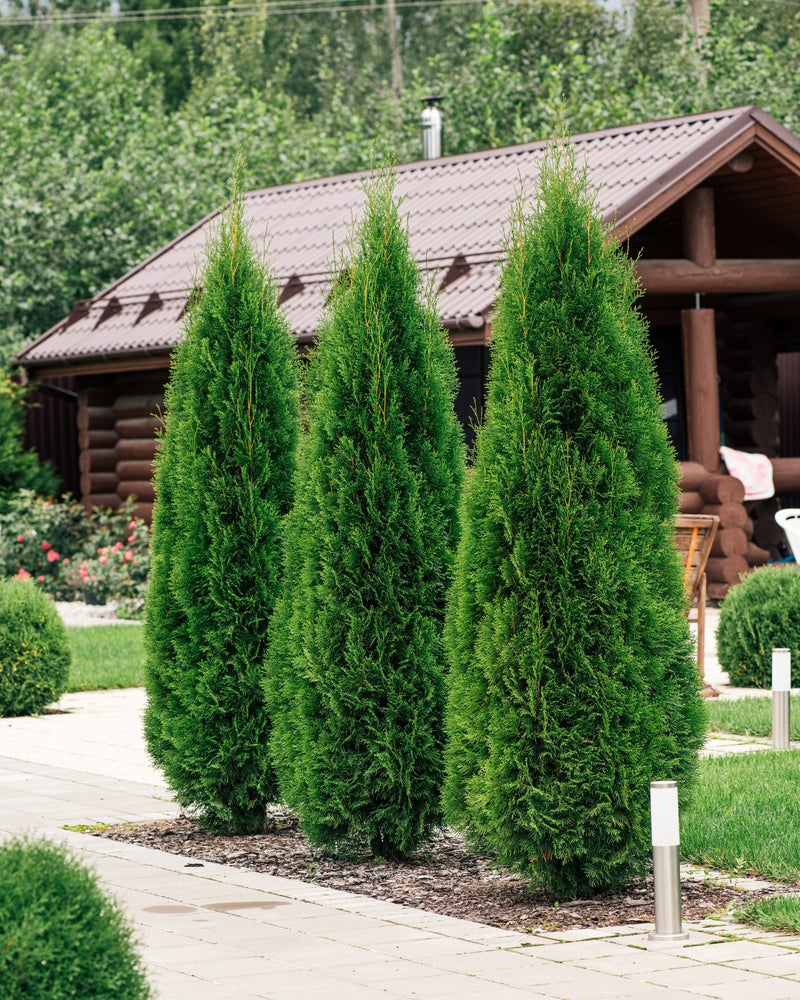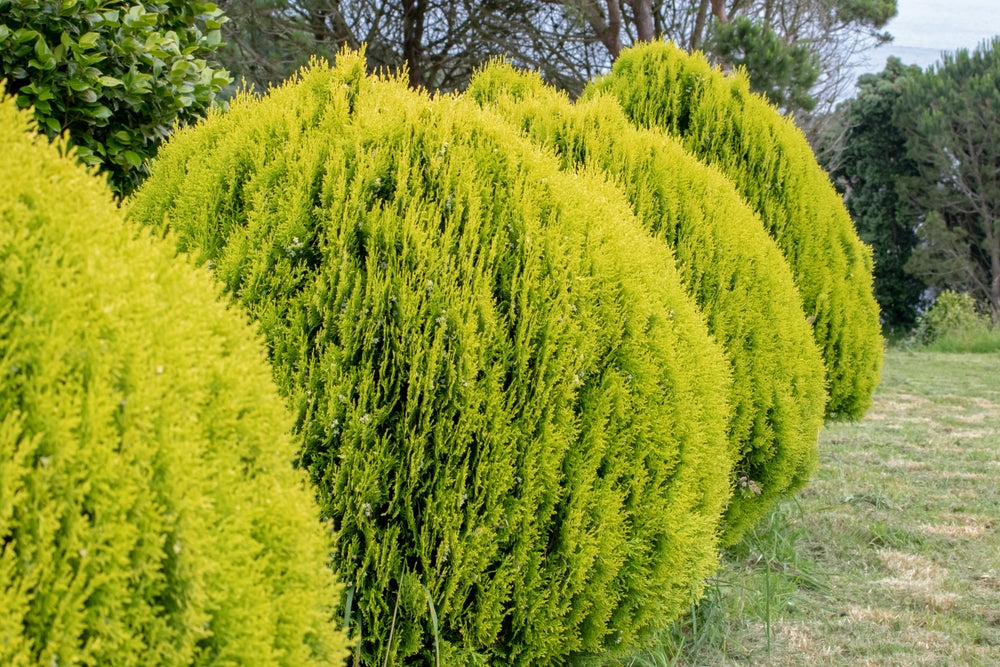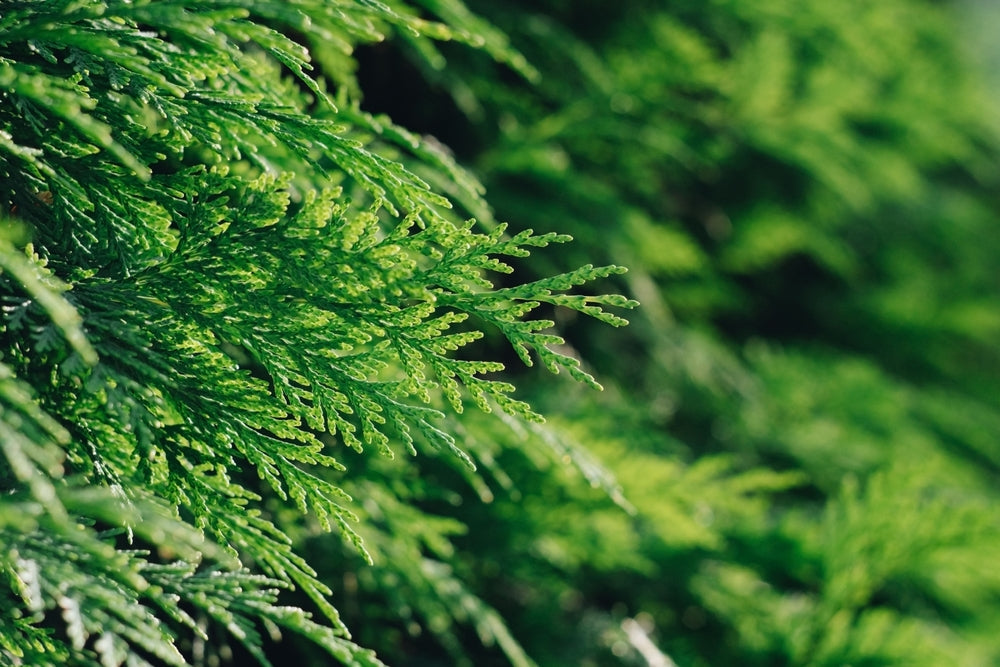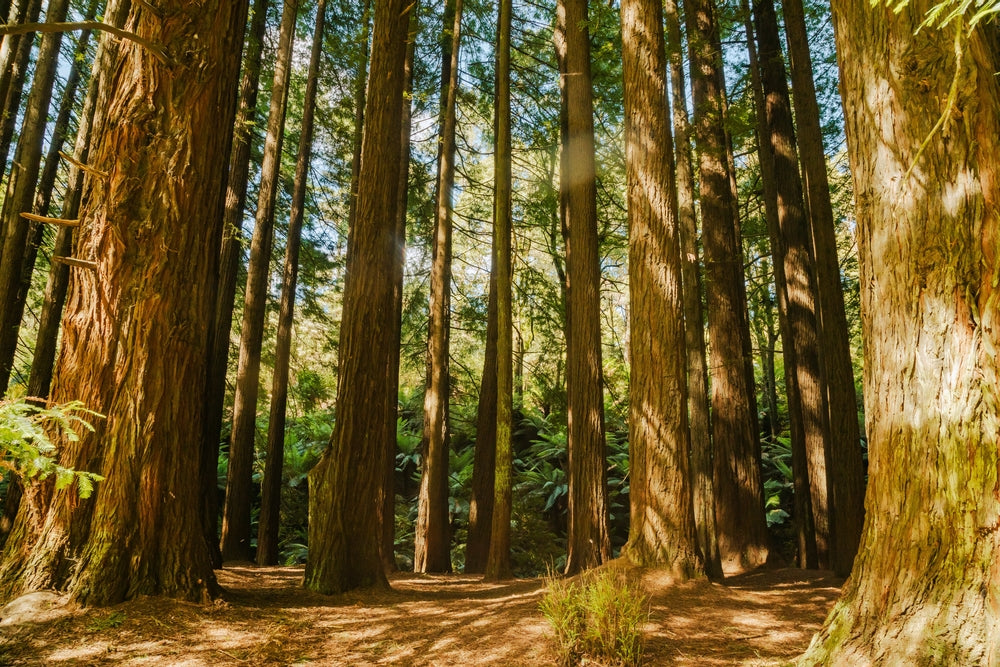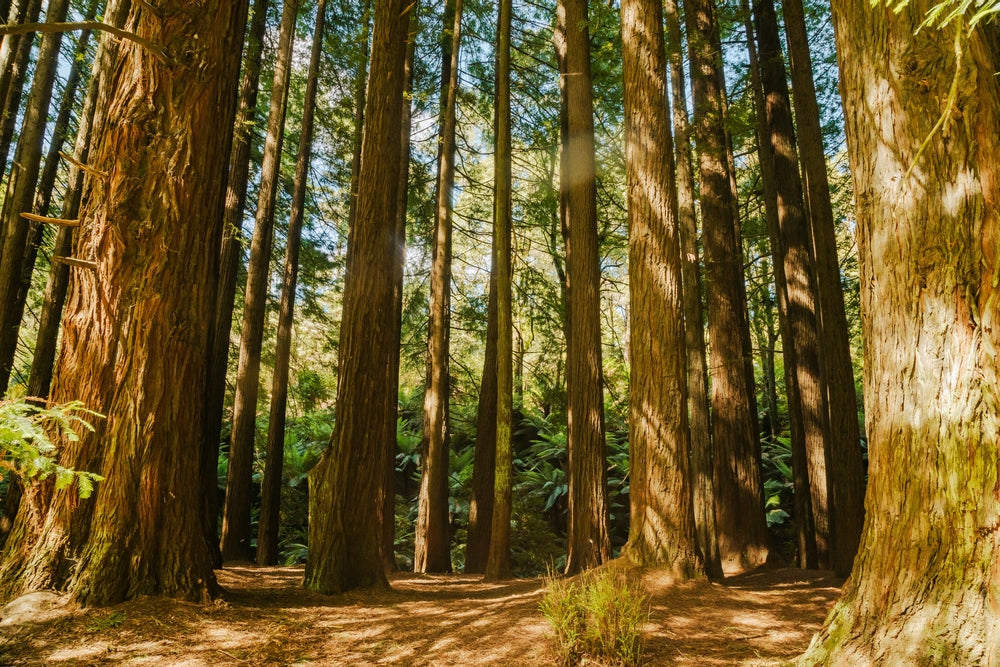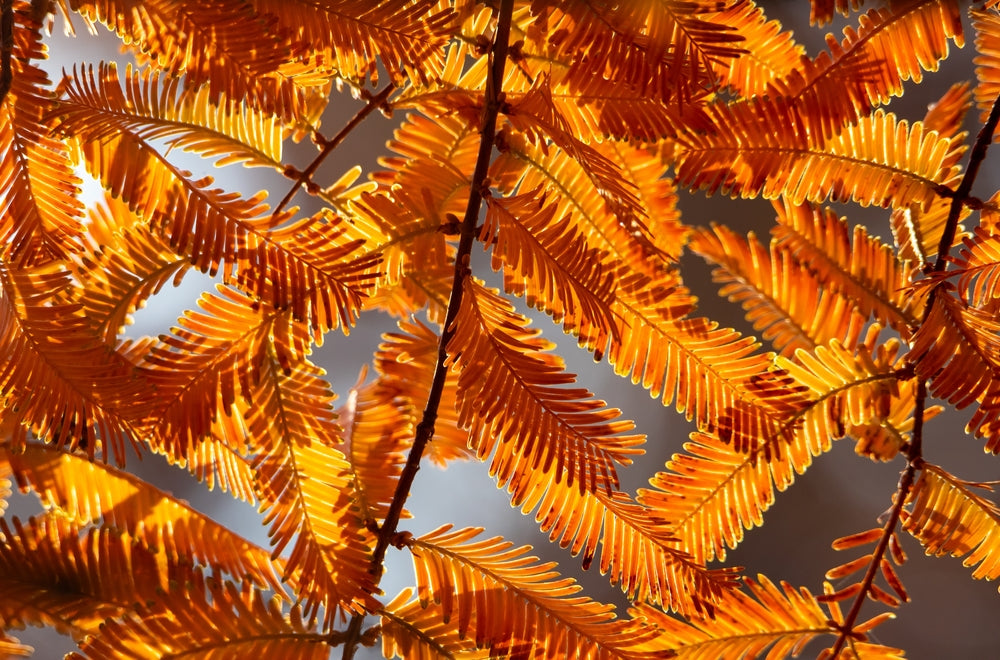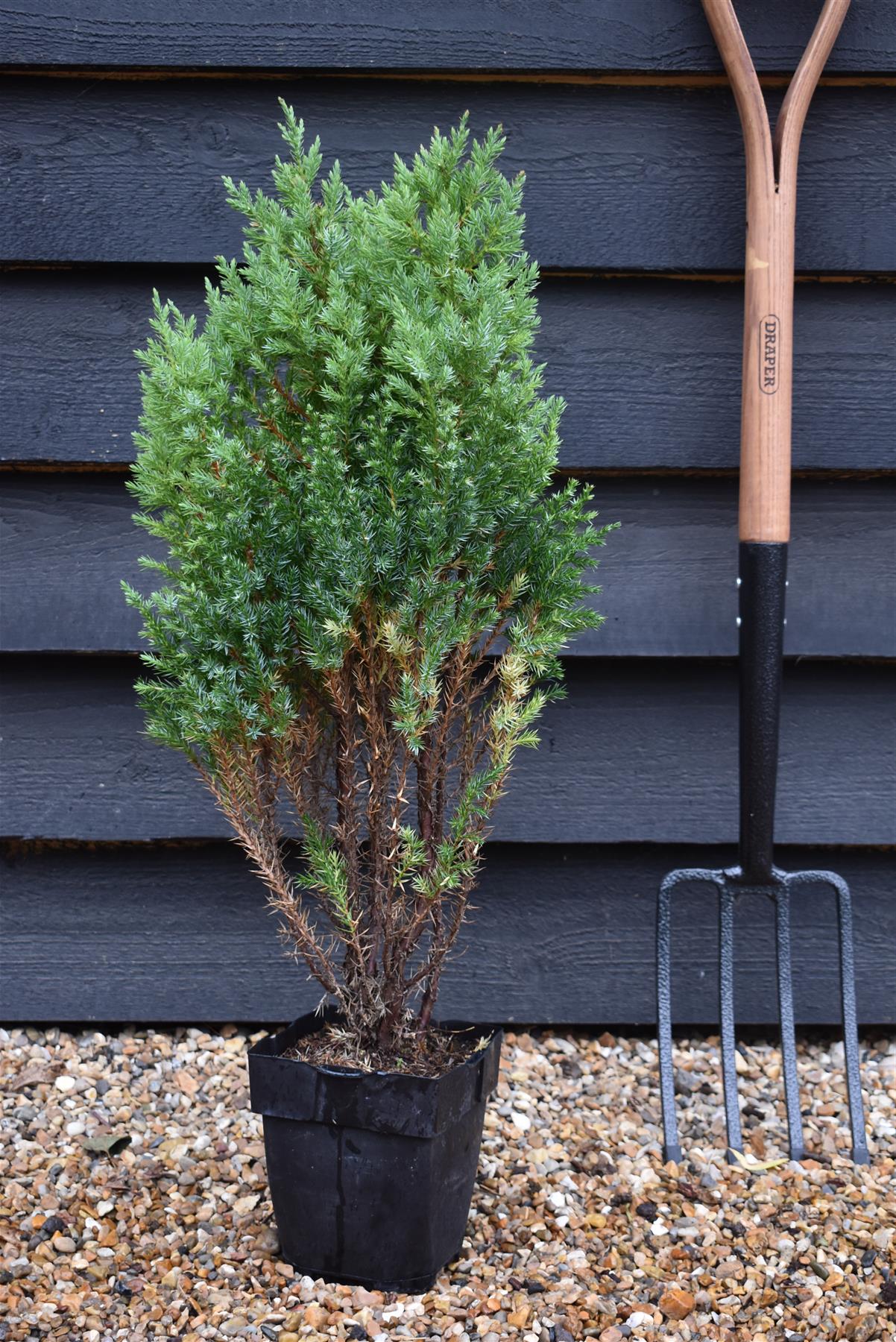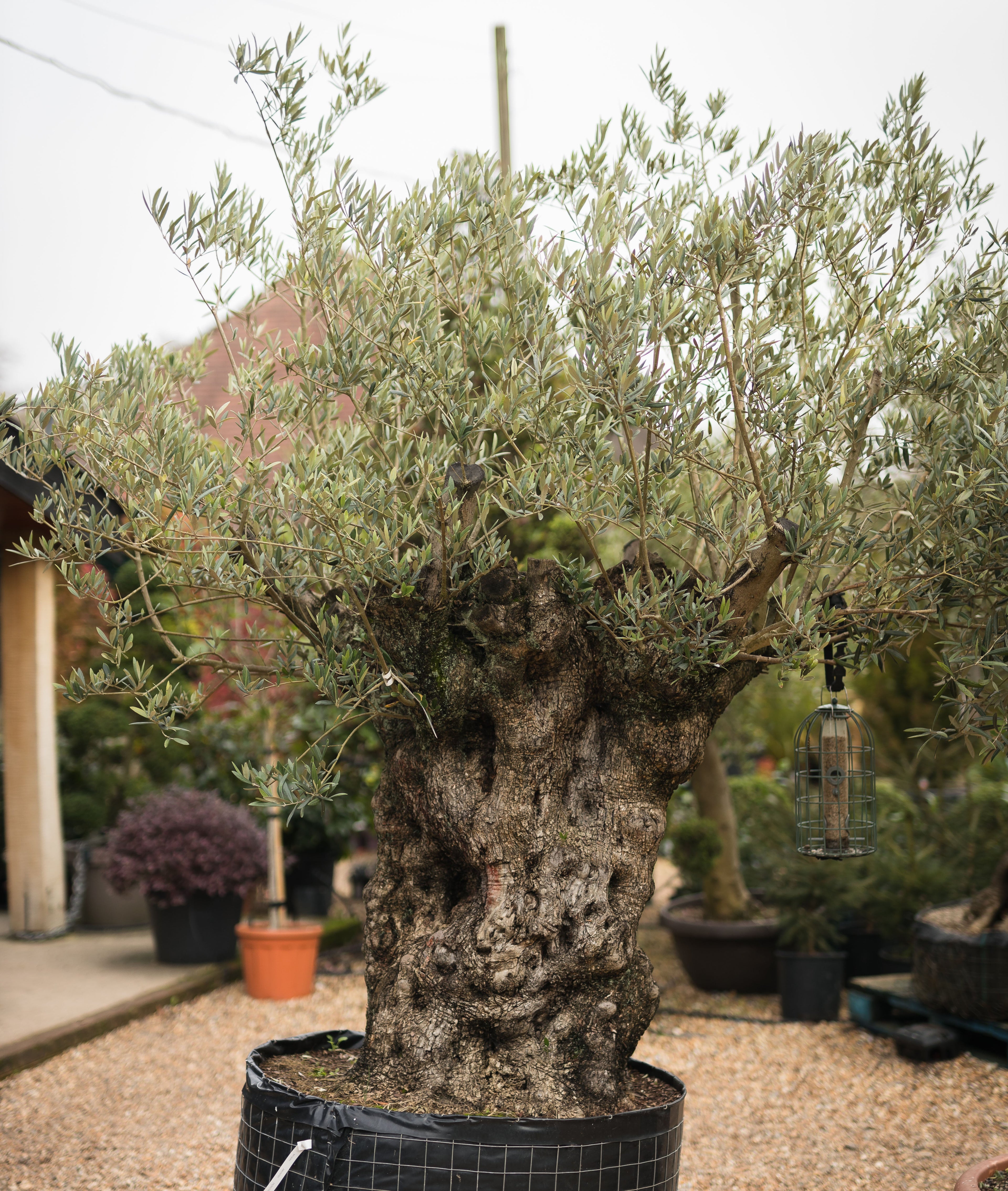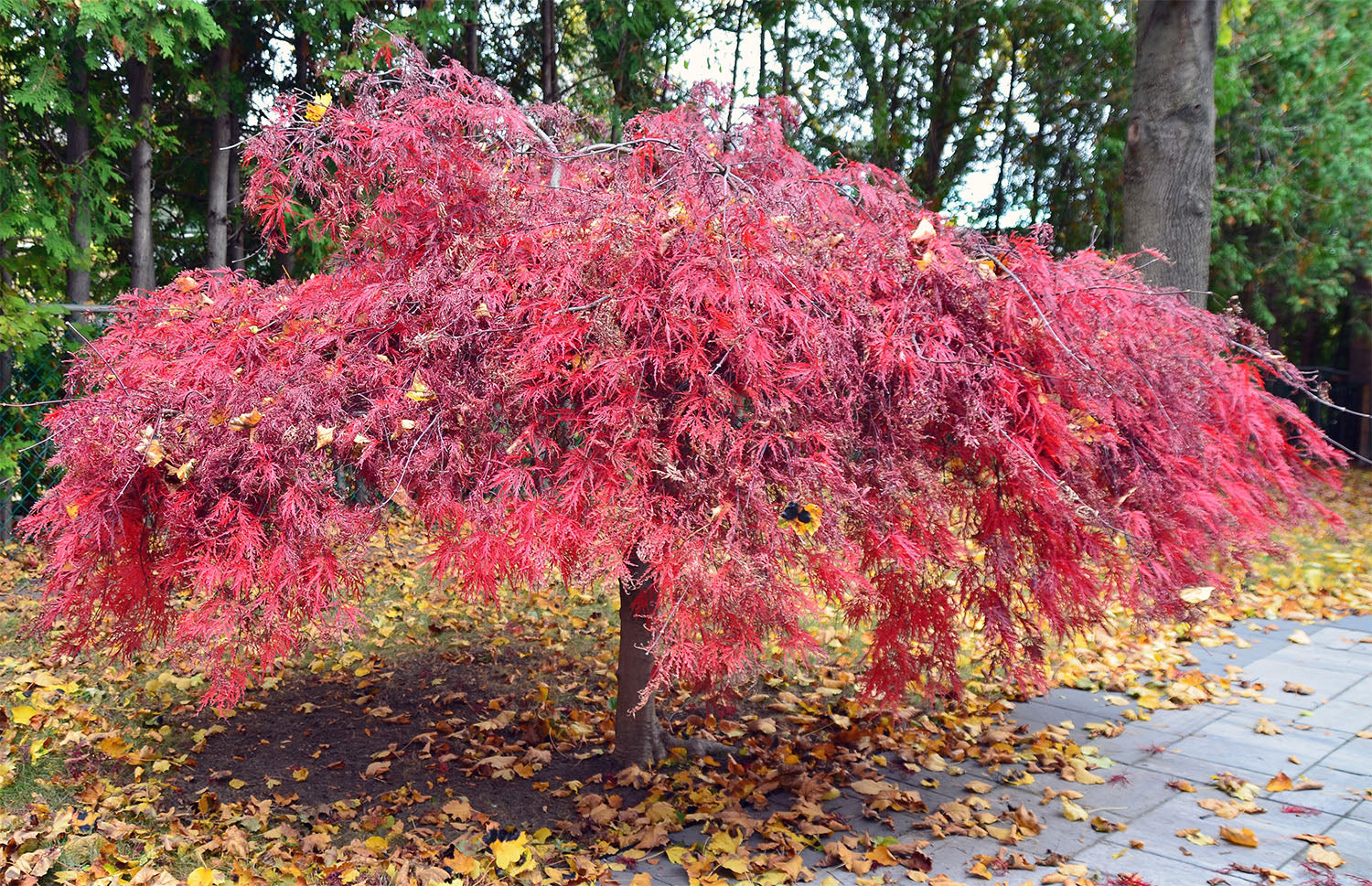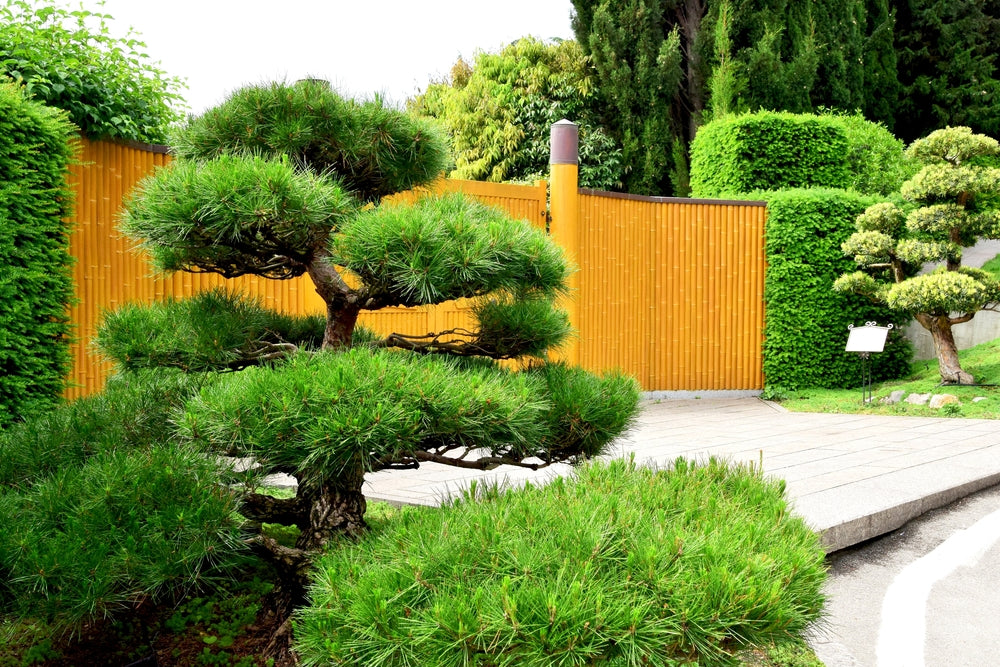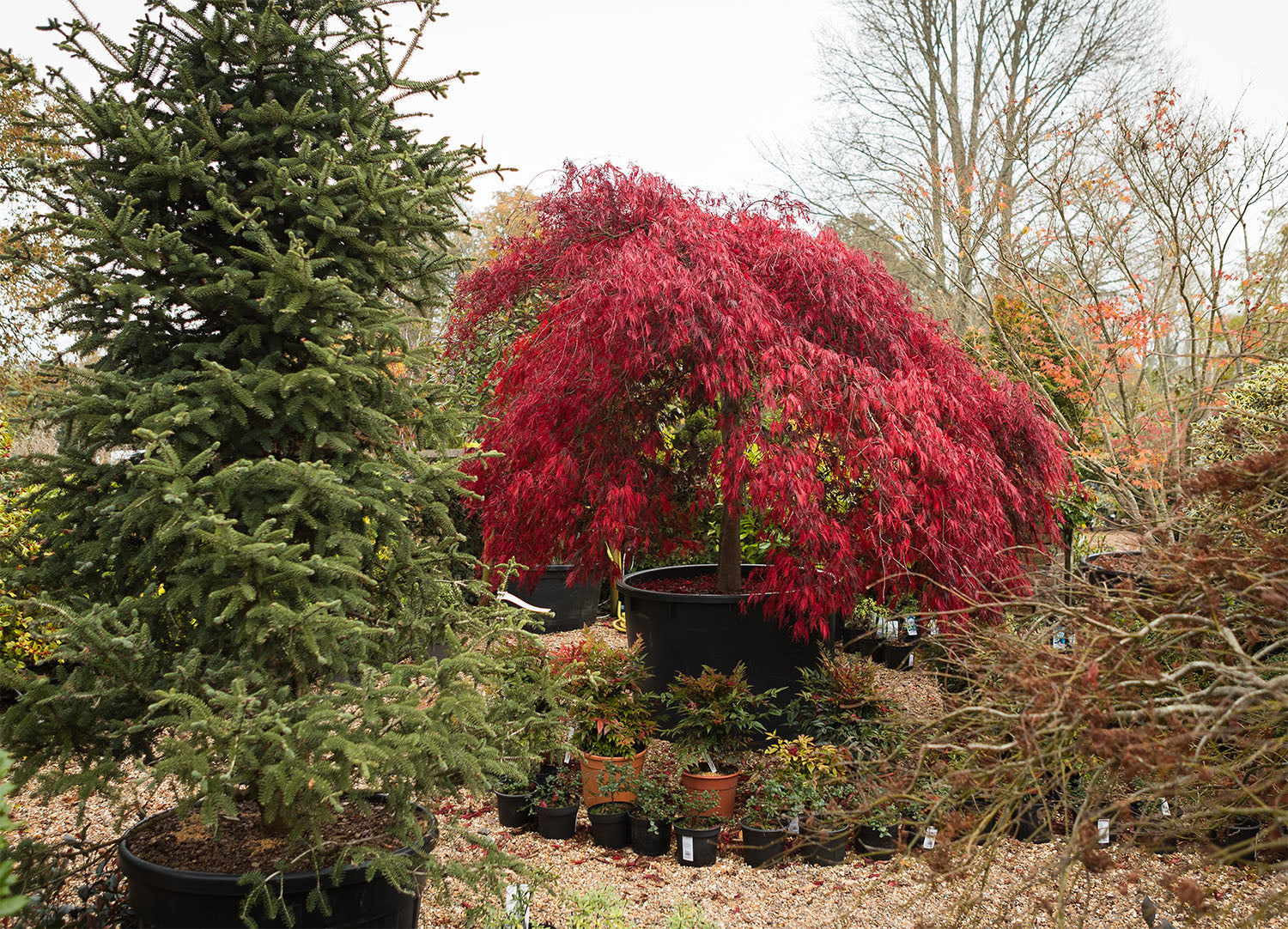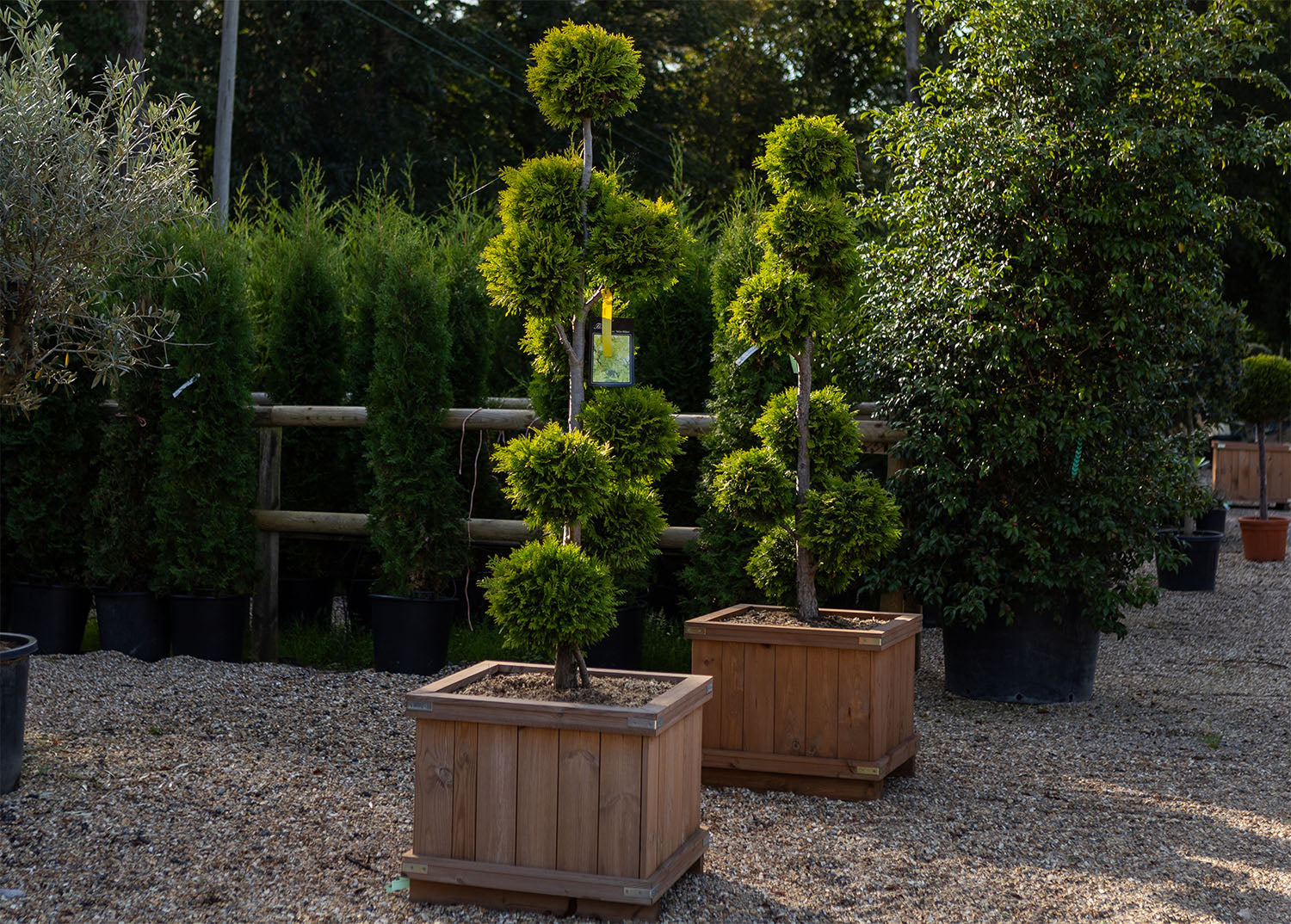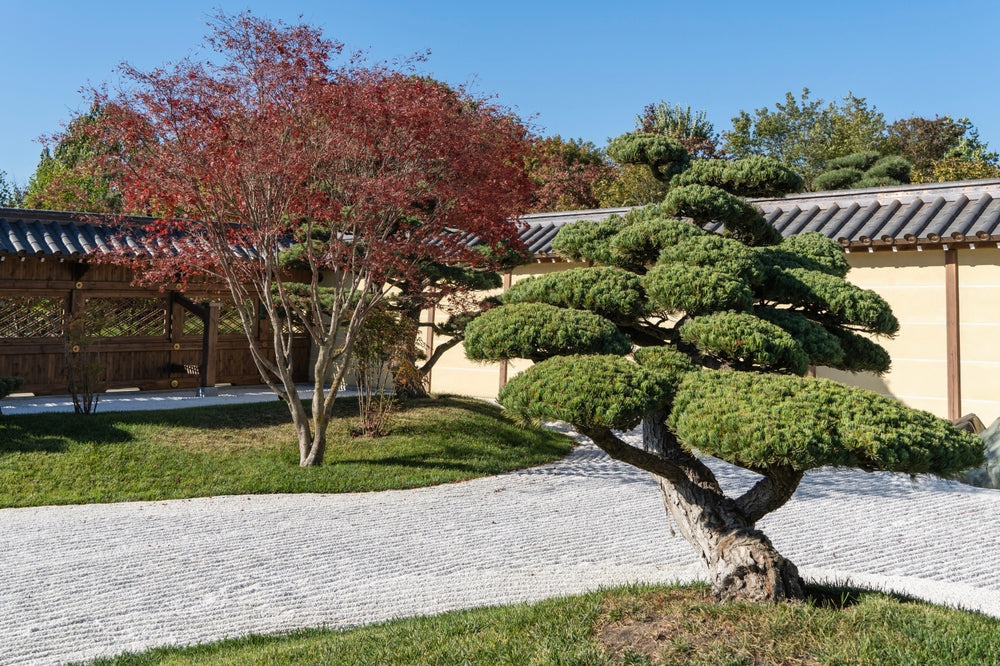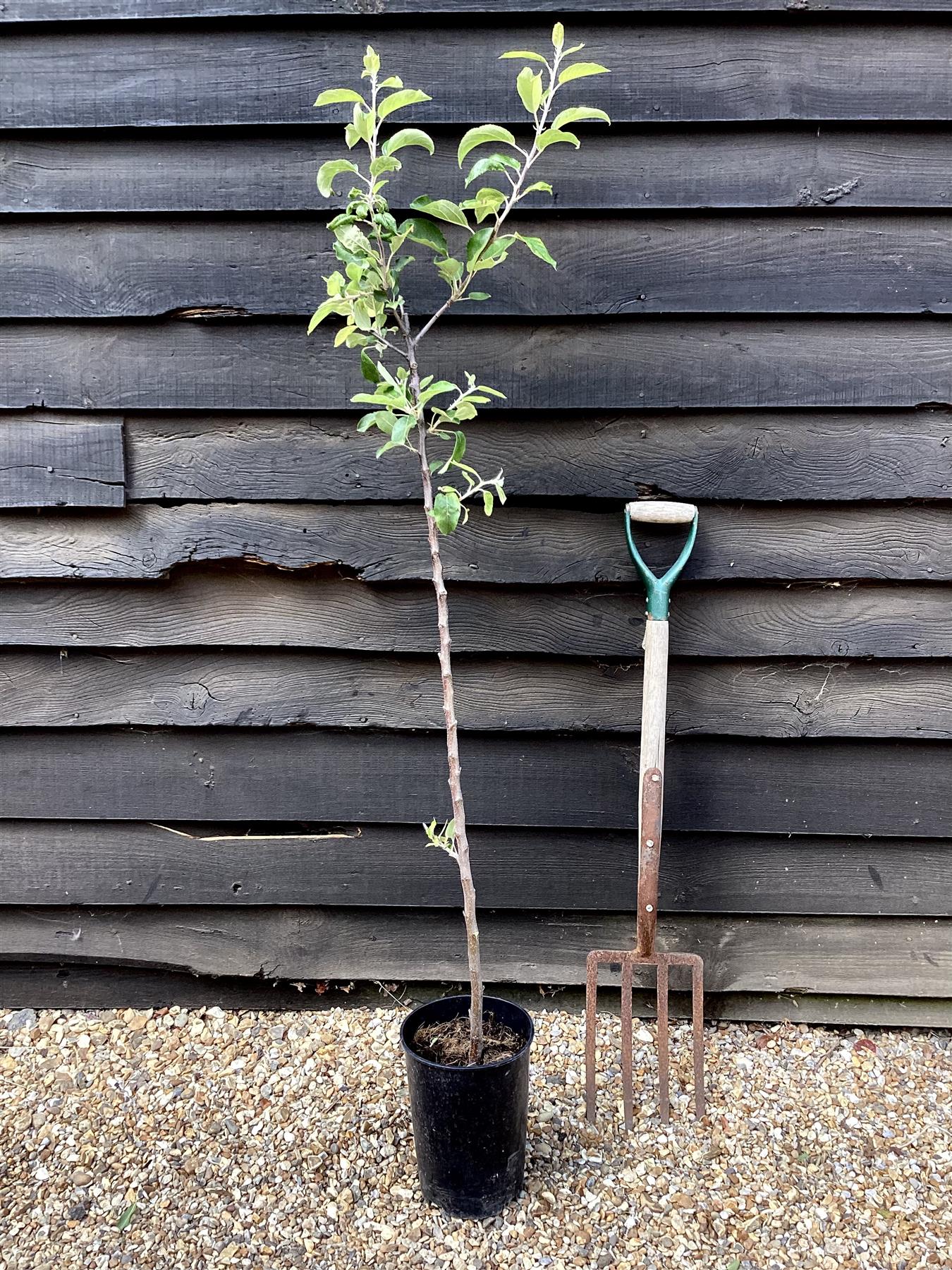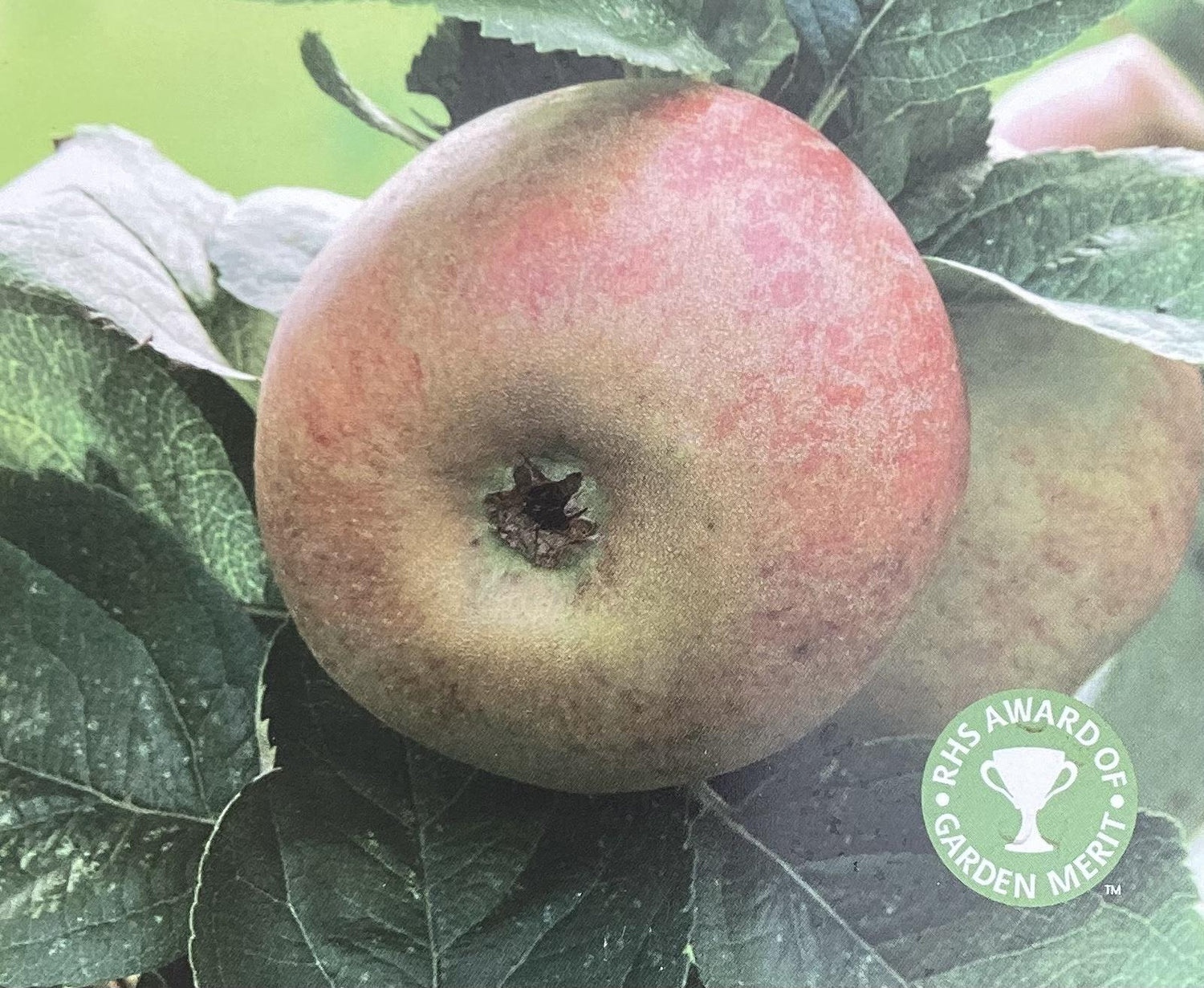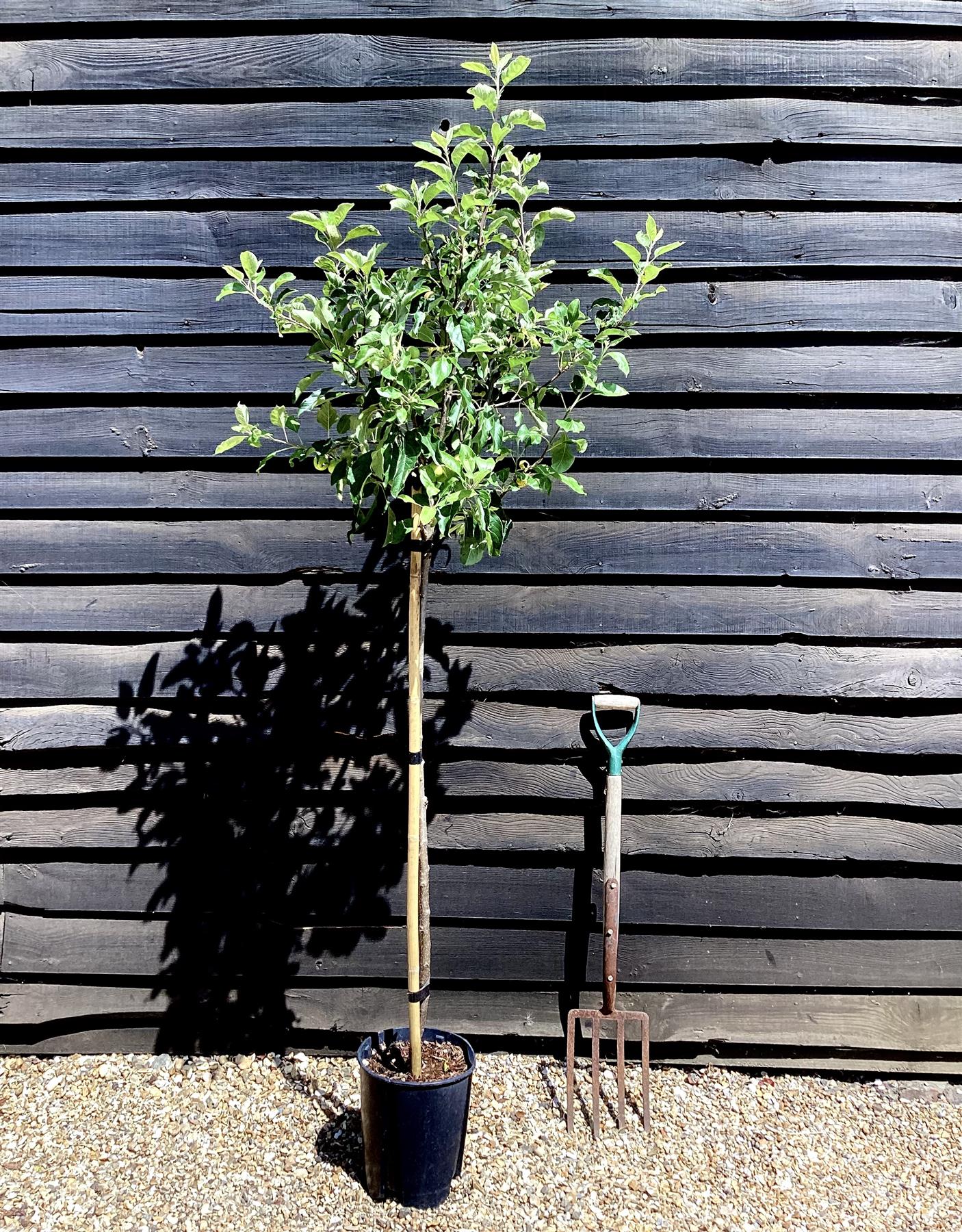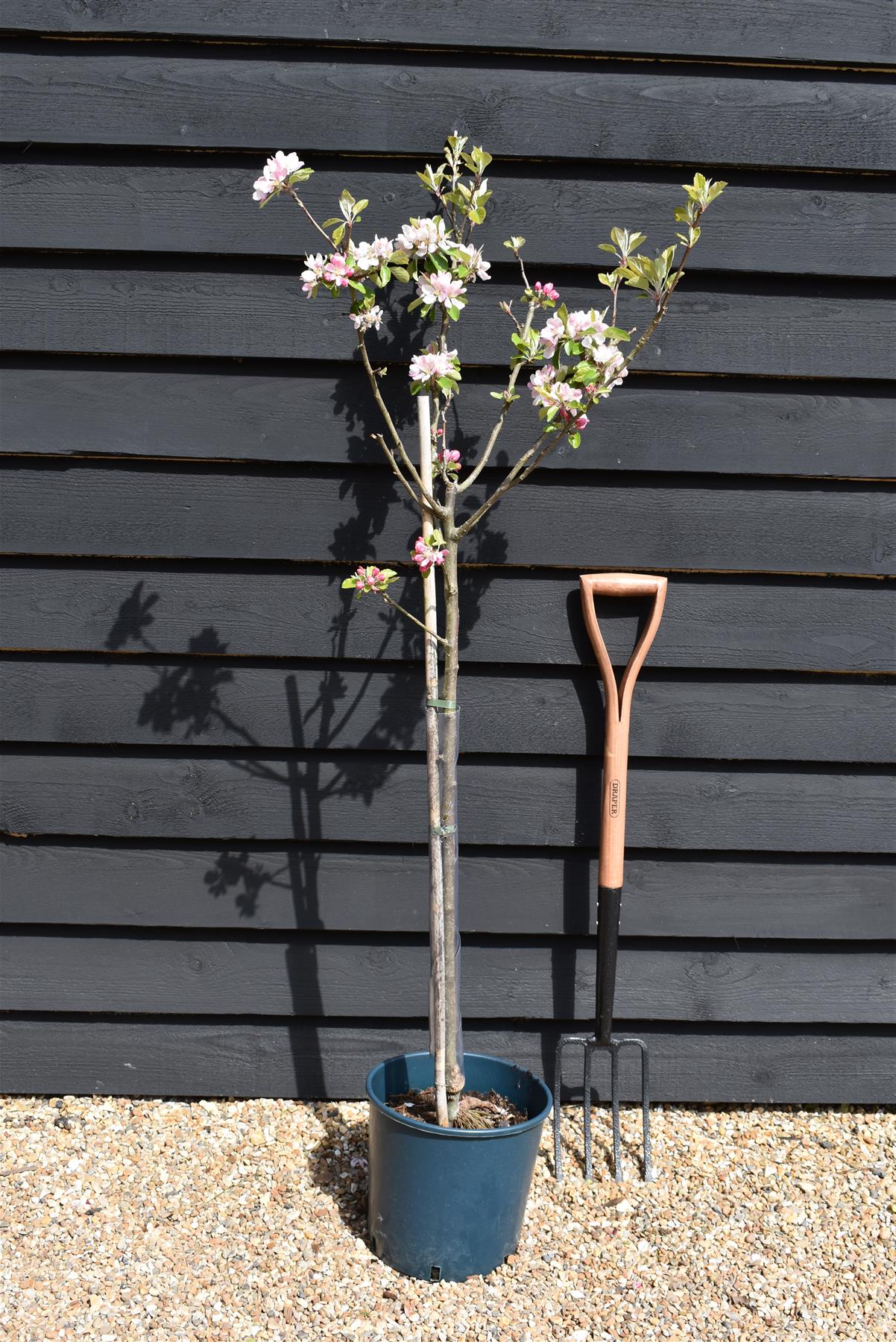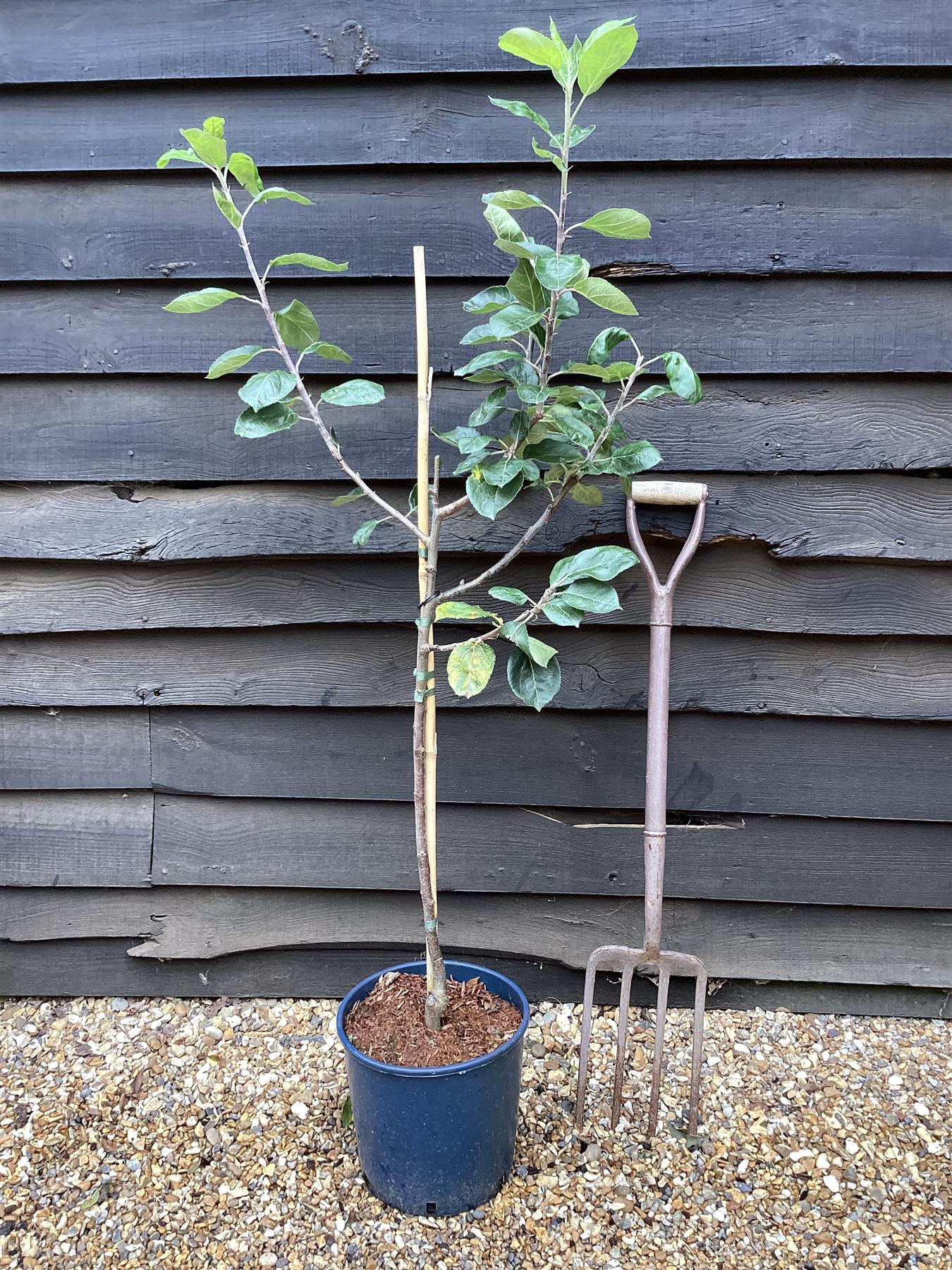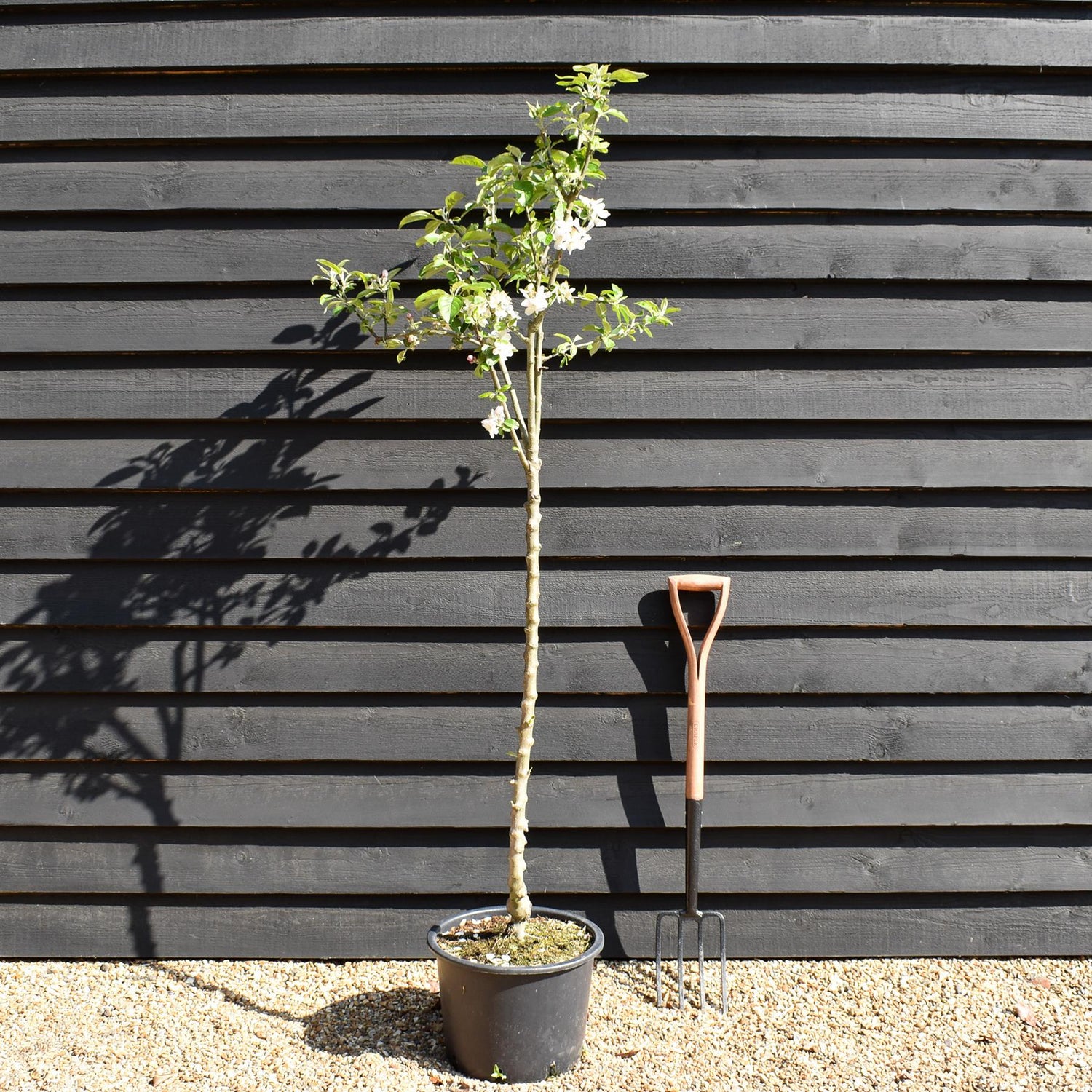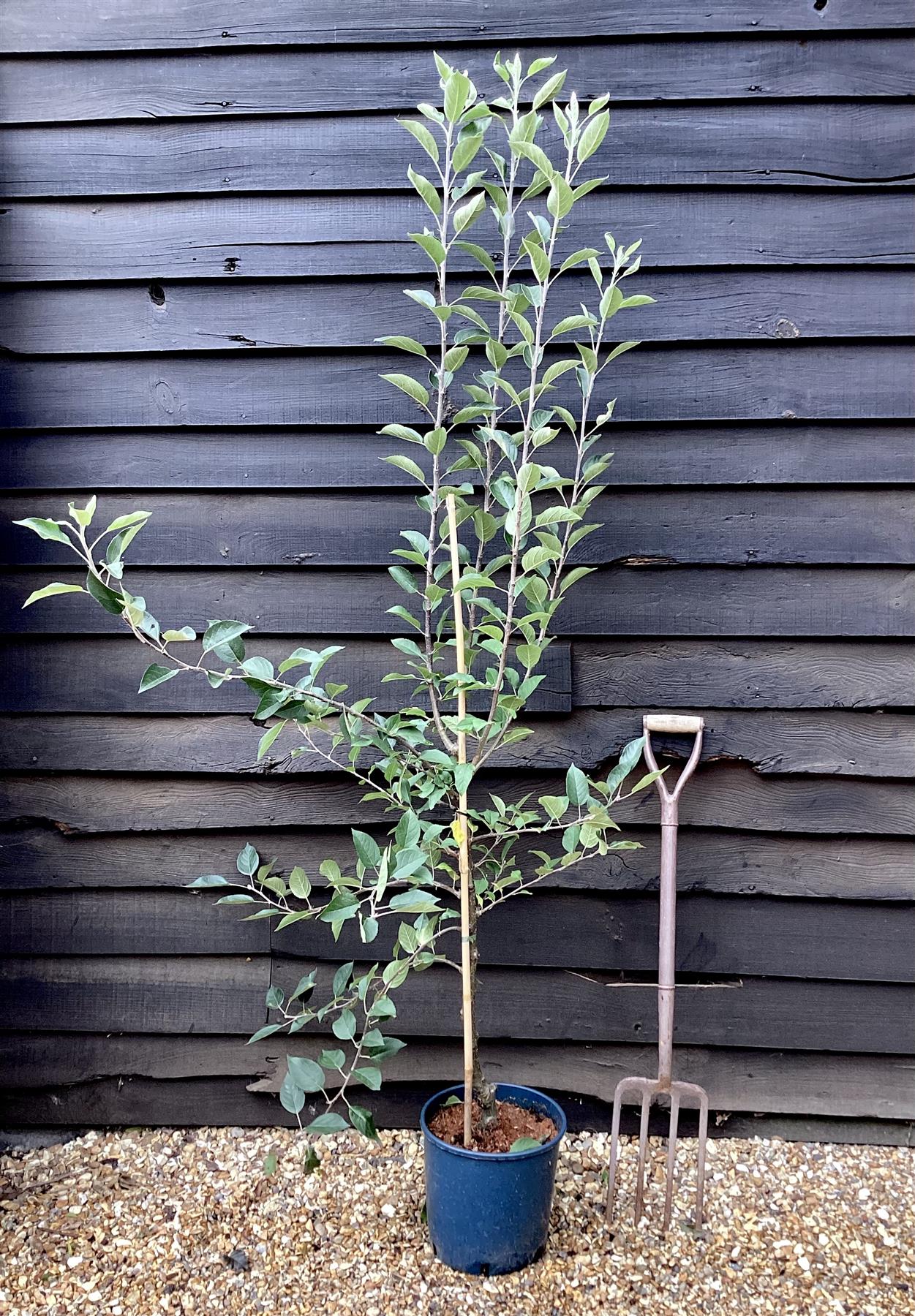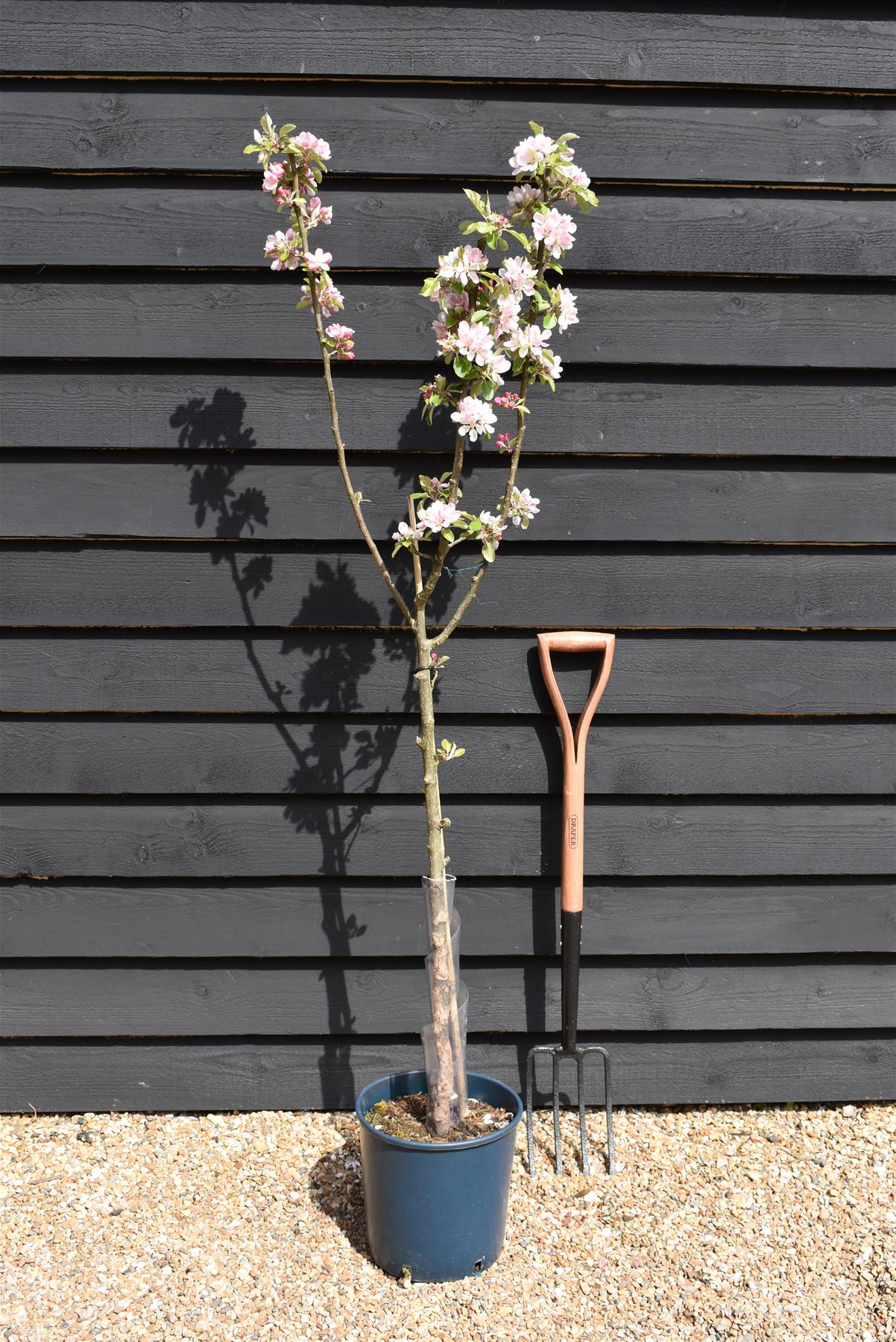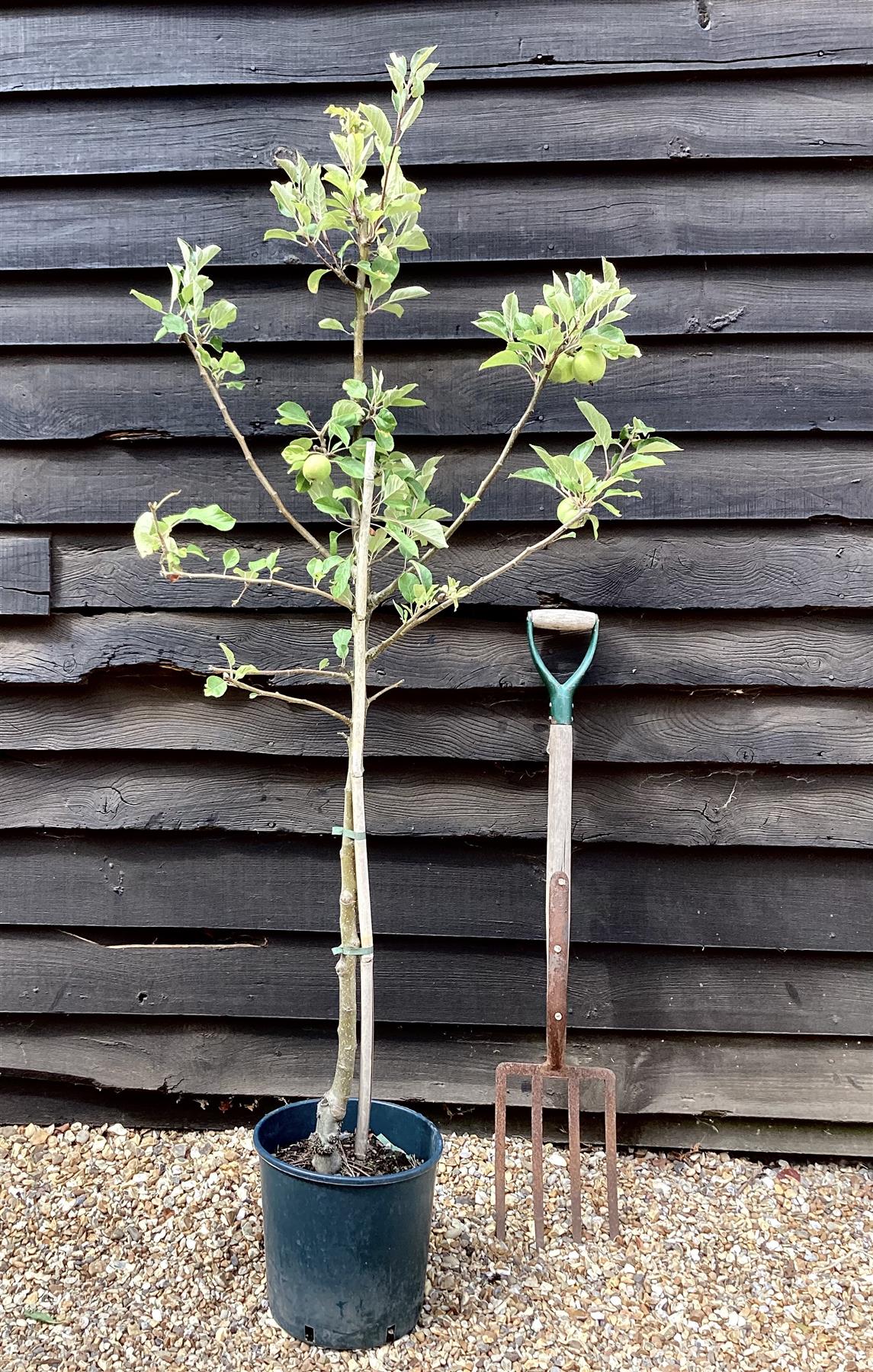120 products
120 products
Sort by:
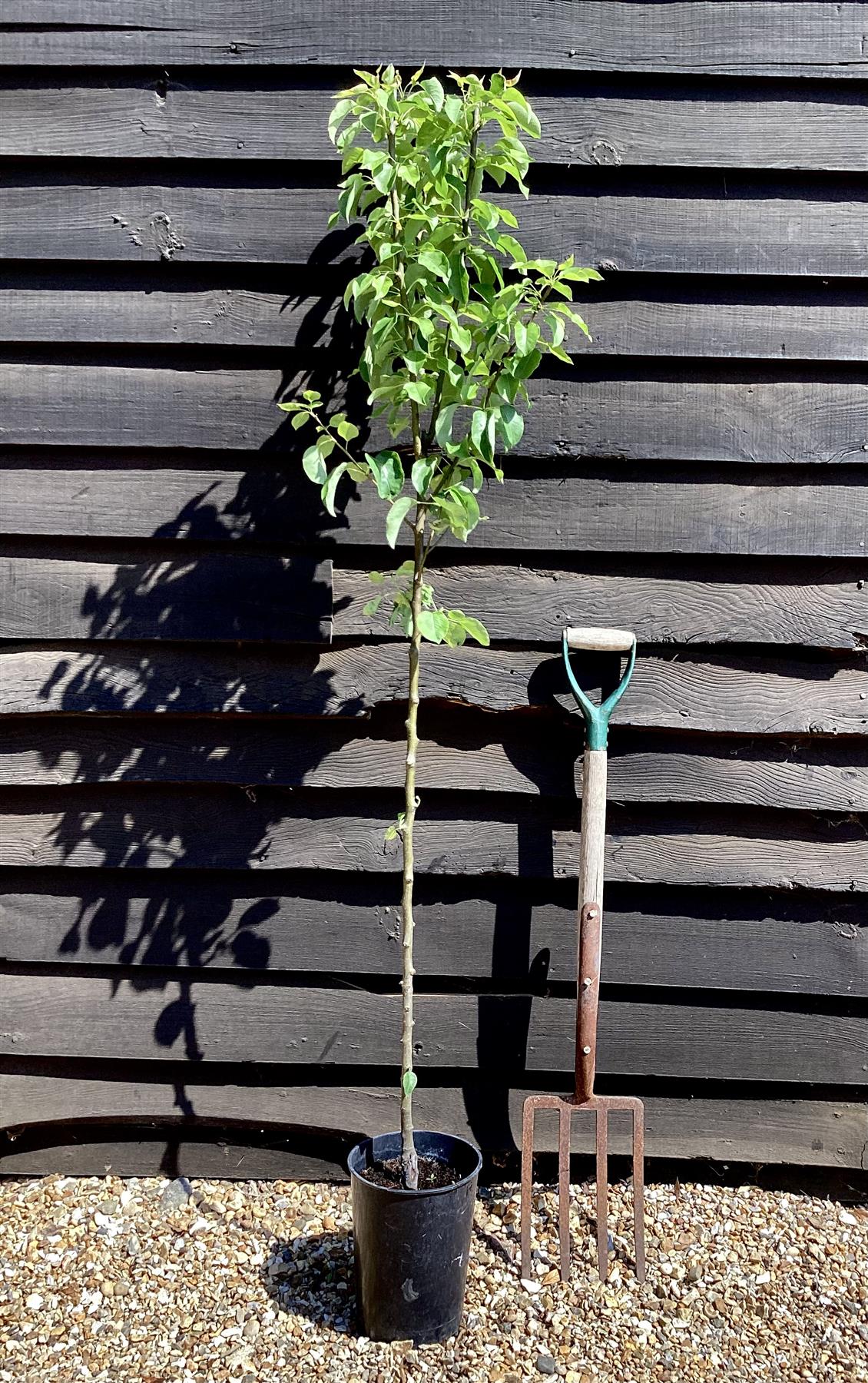
Pear tree 'Conference' | Pyrus communis - Half Standard- Height 160-180cm - 20lt
£94.00
Unit price perPear tree 'Conference' | Pyrus communis - Half Standard- Height 160-180cm - 20lt
£94.00
Unit price per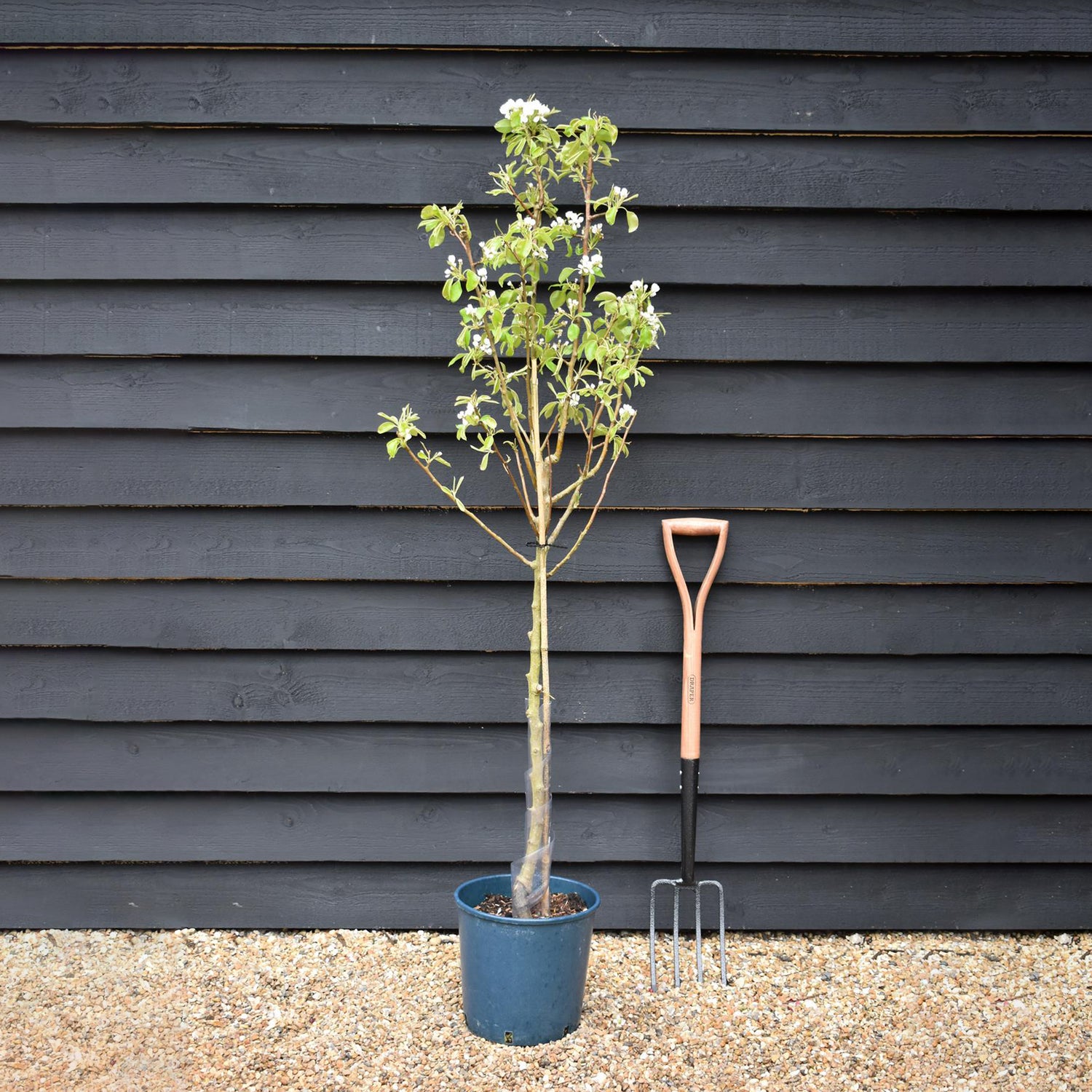
Pear 'Conference' | Pyrus communis - Height 160-180cm - 20lt
£94.00
Unit price perPear 'Conference' | Pyrus communis - Height 160-180cm - 20lt
£94.00
Unit price perApple tree 'Scrumptious' | Malus domestica - MM106 - Height 150-160cm - 20lt
£94.00
Unit price perApple tree 'Scrumptious' | Malus domestica - MM106 - Height 150-160cm - 20lt
£94.00
Unit price perMalus domestica 'Scrumptious' is an early-fruiting, dessert apple tree with ovate, dark green leaves and pale pink flowers blooming in spring. Flowers are followed by heavy crops of large, sweet, crisp, and aromatic apples with thin, red skin and tasty, white flesh, ready for harvesting in early autumn, usually September. Malus domestica 'Scrumptious' grows best in moderately fertile, moist, well-drained soils in full sun, but can adapt to a wide range of soils as long as they are well-drained. It can tolerate partial shade but the best cropping occurs if grown in full sun. It can withstand frost and, therefore, suitable for colder areas. Fairly resistant to pests and diseases. It is self-fertile and a good pollinator to other varieties. May require pruning and fruit thinning for better crops. Apple 'Scrumptious' is a modern English dessert apple, a cross between the Golden Delicious and the Discovery. Great option for small informal and cottage gardens and for growing in containers.
Root stock MM106 is a semi-dwarfing rootstock commonly used for apple trees. It offers a moderate growth rate, producing trees 10-15 feet tall when mature. Suitable for medium-sized gardens, MM106 ensures good fruit yield and adaptability to various soils. It's resistant to woolly apple aphid and moderately resistant to crown rot. Ideal for bush, cordons, and espalier forms. Ensure proper staking in early years.
Apple tree 'Bramley's Seedling' | Malus domestica - MM106 - Semi-Dwarfing - Height 150-160cm - 20lt
£94.00
Unit price perApple tree 'Bramley's Seedling' | Malus domestica - MM106 - Semi-Dwarfing - Height 150-160cm - 20lt
£94.00
Unit price perBramley's Seedling Apple is an English cooking apple and one of the best culinary apples in the world. It was discovered in 1809. in Nottinghamshire in England. Bramley apples are large, mostly green, slightly reddish, juicy, sharply acidic, and with excellent, strong flavour. They are used mostly for cooking and baking as they can be cooked down to a smooth puree. Bramley's Seedling Apple tree is very large and vigorous, with oval green leaves and beautiful crimson flowers. For smaller gardens, it needs to be grown on dwarfing rootstock. It is very easy to grow and also known for its longevity. The original tree is alive to this day and still producing apples. It prefers sunny, sheltered locations and neutral, moist and well-drained soil. The only problem could be pollination since Bramley's Seedling Apple needs two different pollinating apple trees nearby to be successfully pollinated.
Root stock - MM106 is a semi-dwarfing rootstock commonly used for apple trees. It offers a moderate growth rate, producing trees 10-15 feet tall when mature. Suitable for medium-sized gardens, MM106 ensures good fruit yield and adaptability to various soils. It's resistant to woolly apple aphid and moderately resistant to crown rot. Ideal for bush, cordons, and espalier forms. Ensure proper staking in early years.
Apple tree 'Golden Delicious' | Malus Domestica - Semi Dwarfing - Height 150-180cm, 20lt
£94.00
Unit price perApple tree 'Golden Delicious' | Malus Domestica - Semi Dwarfing - Height 150-180cm, 20lt
£94.00
Unit price perMalus Domestica 'Golden Delicious’ is a heavily-producing, deciduous apple tree, with oval, dark green leaves and lovely, fragrant, white flowers blooming in April. Attractive to bees, butterflies, and hummingbirds. Flowers are followed by heavy and regular crops of greenish-yellow to golden-yellow, delicious, sweet, crispy, juicy, and aromatic apples. Malus Domestica 'Golden Delicious’ grows best in moderately fertile, neutral, deep, loamy, moist, well-drained soils. It thrives in full sun, but can adapt to partial shade. It requires cold winters for good fruit production, but it has to be sheltered from harsh winter winds. It is self-fertile but needs a pollinator of anther variety blooming at the same time for better crops. Regular pruning and fruit thinning are required to improve fruit size and quality. 'Golden Delicious' Apple is a wonderful, ornamental tree, a nice addition to any garden. It is primarily grown for its delicious fruit, perfect for eating fresh and great for cooking. One of the best apple varieties.
Apple tree 'Blenheim Orange' | Malus domestica - MM106 - Semi Vigorous - Height 150-160cm - 20lt
£94.00
Unit price perApple tree 'Blenheim Orange' | Malus domestica - MM106 - Semi Vigorous - Height 150-160cm - 20lt
£94.00
Unit price perMalus domestica Blenheim Orange is a very old English apple variety. It’s an attractive, vigorous apple tree with pale pink flowers blooming in April and May and large, golden, flushed red, crisp, nutty, dessert and cooking apples with crumbly texture. Ready for harvesting in September and October. Malus domestica Blenheim Orange prefers moderately fertile, moist, well-drained soil in full sun. It can tolerate partial shade, but the crop is best in full sun. It is suitable for northerly, cooler, rainier climates. Resistant to scab and mildew. It can withstand frost, but it needs to be sheltered from harsh winds. It’s a triploid, it needs two other varieties for pollination. Regular pruning is required. Apple ‘Blenheim Orange’ is a vigorous architectural tree perfect for informal, cottage, and urban gardens. Suitable for growing in containers. Fruits can be eaten fresh, cooked to purée or cooked to keep its shape. It is thought to be one of the best dual purpose apples.
Root Stock MM106 is a semi-dwarfing rootstock commonly used for apple trees. It offers a moderate growth rate, producing trees 10-15 feet tall when mature. Suitable for medium-sized gardens, MM106 ensures good fruit yield and adaptability to various soils. It's resistant to woolly apple aphid and moderately resistant to crown rot. Ideal for bush, cordons, and espalier forms. Ensure proper staking in early years.
Apple tree 'Idared' | Malus domestica - Semi Dwarfing - Height 160-170cm - 20lt
£94.00
Unit price perApple tree 'Idared' | Malus domestica - Semi Dwarfing - Height 160-170cm - 20lt
£94.00
Unit price perApple tree 'Sunset' | Malus domestica - MM106 - Semi Dwarfing - Height 150-160cm - 20lt
£94.00
Unit price perApple tree 'Sunset' | Malus domestica - MM106 - Semi Dwarfing - Height 150-160cm - 20lt
£94.00
Unit price perApple tree 'Red Devil' | Malus domestica - M26 - Dwarfing - 150-160cm - 20lt
£94.00
Unit price perApple tree 'Red Devil' | Malus domestica - M26 - Dwarfing - 150-160cm - 20lt
£94.00
Unit price perRed Devil Apple plant is a deciduous, hardy, vigorous tree with a bushy, upright habit, attractive pink-white flowers, and stunning, deep red fruit. Its creamy flesh is white, but stained with red and produces beautiful pink juice. Red Devil apples ripen in mid-September and are harvested till mid-October. The fruit has juicy and moderately sweet and sharp taste with a hint of strawberry flavour. They store well and can be kept till January.
Red Devil Apple was bred by Hugh Ermen, in Faversham, Kent in 1975, and introduced in 1990 as an excellent, modern dessert apple. It is very resilient, generally disease-free, and adaptable to most weather conditions. It grows in almost any type of soil as long as it is moist and well-drained. It prefers full sun, but can tolerate partial shade. It is self-fertile and doesn’t need a pollination partner.
M26 is a semi-dwarfing rootstock (smaller than MM106) used for apple trees, particularly in orchards and home gardens. It produces trees 10-12 feet in height, making them easier to manage and harvest. M26 ensures early fruit production, good anchorage, and medium vigor. However, it requires staking during early years and is moderately susceptible to fire blight.
Apple tree 'Red Devil' | Malus domestica - MM106 - Semi-Dwarfing - 150-160cm - 20lt
£94.00
Unit price perApple tree 'Red Devil' | Malus domestica - MM106 - Semi-Dwarfing - 150-160cm - 20lt
£94.00
Unit price perRed Devil Apple plant is a deciduous, hardy, vigorous tree with a bushy, upright habit, attractive pink-white flowers, and stunning, deep red fruit. Its creamy flesh is white, but stained with red and produces beautiful pink juice. Red Devil apples ripen in mid-September and are harvested till mid-October. The fruit has juicy and moderately sweet and sharp taste with a hint of strawberry flavour. They store well and can be kept till January.
Red Devil Apple was bred by Hugh Ermen, in Faversham, Kent in 1975, and introduced in 1990 as an excellent, modern dessert apple. It is very resilient, generally disease-free, and adaptable to most weather conditions. It grows in almost any type of soil as long as it is moist and well-drained. It prefers full sun, but can tolerate partial shade. It is self-fertile and doesn’t need a pollination partner.
Root stock MM106 is a semi-dwarfing rootstock commonly used for apple trees. It offers a moderate growth rate, producing trees 10-15 feet tall when mature. Suitable for medium-sized gardens, MM106 ensures good fruit yield and adaptability to various soils. It's resistant to woolly apple aphid and moderately resistant to crown rot. Ideal for bush, cordons, and espalier forms. Ensure proper staking in early years.
Apple tree 'King of the Pippins' | Malus Domestica - Semi Dwarfing - Height 150-180cm, 20lt
£94.00
Unit price perApple tree 'King of the Pippins' | Malus Domestica - Semi Dwarfing - Height 150-180cm, 20lt
£94.00
Unit price perMalus Domestica 'King of the Pippins' is a type of apple that is known for its distinct taste and appearance. This heirloom variety has been grown for over 300 years and remains popular today due to its exceptional flavour and crisp texture.
The fruit has a round to oblong shape with a greenish-yellow skin that is often blushed with red. The skin is thin and tender, making it easy to bite into. The flesh is creamy white and has a firm texture with a sweet, juicy, and slightly tart taste.
'King of the Pippins' apples are typically harvested in mid to late September and can be stored for several weeks in a cool, dark place. They are versatile apples that can be used in a variety of ways, including eating raw, baking, cooking, and juicing.
This apple variety is also known for its disease-resistant qualities, making it a popular choice for home gardeners and commercial growers alike. Its hardiness and adaptability make it well-suited to a wide range of growing conditions.
Overall, Malus Domestica 'King of the Pippins' is a delicious and versatile apple that is a favourite among apple enthusiasts for its outstanding flavour, texture, and appearance.
Apple tree 'Discovery' | Malus domestica - MM106 - Semi-Dwarfing - Height 140-150cm - 20lt
£96.00
Unit price perApple tree 'Discovery' | Malus domestica - MM106 - Semi-Dwarfing - Height 140-150cm - 20lt
£96.00
Unit price perMalus domestica 'Discovery' is an excellent early-producing apple tree with an upright, compact growth habit. Attractive white flowers emerge in spring, and delicious bright red apples, with hints of green and yellow, are ready for harvesting in late August and September. The apples are hard and crisp, sweet and slightly acidic, with delicate light flavour that has a touch of strawberry. As every early-producing variety, it can be stored only for a short period of time. Discovery Apple tree is very easy to care for. It is resilient and undemanding. It prefers neutral, well-drained soil, and full sun in a sheltered position. It is generally disease-resistant and pest-resistant and tolerates frost very well. It is not self-pollinating. It needs to cross-pollinate with other apple trees. As a partial tip-barer, it can be grown in cordons and espaliers. Suitable for containers and large pots.
Root stock MM106 is a semi-dwarfing rootstock commonly used for apple trees. It offers a moderate growth rate, producing trees 10-15 feet tall when mature. Suitable for medium-sized gardens, MM106 ensures good fruit yield and adaptability to various soils. It's resistant to woolly apple aphid and moderately resistant to crown rot. Ideal for bush, cordons, and espalier forms. Ensure proper staking in early years.
Apple tree 'Katy' | Malus domestica - MM106 - Semi Vigorous - Height 160-170cm - 20lt
£94.00
Unit price perApple tree 'Katy' | Malus domestica - MM106 - Semi Vigorous - Height 160-170cm - 20lt
£94.00
Unit price perMalus domestica ‘Katy’ is a vigorous, early-season, heavy-cropping, deciduous apple tree with ovate, green leaves, orange and red in autumn, and lovely, white, scented flowers blooming in spring. Small to medium, bright red apples have white and juicy flash with sweet and refreshing flavour and are ready for harvesting in early September. Malus domestica ‘Katy’ prefers moderately fertile, moist, well-drained soils in sunny, sheltered positions. It doesn’t like acidic and shallow chalk soils, as well as shady areas. Resistant to frost and suitable for Northern European climates. Not self-fertile, it needs a pollinator nearby for flower pollination. Requires regular pruning and fruit thinning for better fruit size and quality. Apple 'Katya' is a cross between James Grieve and Worcester Pearmain. It’s a beautiful ornamental tree, a great addition to any informal, cottage, or urban garden. Suitable for wall-side borders and for growing in containers. Apples are perfect for making juices, but also to be eaten fresh.
Root stock MM106 is a semi-dwarfing rootstock commonly used for apple trees. It offers a moderate growth rate, producing trees 10-15 feet tall when mature. Suitable for medium-sized gardens, MM106 ensures good fruit yield and adaptability to various soils. It's resistant to woolly apple aphid and moderately resistant to crown rot. Ideal for bush, cordons, and espalier forms. Ensure proper staking in early years.
Apple tree 'Laxton's Superb' | Malus domestica - MM106 - Semi-Vigorous - Height 160-170cm - 20lt
£94.00
Unit price perApple tree 'Laxton's Superb' | Malus domestica - MM106 - Semi-Vigorous - Height 160-170cm - 20lt
£94.00
Unit price perLaxton's Superb Apple is an old-fashioned, traditional, sweet, aromatic dessert apple. It was bred by Laxton Brothers in Bedford, UK in 1897. This apple plant is great for cold or exposed locations. It is fast-growing, but has a tendency to biennial bearing. It brings better crop when planted with another variety. It prefers full sun and fertile, well-drained soil. Doesn’t like very acidic soils, shallow chalk soils, and shade more than half of the day. Its flowers are pretty and fragrant, white with some pink, self-pollinating and long-lasting.
The fruit is green-yellow with orange-red blush and crisp firm flesh. It is similar to Cox’s Orange Pippin, which is one of its parents, but it is a bit superior with larger fruits, slightly richer flavour and better keeping qualities. Ready for harvesting in October, it can be stored till January. Late-season and heavy cropping.
Root stock MM106 is a semi-dwarfing rootstock commonly used for apple trees. It offers a moderate growth rate, producing trees 10-15 feet tall when mature. Suitable for medium-sized gardens, MM106 ensures good fruit yield and adaptability to various soils. It's resistant to woolly apple aphid and moderately resistant to crown rot. Ideal for bush, cordons, and espalier forms. Ensure proper staking in early years.
Malus domestica 'Belle de Boskoop' is a cultivar of apple tree that is believed to have originated in the Netherlands in the late 19th century. It is also known as 'Beauty of Boskoop' or simply 'Boskoop'.
The fruit produced by this apple tree is large and somewhat flattened, with a green-yellow skin that is often russeted or brownish. The flesh is firm, juicy, and slightly tart, with a distinct aroma and flavor that is highly regarded by apple enthusiasts.
'Belle de Boskoop' is a late-ripening variety, typically harvested in October and November in the northern hemisphere. It is known for its excellent storage qualities and can be kept for several months in a cool, dry place.
This apple cultivar is considered to be a triploid, meaning it requires two other compatible apple trees for cross-pollination in order to produce fruit. It is a popular variety for commercial and home orchards alike, and is grown in many parts of the world, including Europe and North America.
Apple tree 'James Grieve' | Malus domestica - MM106 - Semi-Dwarfing - Height 150-160cm - 20lt
£94.00
Unit price perApple tree 'James Grieve' | Malus domestica - MM106 - Semi-Dwarfing - Height 150-160cm - 20lt
£94.00
Unit price perJames Grieve Apple is a hardy, deciduous tree suitable for cold climate zones. It is best grown in northerly areas with cold winters, moderate summer temperatures, and medium to high humidity. It’s an old apple variety, raised in 1893. in Edinburgh, Scotland, by James Grieve from pollination of Cox’s Orange Pippin and most likely Pott’s Seedling apple. Generally, a resilient plant, it needs some protection from harsh winds. It’s a good polliniser for other apples. It cannot be found in supermarkets because it is sensitive to pressure and easily bruised and cannot sustain supermarket handling.
James Grieve apples are medium to large, yellow-green, speckled and striped orange-red, with creamy, refreshing and very juicy flesh. At the beginning of season, it is sharp and perfect for cooking, retaining its shape when cooked. After a few weeks, it becomes milder and sweeter, like a firm pear in texture.
Root stock MM106 is a semi-dwarfing rootstock commonly used for apple trees. It offers a moderate growth rate, producing trees 10-15 feet tall when mature. Suitable for medium-sized gardens, MM106 ensures good fruit yield and adaptability to various soils. It's resistant to woolly apple aphid and moderately resistant to crown rot. Ideal for bush, cordons, and espalier forms. Ensure proper staking in early years.
Apple tree 'James Grieve' | Malus domestica - M26 - Dwarfing - Height 140-150cm - 20lt
£94.00
Unit price perApple tree 'James Grieve' | Malus domestica - M26 - Dwarfing - Height 140-150cm - 20lt
£94.00
Unit price perJames Grieve Apple is a hardy, deciduous tree suitable for cold climate zones. It is best grown in northerly areas with cold winters, moderate summer temperatures, and medium to high humidity. It’s an old apple variety, raised in 1893. in Edinburgh, Scotland, by James Grieve from pollination of Cox’s Orange Pippin and most likely Pott’s Seedling apple. Generally, a resilient plant, it needs some protection from harsh winds. It’s a good polliniser for other apples. It cannot be found in supermarkets because it is sensitive to pressure and easily bruised and cannot sustain supermarket handling.
James Grieve apples are medium to large, yellow-green, speckled and striped orange-red, with creamy, refreshing and very juicy flesh. At the beginning of season, it is sharp and perfect for cooking, retaining its shape when cooked. After a few weeks, it becomes milder and sweeter, like a firm pear in texture.
M26 is a semi-dwarfing rootstock (smaller than MM106) used for apple trees, particularly in orchards and home gardens. It produces trees 10-12 feet in height, making them easier to manage and harvest. M26 ensures early fruit production, good anchorage, and medium vigor. However, it requires staking during early years and is moderately susceptible to fire blight.
Apple tree 'James Grieve' | Malus domestica - M27 - Ultra-Dwarfing - Height 140-150cm - 20lt
£94.00
Unit price perApple tree 'James Grieve' | Malus domestica - M27 - Ultra-Dwarfing - Height 140-150cm - 20lt
£94.00
Unit price perJames Grieve Apple is a hardy, deciduous tree suitable for cold climate zones. It is best grown in northerly areas with cold winters, moderate summer temperatures, and medium to high humidity. It’s an old apple variety, raised in 1893. in Edinburgh, Scotland, by James Grieve from pollination of Cox’s Orange Pippin and most likely Pott’s Seedling apple. Generally, a resilient plant, it needs some protection from harsh winds. It’s a good polliniser for other apples. It cannot be found in supermarkets because it is sensitive to pressure and easily bruised and cannot sustain supermarket handling.
James Grieve apples are medium to large, yellow-green, speckled and striped orange-red, with creamy, refreshing and very juicy flesh. At the beginning of season, it is sharp and perfect for cooking, retaining its shape when cooked. After a few weeks, it becomes milder and sweeter, like a firm pear in texture.
M27 is an ultra-dwarfing rootstock for apple trees, resulting in trees that reach only 6-8 feet in height. Ideal for small gardens or container planting, M27 enables high-density orchards and easy harvesting. It induces early fruiting, often within 2-3 years of planting. Good soil preparation and staking are essential, as it offers limited vigor and anchorage. Regular watering and fertilizing are crucial for healthy growth.
Showing 72/120


